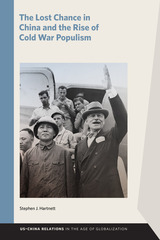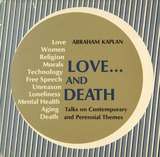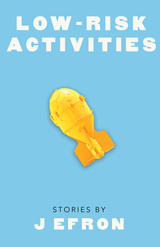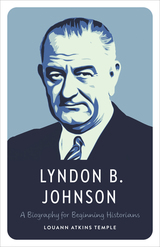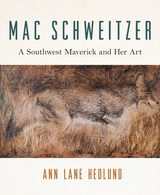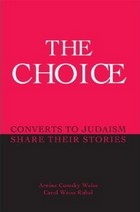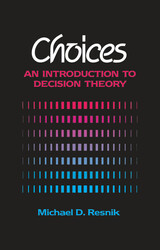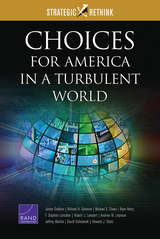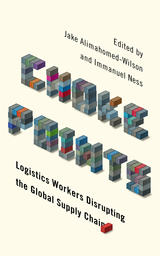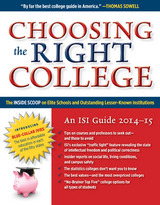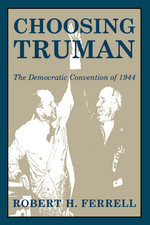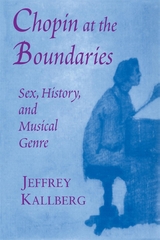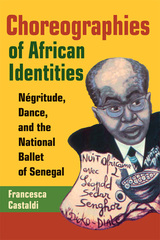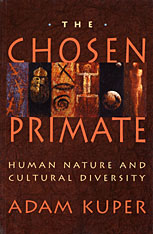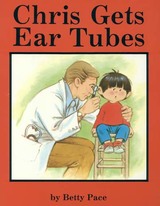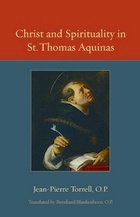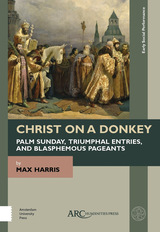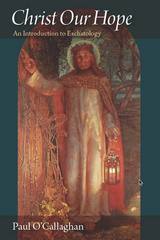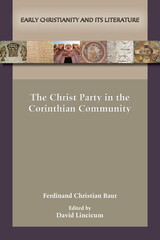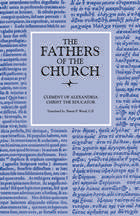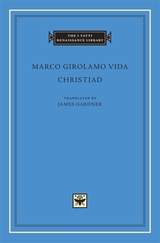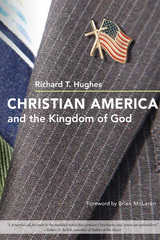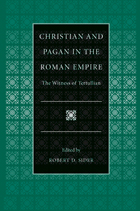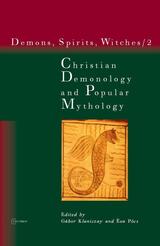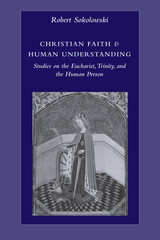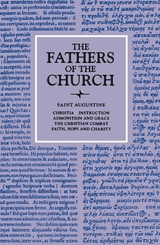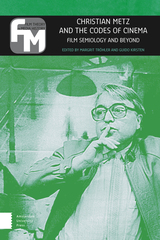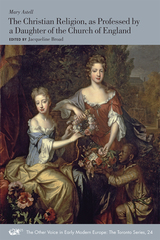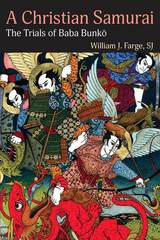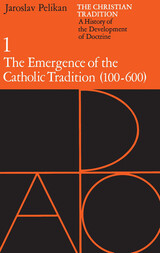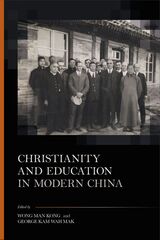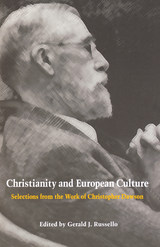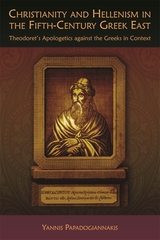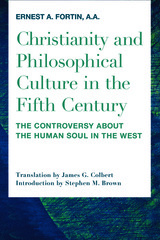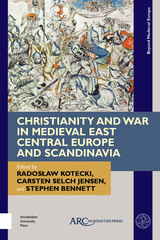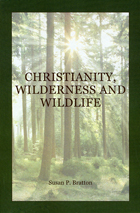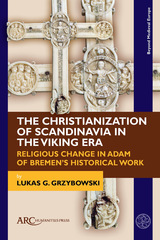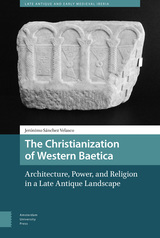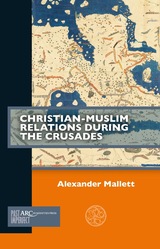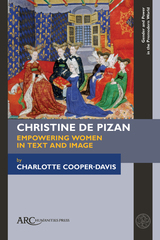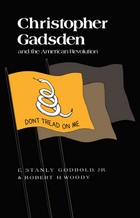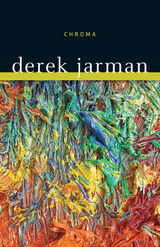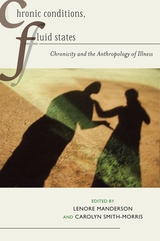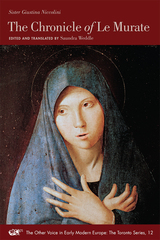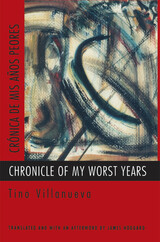The Choice: Converts to Judaism Share Their Stories
Arnine Cumsky Weiss and Carol Weiss Rubel
University of Scranton Press, 2010 In The Choice, Arnine Cumsky Weiss and Carol Weiss Rubel present the stories of forty-five converts to Judaism. These reflective narratives demonstrate that no two converts’ experiences are alike, yet most share some common characteristics: a spiritual uneasiness, fear, doubt, and a gradual development of spiritual and intellectual understanding and acceptance of conversion. The stories in The Choice will be a source of inspiration and affirmation for anyone who is struggling with a conversion decision or knows someone who is.
 A Choice of Inheritance: Self and Community from Edmund Burke to Robert Frost
David Bromwich
Harvard University Press, 1989 For the last two centuries, literature has tested the authority of the individual and the community. During this time, in David Bromwich’s words, “A motive for great writing…has been a tension, which is felt to be unresolvable, between the claims of social obligation and of personal autonomy. That these had to be experienced as rival claims was the discovery of Burke and Wordsworth. Our lives today and our choices are made in a culture where any settlement of the contest for either side is bound to be provisional. There is nothing to approve or regret in such a situation; it is the way things are; and in a time like ours, it is what great writing lives on.”
With a historical as well as an interpretative emphasis, Bromwich explores this tension. He shows why the public-mindedness of the eighteenth century is as limited a model for readers now as the individualism of the nineteenth century. Calling attention to the ambivalence of the great writers, he cites Emerson’s sense of the conflict between “spirit” and “commodity” and Burke’s conviction that human nature is at once given and chosen. Elsewhere, he describes the attenuation of social concern even in the truest modern followers of the romantics as in the conscious turn away from Wordsworth’s morality in poems by Stevens and Frost. Other topics include Keats’s politics, Whitman’s prose, William Cobbett’s journalism, and the standards of the Edinburgh Review.
In some widely discussed general essays, Bromwich addresses such issues as the uses of biography, the idea that authors create their own worlds, and the political ambitions of recent literary theory. His own criticism is powerfully eclectic, combining history, philosophy, biography, and a subtle awareness of how literature performs its work of implication. He brings to the task an authentic understanding of intellectual culture and the ability to leap from textual detail to cultural observation with an understated grace.
As in his other writing, Bromwich aims to join aesthetic theory and moral thought. He rethinks the relationship between genius and talent, and defines genius in terms of its capacity to bring about change, rather than simply its quality of inward and spiritual uniqueness. His sustained defense here of that conception, and his elegant argument for a new approach to criticism generally, make this thoughtful book a controversial one as well.
 The Choice of the Jews under Vichy: Between Submission and Resistance
Adam Rayski
University of Notre Dame Press, 2005 In The Choice of the Jews under Vichy, Adam Rayski buttresses his analysis of war-era archival materials with his own personal testimony. His research in the archives of the military, the Central Consistory of the Jews of France, the police, and Philippe Pétain demonstrates the Vichy government's role as a zealous accomplice in the Nazi program of genocide. He documents the efforts and absence of efforts of French Protestant and Catholic groups on behalf of their Jewish countrymen; he also explores the prewar divide between French-born and immigrant Jews, manifested in cultural conflicts and mutual antagonism as well as in varied initial responses to Vichy's antisemitic edicts and actions. Rayski reveals how these Jewish communities eventually set aside their differences and united to resist the Nazi threat.
Published in association with the United States Holocaust Memorial Museum
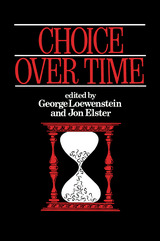 Choice Over Time
George Loewenstein
Russell Sage Foundation, 1992 Many of our most urgent national problems suggest a widespread lack of concern for the future. Alarming economic conditions, such as low national savings rates, declining corporate investment in long-term capital projects, and ballooning private and public debt are matched by such social ills as diminished educational achievement, environmental degradation, and high rates of infant mortality, crime, and teenage pregnancy. At the heart of all these troubles lies an important behavioral phenomenon: in the role of consumer, manager, voter, student, or parent, many Americans choose inferior but immediate rewards over greater long-term benefits. Choice Over Time offers a rich sampling of original research on intertemporal choice—how and why people decide between immediate and delayed consequences—from a broad range of theoretical and methodological perspectives in philosophy, political science, psychology, and economics. George Loewenstein, Jon Elster, and their distinguished colleagues review existing theories and forge new approaches to understanding significant questions: Why do people seem to "discount" future benefits? Do individuals use the same decision-making strategy in all aspects of their lives? What part is played by situational factors such as the certainty of delayed consequences? How are decisions affected by personal factors such as willpower and taste? In addressing these issues, the contributors to Choice Over Time address many social, economic, psychological, and personal time problems. Their work demonstrates the predictive power of short-term preferences in behavior as varied as addiction and phobia, the effect of prices on consumption, and the dramatic rise in debt and decline in savings. Choice Over Time provides an essential source for the most recent research and theory on intertemporal choice, offering new models for time preference patterns—and their aberrations—and presenting a diversity of potential solutions to the problem of "temporal myopia."
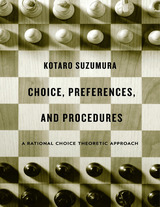 Choice, Preferences, and Procedures: A Rational Choice Theoretic Approach
Kotaro Suzumura
Harvard University Press, 2016 Kotaro Suzumura is one of the world’s foremost thinkers in social choice theory and welfare economics. Bringing together essays that have become classics in the field, Choice, Preferences, and Procedures examines foundational issues of normative economics and collective decision making.
Social choice theory seeks to critically assess and rationally design economic mechanisms for improving human life. An important part of Suzumura’s contribution over the past forty years has entailed fusion of abstract microeconomic ideas with an understanding of real-world economies in a coherent analysis. This volume of selected essays reveals the evolution of Suzumura’s thinking over his career. Groundbreaking papers explore the nature of individual and social choice and the idea of assigning value to freedom of choice, different forms of rationality, and concepts of individual rights, equity, and fairness.
Suzumura elucidates his innovative approach for recognizing interpersonal comparisons in the vein of Adam Smith’s notion of sympathy and expounds the effect of paying due attention to nonconsequential features, such as the opportunity to choose and the procedure for decision making, along with the standard consequential features. Analyzing the role of economic competition, Suzumura points out how restricting competition may, in some circumstances, improve social welfare. This is not to recommend government regulation rather than market competition but to emphasize the importance of procedural features in a competitive context. He concludes with illuminating essays on the history of economic thought, focusing on the ideas of Vilfredo Pareto, Arthur Pigou, John Hicks, and Paul Samuelson.
Choice, Welfare and Measurement
Amartya Sen
Harvard University Press, 1999 Choice, Welfare and Measurement contains many of Amartya Sen's most important contributions to economic analysis and methods, including papers on choice, preference, rationality, aggregation, and measurement. A substantial introductory essay interrelates his diverse concerns, and also analyzes discussions generated by the original papers, focusing on the underlying issues.
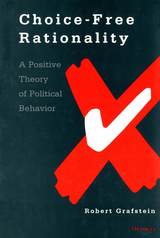 Choice-Free Rationality: A Positive Theory of Political Behavior
Robert Grafstein
University of Michigan Press, 1999 Rational choice theory has become the basis for much of the recent work done in political science. Yet explanations of many political phenomena elude rational choice theorists. Robert Grafstein offers a modification to rational choice theory that extends its ability to explain social behavior.
Grafstein argues that, instead of basing the analysis on the assumption that an actor will maximise her expected utility or her utility given the probability that the event will happen, we should define rationality as the maximisation of expected utility conditional on the probability that her act will bring the event about. This definition of utility, based on the work of Richard Jeffrey, restores the consequences of an individual's act to rational choice analysis. For example, in making a decision to vote, a conditional expected utility maximiser will compare the likelihood of victory for her preferred candidate given her own participation with the likelihood of a victory given her abstention.
The author shows the theoretical implications of this new definition of rationality and then uses it to explain certain aspects of ethnic identity and mobilization, ideology, and altruism and intertemporal choice. He then explores the implications of this idea for policy analysis and econometrics. This book will provoke a debate about how work based in rational choice theories is done.
Robert Grafstein is Professor of Political Science, University of Georgia.
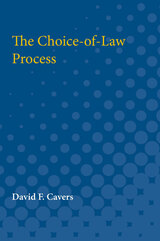 The Choice-of-Law Process
David F. Cavers
University of Michigan Press, 1981 A New York nature study society operates a camp in upstate New York. A truckload of campers goes on a nature study trip to Massachusetts. There, the truck driver's negligence seriously injures a camper. Under New York law, the camper may recover damages from the society; under Massachusetts law, the society is immune from liability. But which law is to apply? Legal scholars in twelfth-century Italian city states grappled with choice-of-law decisions, and choice of law perplexes American jurists today.In The Choice-of-Law Process David F. Cavers of Harvard Law School, after a brief historical review, discusses the far-reaching changes taking place in that process. American legal scholars writing in the last thirty years have undermined the traditional method of deciding choice-of-law cases. With increasing frequency courts are now reexamining choice-of-law process and doctrine. Cavers uses the camper's case and four other imaginary cases—before a court whose judges plainly resemble certain contemporary scholars—to illustrate methods of deciding choice-of-law cases that are currently competing for acceptance.After an evaluation of these methods, Cavers suggests the judicial development of principles of preference to guide courts in resolving "true conflicts" and submits examples of such principles. Concluding chapters consider the roles of the federal courts, statutes, treaties, and civil procedure. In this period of transition, Cavers’s book is timely and constructive.The Thomas M. Cooley Lectureship, established in honor of the University of Michigan Law School's first great legal scholar, is designed to stimulate research and bring its results to the attention of the general public as well as of the legal profession.
Choices: An Introduction to Decision Theory
Michael Resnik
University of Minnesota Press, 1987 Provides a broad yet rigorous introduction to the fundamentals of decision theory (the collection of mathematical, logical, and philosophical theories of decision making by rational individuals) that pays particular attention to matters of philosophical and logical interest.
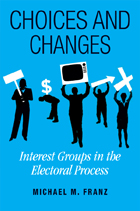 Choices and Changes: Interest Groups in the Electoral Process
Michael M. Franz
Temple University Press, 2008 Choices and Changes is the most comprehensive examination to date of the impact of interest groups on recent American electoral politics. Richly informed, theoretically and empirically, it is the first book to explain the emergence of aggressive interest group electioneering tactics in the mid-1990s—including “soft money” contributions, issue ads, and “527s” (IRS-classified political organizations). Michael Franz argues that changing political and legal contexts have clearly influenced the behavior of interest groups. To support his argument, he tracks in detail the evolution of campaign finance laws since the 1970s, examines all soft money contributions—nearly $1 billion in total—to parties by interest groups from 1991-2002, and analyzes political action committee (PAC) contributions to candidates and parties from 1983-2002. He also draws on his own interviews with campaign finance leaders. Based on this rigorous data analysis and a formidable knowledge of its subject, Choices and Changes substantially advances our understanding of the significance of interest groups in U.S. politics.
Choices for America in a Turbulent World: Strategic Rethink
James Dobbins
RAND Corporation, 2015 The first in a series exploring the elements of a national strategy for U.S. foreign policy, this book examines the most critical decisions likely to face the next president. The book covers global and regional issues and spotlights the long-term policy issues and organizational, financial, and diplomatic challenges that will confront senior U.S. officials in 2017 and beyond.
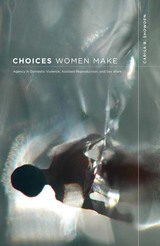 Choices Women Make: Agency in Domestic Violence, Assisted Reproduction, and Sex Work
Carisa R. Showden
University of Minnesota Press, 2010 Women’s agency: Is it a matter of an individual’s capacity for autonomy? Or of the social conditions that facilitate freedom? Combining theoretical and empirical perspectives, Carisa R. Showden investigates what exactly makes an agent and how that agency influences the ways women make inherently sensitive and difficult choices—specifically in instances of domestic violence, assisted reproduction, and sex work.
In Showden’s analysis, women’s agency emerges as an individual and social construct, rooted in concrete experience, complex and changing over time. She traces the development and deployment of agency, illustrating how it plays out in the messy workings of imperfect lives. In a series of case studies, she considers women within situations of intimate partner violence, reproductive decision making, and sex work such as prostitution and pornography. Each narrative offers insight into how women articulate their self-understanding and political needs in relation to the pressures they confront.
Showden’s understanding of women’s agency ultimately leads her to review possible policy and legal interventions that could improve the conditions within which agency develops and that could positively enhance women’s ability to increase and exercise their political and personal options.
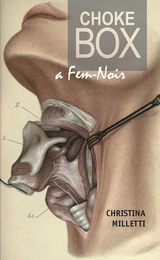 Choke Box: a Fem-Noir
Christina Milletti
University of Massachusetts Press, 2019 When Edward Tamlin disappears while writing his memoir, Jane Tamlin (his wife and the mother of his young children) begins to write a secret, corrective "counter-memoir" of her own. Calling the book Choke Box, she reveals intimate, often irreverent, details about her family and marriage, rejecting—and occasionally celebrating—her suspected role in her husband's disappearance.
Choke Box isn't Jane's first book. From her room in the Buffalo Psychiatric Institute, she slowly reveals a hidden history of the ghost authorship that has sabotaged her family and driven her to madness. Her latest work, finally written under her own name, is designed to reclaim her dark and troubled story. Yet even as Jane portrays her life as a wife, mother, and slighted artist with sardonic candor, her every word is underscored by one belief above all others: the complete truth is always a secret. But the stories we tell may help us survive—if they don't kill us first.
Choke Points: Logistics Workers Disrupting the Global Supply Chain
Edited by Jake Alimahomed-Wilson and Immanuel Ness
Pluto Press, 2017 Global capitalism is a precarious system. Relying on the steady flow of goods across the world, trans-national companies such as Wal-Mart and Amazon depend on the work of millions in docks, warehouses and logistics centres to keep their goods moving.
This is the global supply chain, and, if the chain is broken, capitalism grinds to a halt. This book looks at case studies across the world to uncover a network of resistance by these workers who, despite their importance, often face vast exploitation and economic violence.
Experiencing first hand wildcat strikes, organised blockades and boycotts, the authors explore a diverse range of case studies, from South China dockworkers to the transformation of the port of Piraeus in Greece, and from the Southern California logistics sector, to dock and logistical workers in Chile and unions in Turkey.
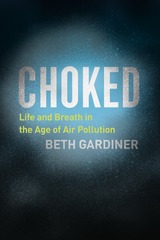 Choked: Life and Breath in the Age of Air Pollution
Beth Gardiner
University of Chicago Press, 2019 Nothing is as elemental, as essential to human life, as the air we breathe. Yet around the world, in rich countries and poor ones, it is quietly poisoning us.
Air pollution prematurely kills seven million people every year, including more than one hundred thousand Americans. It is strongly linked to strokes, heart attacks, many kinds of cancer, dementia, and premature birth, among other ailments. In Choked, Beth Gardiner travels the world to tell the story of this modern-day plague, taking readers from the halls of power in Washington and the diesel-fogged London streets she walks with her daughter to Poland’s coal heartland and India’s gasping capital. In a gripping narrative that’s alive with powerful voices and personalities, she exposes the political decisions and economic forces that have kept so many of us breathing dirty air. This is a moving, up-close look at the human toll, where we meet the scientists who have transformed our understanding of pollution’s effects on the body and the ordinary people fighting for a cleaner future.
In the United States, air is far cleaner than it once was. But progress has failed to keep up with the science, which tells us that even today’s lower pollution levels are doing real damage. And as the Trump administration rips up the regulations that have brought us where we are, decades of gains are now at risk. Elsewhere, the problem is far worse, and choking nations like China are scrambling to replicate the achievements of an American agency—the EPA—that until recently was the envy of the world.
Clean air feels like a birthright. But it can disappear in a puff of smoke if the rules that protect it are unraveled. At home and around the world, it’s never been more important to understand how progress happened and what dangers might still be in store. Choked shows us that we hold the power to build a cleaner, healthier future: one in which breathing, life’s most basic function, no longer carries a hidden danger.
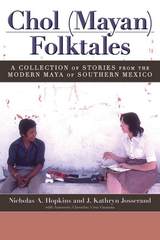 Chol (Mayan) Folktales: A Collection of Stories from the Modern Maya of Southern Mexico
Nicholas A. Hopkins
University Press of Colorado, 2016 Chol (Mayan) Folktales deftly combines high-quality and thoughtfully edited transcriptions of oral storytelling with translation and narrative analysis, documenting and analyzing a trove of Chol folklore. The work provides a look into the folktale culture of the contemporary Maya presented with a rare and innovative theoretical framework.
The rich Chol oral narrative tradition is represented by eleven stories, each printed in the original language of the storytellers with parallel English translations and accompanied by a brief introduction that provides the relevant cultural and mythological background. Included with eight of the stories is a link to an audio clip of the tale told aloud in the Chol language. In addition, Chol (Mayan) Folktales introduces a model for the analysis of narratives that can be used to demonstrate the existence of a tradition of storytelling applicable to other Maya lore, including Classic period hieroglyphic texts.
Creating a nuanced sense of the Mayan oral tradition and revealing a highly structured literary style, this collection provides insight into contemporary Maya culture as well as a greater understanding of Classic period society. It will be of interest to students and scholars of folklore and literature and to anthropologists and linguists.
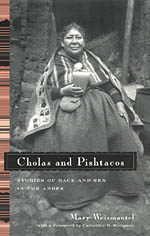 Cholas and Pishtacos: Stories of Race and Sex in the Andes
Mary Weismantel
University of Chicago Press, 2001 Winner of the 2003 Senior Book Prize from the American Ethnological Society.
Cholas and Pishtacos are two provocative characters from South American popular culture—a sensual mixed-race woman and a horrifying white killerwho show up in everything from horror stories and dirty jokes to romantic novels and travel posters. In this elegantly written book, these two figures become vehicles for an exploration of race, sex, and violence that pulls the reader into the vivid landscapes and lively cities of the Andes. Weismantel's theory of race and sex begins not with individual identity but with three forms of social and economic interaction: estrangement, exchange, and accumulation. She maps the barriers that separate white and Indian, male and female-barriers that exist not in order to prevent exchange, but rather to exacerbate its inequality.
Weismantel weaves together sources ranging from her own fieldwork and the words of potato sellers, hotel maids, and tourists to classic works by photographer Martin Chambi and novelist José María Arguedas. Cholas and Pishtacos is also an enjoyable and informative introduction to a relatively unknown region of the Americas.
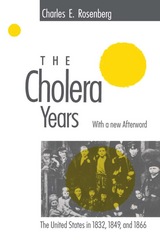 The Cholera Years: The United States in 1832, 1849, and 1866
Charles E. Rosenberg
University of Chicago Press, 1987 Cholera was the classic epidemic disease of the nineteenth century, as the plague had been for the fourteenth. Its defeat was a reflection not only of progress in medical knowledge but of enduring changes in American social thought. Rosenberg has focused his study on New York City, the most highly developed center of this new society. Carefully documented, full of descriptive detail, yet written with an urgent sense of the drama of the epidemic years, this narrative is as absorbing for general audiences as it is for the medical historian. In a new Afterword, Rosenberg discusses changes in historical method and concerns since the original publication of The Cholera Years.
"A major work of interpretation of medical and social thought . . . this volume is also to be commended for its skillful, absorbing presentation of the background and the effects of this dread disease."—I.B. Cohen, New York Times
"The Cholera Years is a masterful analysis of the moral and social interest attached to epidemic disease, providing generally applicable insights into how the connections between social change, changes in knowledge and changes in technical practice may be conceived."—Steven Shapin, Times Literary Supplement
"In a way that is all too rarely done, Rosenberg has skillfully interwoven medical, social, and intellectual history to show how medicine and society interacted and changed during the 19th century. The history of medicine here takes its rightful place in the tapestry of human history."—John B. Blake, Science
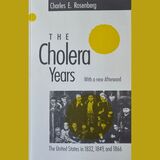 The Cholera Years: The United States in 1832, 1849, and 1866
Charles E. Rosenberg
University of Chicago Press, 1987 This is an auto-narrated audiobook version of this book.
Cholera was the classic epidemic disease of the nineteenth century, as the plague had been for the fourteenth. Its defeat was a reflection not only of progress in medical knowledge but of enduring changes in American social thought. Rosenberg has focused his study on New York City, the most highly developed center of this new society. Carefully documented, full of descriptive detail, yet written with an urgent sense of the drama of the epidemic years, this narrative is as absorbing for general audiences as it is for the medical historian. In a new Afterword, Rosenberg discusses changes in historical method and concerns since the original publication of The Cholera Years.
"A major work of interpretation of medical and social thought . . . this volume is also to be commended for its skillful, absorbing presentation of the background and the effects of this dread disease."—I.B. Cohen, New York Times
"The Cholera Years is a masterful analysis of the moral and social interest attached to epidemic disease, providing generally applicable insights into how the connections between social change, changes in knowledge and changes in technical practice may be conceived."—Steven Shapin, Times Literary Supplement
"In a way that is all too rarely done, Rosenberg has skillfully interwoven medical, social, and intellectual history to show how medicine and society interacted and changed during the 19th century. The history of medicine here takes its rightful place in the tapestry of human history."—John B. Blake, Science
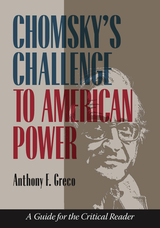 Chomsky's Challenge to American Power: A Guide for the Critical Reader
Anthony F. Greco
Vanderbilt University Press, 2013 Noam Chomsky is a pioneering scholar in the field of linguistics, but he is better known as a public intellectual: an iconoclastic, radical critic of US politics and foreign policy. Chomsky's Challenge examines most of the major subjects Chomsky has dealt with in his nearly half century of intellectual activism--the Vietnam War, America's broader international role (especially its interventions in the Third World), the structure of power in American politics, the role of the media and of intellectuals in forming public opinion, and American foreign policy in the post-Cold War world.
Chomsky is as controversial as he is influential. Admirers see him as a courageous teller of unpleasant truths about political power and those who wield it in the United States. Critics view him as a propagandist and ideologue who sees only black and white where there are multiple shades of gray. While Chomsky's fans tend to view him uncritically, his critics often don't take him seriously. Unlike any previous work, this book takes Chomsky seriously while treating him critically. The author gives Chomsky credit for valuable contributions to our understanding of the contemporary political world, but spares no criticism of the serious deficiencies he sees in Chomsky's political analyses.
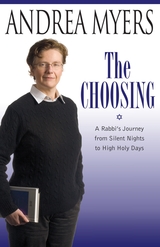 The Choosing: A Rabbi's Journey from Silent Nights to High Holy Days
Myers, Andrea
Rutgers University Press, 2011 A young Lutheran girl grows up on Long Island, New York. She aspires to be a doctor, and is on the fast track to marriage and the conventional happily-ever-after. But, as the Yiddish saying goes, "Man plans, and God laughs." Meet Andrea Myers, whose coming-of-age at Brandeis, conversion to Judaism, and awakening sexual identity make for a rich and well-timed life in the rabbinate. In The Choosing, Myers fuses heartwarming anecdotes with rabbinic insights and generous dollops of humor to describe what it means to survive and flourish on your own terms. Portioned around the cycle of the Jewish year, with stories connected to each of the holidays, Myers draws on her unique path to the rabbinate--leaving behind her Christian upbringing, coming out as a lesbian, discovering Judaism in college, moving to Israel, converting, and returning to New York to become a rabbi, partner, and parent. Myers relates tales of new beginnings, of reinventing oneself, and finding oneself. Whether it's a Sicilian grandmother attempting to bake hamantaschen on Purim for her Jewish granddaughter, or an American in Jerusalem saving a chicken from slaughter during a Rosh Hashanah ritual, Myers keeps readers entertained as she reflects that spirituality, goodness, and morality can and do take many forms. Readers will enthusiastically embrace stories of doors closing and windows opening, of family and community, of integration and transformation. These captivating narratives will resonate and, in the author's words, "reach across coasts, continents, and generations."
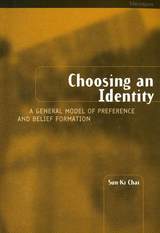 Choosing an Identity: A General Model of Preference and Belief Formation
Sun-Ki Chai
University of Michigan Press, 2001 Social science research is fragmented by the widely differing and seemingly contradictory approaches used by the different disciplines of the social sciences to explain human action. Attempts at integrating different social science approaches to explain action have often been frustrated by the difficulty of incorporating cultural assumptions into rational choice theories without robbing them of their generality or making them too vague for predictions. Another problem has been the major disagreements among cultural theorists regarding the ways in which culture affects preferences and beliefs.
This book provides a general model of preference and belief formation, addressing the largest unresolved issue in rational choice theories of action. It attempts to play a bridging role between these approaches by augmenting and modifying the main ideas of the "rational choice" model to make it more compatible with empirical findings in other fields. The resulting model is used to analyze three major unresolved issues in the developing world: the sources of a government's economic ideology, the origins of ethnic group boundaries, and the relationship between modernization and violence.
Addressing theoretical problems that cut across numerous disciplines, this work will be of interest to a diversity of theoretically-minded scholars.
Sun-Ki Chai is Assistant Professor of Sociology, University of Arizona.
 Choosing Books for Children: A COMMONSENSE GUIDE
Betsy Hearne with Deborah Stevenson
University of Illinois Press, 1999 If you have ever stood in the children's section of a bookstore or library wondering how to go about matching a book to the age, abilities, and interests of a particular child, Choosing Children's Books is for you. Renowned children's librarian and children's book review editor Betsy Hearne offers practical guidance on sorting through the bewildering array of picture books, pop-up books, books for beginning readers, young adult titles, classics, poetry, folktales, and factual books. Each chapter includes an annotated list of recommended titles. A gold mine of commonsense, sound advice, this newly revised and completely updated edition of Betsy Hearne's classic guide is an indispensable tool for choosing books for children of all ages. Newly available in paperback, this revised and updated third edition of Betsy Hearne's classic guide stands as the lodestar for navigating through the bewildering array of books for young readers. Hearne surveys everything from picture books, pop-up books, classics, and books for beginning readers to young adult titles, poetry, folktales, and factual books, with an annotated list of recommended titles accompanying each chapter. A gold mine of common sense and sound advice, her guide remains an indispensable tool for choosing books for children of all ages.
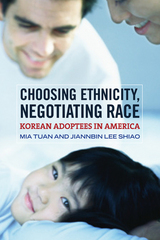 Choosing Ethnicity, Negotiating Race: Korean Adoptees in America
Mia Tuan
Russell Sage Foundation, 2011 Transnational adoption was once a rarity in the United States, but Americans have been choosing to adopt children from abroad with increasing frequency since the mid-twentieth century. Korean adoptees make up the largest share of international adoptions—25 percent of all children adopted from outside the United States—but they remain understudied among Asian American groups. What kind of identities do adoptees develop as members of American families and in a cultural climate that often views them as foreigners? Choosing Ethnicity, Negotiating Race is the only study of this unique population to collect in-depth interviews with a multigenerational, random sample of adult Korean adoptees. The book examines how Korean adoptees form their social identities and compares them to native-born Asian Americans who are not adopted. How do American stereotypes influence the ways Korean adoptees identify themselves? Does the need to explore a Korean cultural identity—or the absence of this need—shift according to life stage or circumstance? In Choosing Ethnicity, Negotiating Race, sixty-one adult Korean adoptees—representing different genders, social classes, and communities—reflect on early childhood, young adulthood, their current lives, and how they experience others' perceptions of them. The authors find that most adoptees do not identify themselves strongly in ethnic terms, although they will at times identify as Korean or Asian American in order to deflect questions from outsiders about their cultural backgrounds. Indeed, Korean adoptees are far less likely than their non-adopted Asian American peers to explore their ethnic backgrounds by joining ethnic organizations or social networks. Adoptees who do not explore their ethnic identity early in life are less likely ever to do so—citing such causes as general aversion, lack of opportunity, or the personal insignificance of race, ethnicity, and adoption in their lives. Nonetheless, the choice of many adoptees not to identify as Korean or Asian American does not diminish the salience of racial stereotypes in their lives. Korean adoptees must continually navigate society's assumptions about Asian Americans regardless of whether they chose to identify ethnically. Choosing Ethnicity, Negotiating Race is a crucial examination of this little-studied American population and will make informative reading for adoptive families, adoption agencies, and policymakers. The authors demonstrate that while race is a social construct, its influence on daily life is real. This book provides an insightful analysis of how potent this influence can be—for transnational adoptees and all Americans.
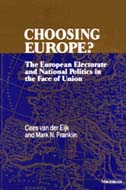 Choosing Europe?: The European Electorate and National Politics in the Face of Union
Cees van der Eijk and Mark N. Franklin
University of Michigan Press, 1996
This is a book about elections to the European Parliament, their failure to legitimate and control the exercise of power in the European Union, and the consequences of this failure for domestic politics in EU member states. It also sheds new light on why voters behave the way they do. The authors examine the 1989 Europe-wide elections with the aid of large-scale surveys fielded in all twelve member countries of the (then) European Community--placing European citizens within their institutional, political, economic, and social contexts. In particular, because three countries held national elections concurrently with the 1989 European elections, the study controls for the presence or absence of a national election context--permitting the authors to investigate electoral behavior in general, not just at European elections. Looking at such behavior while taking account of the strategic contexts within which elections are held has yielded new insights about turnout and party choice, while clarifying the crisis of legitimacy that faces the European Union. The more recent Europe-wide elections of 1994 are used to validate the findings.
This book will be of interest to political scientists interested in elections, the European Union, comparative politics, and political development.
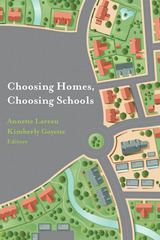 Choosing Homes, Choosing Schools
Annette Lareau
Russell Sage Foundation, 2014 A series of policy shifts over the past decade promises to change how Americans decide where to send their children to school. In theory, the boom in standardized test scores and charter schools will allow parents to evaluate their assigned neighborhood school, or move in search of a better option. But what kind of data do parents actually use while choosing schools? Are there differences among suburban and urban families? How do parents’ choices influence school and residential segregation in America? Choosing Homes, Choosing Schools presents a breakthrough analysis of the new era of school choice, and what it portends for American neighborhoods. The distinguished contributors to Choosing Homes, Choosing Schools investigate the complex relationship between education, neighborhood social networks, and larger patterns of inequality. Paul Jargowsky reviews recent trends in segregation by race and class. His analysis shows that segregation between blacks and whites has declined since 1970, but remains extremely high. Moreover, white families with children are less likely than childless whites to live in neighborhoods with more minority residents. In her chapter, Annette Lareau draws on interviews with parents in three suburban neighborhoods to analyze school-choice decisions. Surprisingly, she finds that middle- and upper-class parents do not rely on active research, such as school tours or test scores. Instead, most simply trust advice from friends and other people in their network. Their decision-making process was largely informal and passive. Eliot Weinginer complements this research when he draws from his data on urban parents. He finds that these families worry endlessly about the selection of a school, and that parents of all backgrounds actively consider alternatives, including charter schools. Middle- and upper-class parents relied more on federally mandated report cards, district websites, and online forums, while working-class parents use network contacts to gain information on school quality. Little previous research has explored what role school concerns play in the preferences of white and minority parents for particular neighborhoods. Featuring innovative work from more than a dozen scholars, Choosing Homes, Choosing Schools adroitly addresses this gap and provides a firmer understanding of how Americans choose where to live and send their children to school.
 Choosing Life: A Dialogue on Evangelium Vitae
Kevin Wm. Wildes, SJ, and Alan Mitchell, Editors
Georgetown University Press, 1997 Evangelium Vitae, or "The Gospel of Life," Pope John Paul II's 1995 encyclical, addresses practical moral questions that touch on the sacredness of human life: abortion, euthanasia and assisted suicide, and capital punishment. Tackling major moral and cultural ideas, the Pope urged "all men and women of good will" to embrace a "culture of life" instead of the prevailing "culture of death." In this book, scholars from a wide range of disciplines—law, medicine, philosophy, and theology—and various religious perspectives discuss and interpret the Pope's teachings on these complex moral issues. The opening essays establish a context for the encyclical in the moral thought of John Paul II and examine issues of methodology and ecclesiology. A second group considers the themes of law and technology, which are crucial to the way the encyclical views the specific matters of life and death. The final section turns to the specific topics of abortion, euthanasia, assisted suicide, medical experimentation, and capital punishment. Seeking to promote discussion between the ideas of the encyclical and other points of view, this volume does not attempt to endorse Evangelium Vitae but rather to illustrate its relevance to both private choice and public policy. It will serve as a foundation for further dialogue and allow others to approach the pontiff's thought with new awareness and insight.
 Choosing Medical Care in Old Age: What Kind, How Much, When to Stop
Muriel R. Gillick M.D.
Harvard University Press, 1994 You are old, ill, in pain, and your doctor asks you what you want to do about it. You may be uncertain but you're definitely not alone. By the year 2020, some 50 million Americans will be over sixty-five, and as the nation ages we must all ask what we ought to do about the health and medical care of our elderly. Our response will have profound consequences, not just for individuals and families, but for society as a whole. This book helps us start to form an answer.
To make decisions about medical care in old age, we need to know more about the reality of being elderly and sick, and Choosing Medical Care in Old Age gives us the opportunity. Muriel Gillick, a noted physician who specializes in the care of the elderly and in medical ethics, presents a panoply of stories drawn from her clinical experience. These encounters, with the robust and the frail, the demented and the dying, capture the texture of the experience of being old and faced with critical medical questions. From the stories of older people struggling to make choices in the face of acute illness, stories that are often poignant and sometimes tragic, Gillick develops broad guidelines for medical decision–making for the elderly. Within this framework, she confronts particular concerns and questions. When are certain procedures too burdensome to be justified? What are unacceptable risks? Should family members serve as exclusive spokespersons for relatives who can no longer speak for themselves? Gillick's bold and personal prescription for medical care for the elderly calls for a change in the way medicine is understood and practiced, as well as for changes in the institutions that serve the elderly, such as hospitals and nursing homes. An intelligent and deeply compassionate inquiry into the difficult issues and real–life dilemmas raised by current practices, her book offers a first step toward those changes.
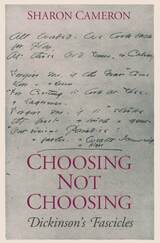 Choosing Not Choosing
Sharon Cameron
University of Chicago Press, 1992 Although Emily Dickinson copied and bound her poems into manuscript notebooks, in the century since her death her poems have been read as single lyrics with little or no regard for the context she created for them in her fascicles. Choosing Not Choosing is the first book-length consideration of the poems in their manuscript context. Sharon Cameron demonstrates that to read the poems with attention to their placement in the fascicles is to observe scenes and subjects unfolding between and among poems rather than to think of them as isolated riddles, enigmatic in both syntax and reference. Thus Choosing Not Choosing illustrates that the contextual sense of Dickinson is not the canonical sense of Dickinson.
Considering the poems in the context of the fascicles, Cameron argues that an essential refusal of choice pervades all aspects of Dickinson's poetry. Because Dickinson never chose whether she wanted her poems read as single lyrics or in sequence (nor is it clear where any fascicle text ends, or even how, in context, a poem is bounded), "not choosing" is a textual issue; it is also a formal issue because Dickinson refused to chose among poetic variants; it is a thematic issue; and, finally, it is a philosophical one, since what is produced by "not choosing" is a radical indifference to difference. Extending the readings of Dickinson offered in her earlier book Lyric Time, Cameron continues to enlarge our understanding of the work of this singular American poet.
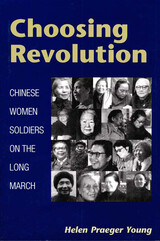 Choosing Revolution: Chinese Women Soldiers on the Long March
Helen Praeger Young
University of Illinois Press, 2001 Some two thousand women participated in the Long March, but their experience of this seminal event in the history of Communist China is rarely represented. In Choosing Revolution, Helen Praeger Young presents her interviews with twenty-two veterans of the Red Army's legendary 6,000-mile "retreat to victory" before the advancing Nationalist Army.
Enormously rich in detail, Young's Choosing Revolution reveals the complex interplay between women's experiences and the official, almost mythic version of the Long March. In addition to their riveting stories of the march itself, Young's subjects reveal much about what it meant in China to grow up female and, in many cases, poor during the first decades of the twentieth century. In speaking about the work they did and how they adapted to the demands of being a soldier, these women--both educated individuals who were well-known leaders and illiterate peasants--reveal the Long March as only one of many segments of the revolutionary paths they chose.
Against a background of diverse perspectives on the Long March, Young presents the experiences of four women in detail: one who brought her infant daughter with her on the Long March, one who gave birth during the march, one who was a child participant, and one who attended medical school during the march. Young also includes the stories of three women who did not finish the Long March. Her unique record of ordinary women in revolutionary circumstances reveals the tenacity and resilience that led these individuals far beyond the limits of most Chinese women's lives.
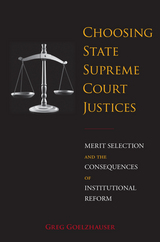 Choosing State Supreme Court Justices: Merit Selection and the Consequences of Institutional Reform
Greg Goelzhauser
Temple University Press, 2016 Since 1940, more than half of all states have switched at least in part from popular election or elite appointment to experiment with merit selection in choosing some or all of their state supreme court justices. Under merit selection, a commission—often comprising some combination of judges, attorneys, and the general public—is tasked with considering applications from candidates vying to fill a judicial vacancy. Ostensibly, the commission forwards the best candidates to the governor, who ultimately appoints them. Presently, numerous states are debating whether to adopt or abolish merit selection. In his short, sharp book, Choosing State Supreme Court Justices, Greg Goelzhauser utilizes new data on more than 1,500 state supreme court justices seated from 1960 through 2014 to answer the question, Does merit selection produce better types of judges? He traces the rise of merit selection and explores whether certain judicial selection institutions favor candidates who have better qualifications, are more diverse, and have different types of professional experience. Goelzhauser’s results ultimately contribute to the broader debate concerning comparative institutional performance with respect to state judicial selection.
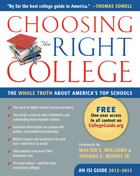 Choosing the Right College 2012-13: The Whole Truth about America’s Top Schools
John Zmirak
Intercollegiate Studies Institute, 2011
"Practically every aspect of university life that a potential student would want to investigate can be found within these pages.”
——THOMAS E. WOODS JR., Ph.D., bestselling author of Meltdown
“Easily the best of the college guides” (American Spectator) . . . “Indispensable” (First Things,/i>) . . . “An excellent guide” (National Review) . . . “Of great value” (New York Post) . . . “A godsend” (National Catholic Register) . . . “An essential reference” (Homeschool Magazine) . . . “A must for parents” (Dr. Laura Schlessinger) . . . “Unmatched” (Christina Hoff Sommers) . . .
That’s just a sampling of the overwhelming praise for Choosing the Right College, the most in-depth, independently researched college guide on the market, and the only source for students and parents who want the unvarnished truth about America’s top colleges and universities.
Updated and expanded, Choosing the Right College 2012-13 features incisive essays, telling statistics, and revealing sidebars on 140 schools—Ivy League institutions, state universities, liberal arts colleges, religious schools, military academies, and lesser-known schools worth a careful look.
Here you’ll discover information you can’t get anywhere else about the intellectual, political, and social conditions at each institution, including:
•Insider tips on the best—and worst—departments, courses, and professors
•The statistics that colleges don’t want you to know
•A unique “traffic light” feature—red, yellow, or green—that reveals the state of intellectual freedom and the extent of political correctness on campus
•The truth about day-to-day student life: the social scene, living arrangements, campus safety, clubs, sports, traditions, and much more
•A roadmap for getting a real education at any school, whether a huge state university or a tiny liberal arts college
•Essential financial information, including the extent of need-based financial aid and the average student-debt load of graduates
•The most overpriced colleges—and the good values you don’t know about
Plus, you’ll get a FREE one-year subscription to the companion website , which profiles dozens more schools and offers special “top five” lists, expert tips on handling the admissions process, an “Ask the Editors” feature, guides to navigating the college experience, videos featuring students and recent alumni, and much more.
Choosing the Right College provides all the answers you’ll need to make one of life’s crucial decisions. Visit www.CollegeGuide.org
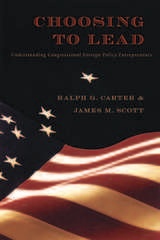 Choosing to Lead: Understanding Congressional Foreign Policy Entrepreneurs
Ralph G. Carter and James M. Scott
Duke University Press, 2009 Shedding new light on how U.S. foreign policy is made, Ralph G. Carter and James M. Scott focus on “congressional foreign policy entrepreneurs,” the often unrecognized representatives and senators who take action on foreign policy matters rather than waiting for the executive branch to do so. These proactive members of Congress have undertaken many initiatives, including reaching out to Franco’s Spain, promoting détente with the Soviet Union, proposing the return of the Panama Canal, seeking to ban military aid to Pinochet’s regime in Chile, pushing for military intervention in Haiti, and championing the recognition of Vietnam. In Choosing to Lead, Carter and Scott examine the characteristics, activities, and impact of foreign policy entrepreneurs since the end of the Second World War. In so doing, they show not only that individual members of Congress have long influenced the U.S. foreign policy-making process, but also that the number of foreign policy entrepreneurs has grown over time. Carter and Scott combine extensive quantitative analysis, interviews with members of Congress and their staff, and case studies of key foreign policy entrepreneurs, including Frank Church, William Fulbright, Jesse Helms, Edward Kennedy, Pat McCarran, and Curt Weldon. Drawing on their empirical data, the authors identify the key variables in foreign policy entrepreneurship, including membership in the Senate or House, seniority and committee assignments, majority or minority party status, choice of foreign policy issues, and the means used to influence policy. By illuminating the roles and impact of individual members of Congress, Carter and Scott contribute to a more nuanced understanding of the broader U.S. foreign policy-making process.
Choosing Truman: The Democratic Convention of 1944
Robert H. Ferrell
University of Missouri Press, 2000 As Franklin D. Roosevelt's health deteriorated in the months leading up to the Democratic National Convention of 1944, Democratic leaders confronted a dire situation. Given the inevitability of the president's death during a fourth term, the choice of a running mate for FDR was of profound importance. The Democrats needed a man they could trust. They needed Harry S. Truman. Robert Ferrell tells an engrossing tale of ruthless ambition, secret meetings, and party politics. Roosevelt emerges as a manipulative leader whose desire to retain power led to a blatant disregard for the loyalty of his subordinates and the aspirations of his vice presidential hopefuls. Startling in its conclusions, impeccable in its research, Choosing Truman is an engrossing, behind-the-scenes look at the making of the nation's thirty-third president.
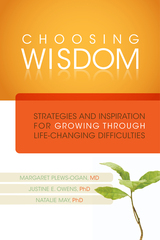 Choosing Wisdom: Strategies and Inspiration for Growing through Life-Changing Difficulties
Margaret Plews-Ogan
Templeton Press, 2012 We all know the saying, “That which does not kill us makes us stronger,” but is that really true? After all, for some people, traumatic experiences ultimately lead to genuinely debilitating outcomes. For others, though, adversity does seem to lead to “post-traumatic growth,” where individuals move through suffering and find their lives changed in positive ways. Why does this growth happen for some people and not others? How exactly does it happen? Can the positive results be purposefully replicated? These are the central questions of a new study conducted by a team of researchers at the University of Virginia. They share their findings, practical advice, and inspiring stories in their new book Choosing Wisdom and the companion PBS documentary of the same name. Based on interviews with two distinct populations—medical patients coping with chronic pain and physicians dealing with having been involved in serious medical errors—Choosing Wisdom delves into how average people respond to adversity, how they change, and what factors help or hinder positive change. Through these interviews, the authors chart each person’s journey, and though the circumstances of each case may be unique, the commonalities are remarkable.
By paying careful attention to the journeys of these exemplars, this cutting-edge research will shed new light on how we can grow, change, and develop wisdom through adversity. It is a welcome source of inspiration for those facing a difficult journey and those seeking to aid them along the way.
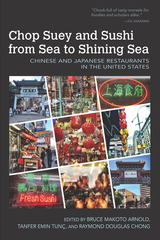 Chop Suey and Sushi from Sea to Shining Sea: Chinese and Japanese Restaurants in the United States
Bruce Makoto Arnold
University of Arkansas Press, 2018 The essays in Chop Suey and Sushi from Sea to Shining Sea fill gaps in the existing food studies by revealing and contextualizing the hidden, local histories of Chinese and Japanese restaurants in the United States. The writer of these essays show how the taste and presentation of Chinese and Japanese dishes have evolved in sweat and hardship over generations of immigrants who became restaurant owners, chefs, and laborers in the small towns and large cities of America. These vivid, detailed, and sometimes emotional portrayals reveal the survival strategies deployed in Asian restaurant kitchens over the past 150 years and the impact these restaurants have had on the culture, politics, and foodways of the United States. Some of these authors are family members of restaurant owners or chefs, writing with a passion and richness that can only come from personal investment, while others are academic writers who have painstakingly mined decades of archival data to reconstruct the past. Still others offer a fresh look at the amazing continuity and domination of the “evil Chinaman” stereotype in the “foreign” world of American Chinatown restaurants. The essays include insights from a variety of disciplines, including history, sociology, anthropology, ethnography, economics, phenomenology, journalism, food studies, and film and literary criticism. Chop Suey and Sushi from Sea to Shining Sea not only complements the existing scholarship and exposes the work that still needs to be done in this field, but also underscores the unique and innovative approaches that can be taken in the field of American food studies.
Chopin at the Boundaries: Sex, History, and Musical Genre
Jeffrey Kallberg
Harvard University Press The complex status of Chopin in our culture--he was a native Pole and adopted Frenchman, and a male composer writing in "feminine" genres--is the subject of Jeffrey Kallberg's absorbing book. Combining social history, literary theory, musicology, and feminist thought, Chopin at the Boundaries is the first book to situate Chopin's music within the construct of his somewhat marginal sexual identity and to explore how this should figure in our understanding of his compositional methods. Through this novel approach, Kallberg reveals a new Chopin, one situated precisely where questions of gender open up into the very important question of genre.
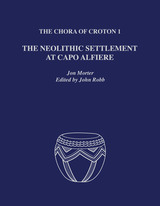 The Chora of Croton 1: The Neolithic Settlement at Capo Alfiere
By Jon Morter
University of Texas Press, 2010 From 1974 to the present, the Institute of Classical Archaeology (ICA) at the University of Texas at Austin has carried out archaeological excavations and surveys in ancient territories (chorae) in southern Italy. This wide-ranging investigation, which covers a large number of sites and a time period ranging from prehistory to the Middle Ages, has unearthed a wealth of new information about ancient rural economies and cultures in the region. These discoveries will be published in two multivolume series (Metaponto and Croton). This volume on the Neolithic settlement at Capo Alfiere is the first in the Croton series. The Chora of Croton 1 reports the excavation results of a remarkable Neolithic site at Capo Alfiere on the Ionian coast. Capo Alfiere is one of a very few early inhabitation sites in this area to have been excavated extensively, with a full team of scientific specialists providing interdisciplinary studies on early farming and animal husbandry. It provides comprehensive documentation of the economy, material culture, and way of life in the central Mediterranean in the sixth and fifth millennia BC. Most notable are the remains of a wattle-and-daub hut enclosed within a massive stone wall. Unique for this area, this well-preserved structure may have been used for special purposes such as ritual, as well as for habitation. The presence of Stentinello wares shows that the range of this pottery type extended further east than previously thought and casts new light on the development of ceramics in the area.
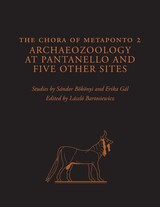 The Chora of Metaponto 2: Archaeozoology at Pantanello and Five Other Sites
Studies by Sándor Bökönyi and Erika Gál
University of Texas Press, 2010 From 1974 to the present, the Institute of Classical Archaeology at the University of Texas at Austin has carried out archaeological excavations in the ancient territory (chora) of Metaponto, now located in the modern province of Basilicata on the southern coast of Italy. This wide-ranging investigation, which covers a number of sites and a time period ranging from prehistory to the Roman Empire, has unearthed a wealth of new information about the ancient rural economy in southern Italy. These discoveries will be published in a multi-volume series titled The Chora of Metaponto. This volume on archaeozoology—the study of animal remains from archaeological sites—is the second in the series, following The Chora of Metaponto: The Necropoleis (1998). Archaeozoology at Pantanello and Five Other Sites describes the animal remains found throughout Metaponto and discusses what they reveal about ancient practices of hunting and herding, domestication and importation of new breeds, people's attitudes toward animals, and what animal remains indicate about past environments. A chapter devoted to bird bones, which are a relatively rare find because of their fragility, provides high quality information on the environment and methods of fowling, as well as on the beliefs and symbolism associated with birds. The final chapter covers tools—some simple, others sophisticated and richly decorated—made from animal bones.
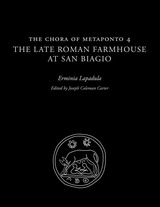 The Chora of Metaponto 4: The Late Roman Farmhouse at San Biagio
By Erminia Lapadula
University of Texas Press, 2012 This volume in the Institute of Classical Archaeology's series on rural settlements in the countryside (chora) of Metaponto presents the excavation of the Late Roman farmhouse at San Biagio. Located near the site of an earlier Greek sanctuary, this modest but well-appointed structure was an unexpected find from a period generally marked by large landholdings and monumental villas. Description of earlier periods of occupation (Neolithic and Greek) is followed by a detailed discussion of the farmhouse itself and its historical and socioeconomic context. The catalogs and analyses of finds include impressive deposits of coins from the late third and early fourth centuries AD. Use of virtual reality CAD software has yielded a deeper understanding of the architectural structure and its reconstruction. A remarkable feature is the small bath complex, with its examples of window glass. This study reveals the existence of a small but viable rural social and economic entity and alternative to the traditional image of crisis and decline during the Late Imperial period.
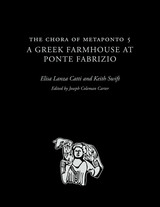 The Chora of Metaponto 5: A Greek Farmhouse at Ponte Fabrizio
By Elisa Lanza Catti, Keith Swift and Joseph Coleman Carter
University of Texas Press, 2014 This volume in the Institute of Classical Archaeology’s series on rural settlements in the countryside (chora) of Metaponto is a study of the fourth-century BC farmhouse known as Fattoria Fabrizio, located in the heart of the surveyed chora in the Venella valley (at Ponte Fabrizio). This simple structure richly illustrates the life of fourth-century BC Metapontine farmers of modest means. Thorough interpretations of the farmhouse structure in its wider historical and socioeconomic contexts are accompanied by comprehensive analyses of the archaeological finds. Among them is detailed evidence for the family cult, a rare archaeological contribution to the study of Greek religion in Magna Grecia. The entire range of local Greek ceramics has been studied, along with a limited number of imports. Together they reveal networks within the chora and trade beyond it, involving indigenous peoples of southern Italy, mainland Greeks, and the wider Mediterranean world. Along with the studies of traditional archaeological finds, archaeobotanical analyses have illuminated the rural economy of the farmhouse and the environment of the adjacent chora. Abundant Archaic pottery also documents an important occupation, during the first great flowering of the chora in the sixth century BC. This study provides an ideal complement to the four volumes of The Chora of Metaponto 3: Archaeological Field Survey—Bradano to Basento and an eloquent example of hundreds of farmhouses of this date identified throughout the chora by their surface remains alone.
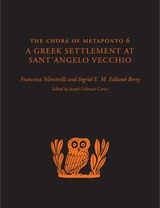 The Chora of Metaponto 6: A Greek Settlement at Sant'Angelo Vecchio
By Francesca Silvestrelli and Ingrid E. M. Edlund-Berry
Joseph Coleman Carter, Series Editor
University of Texas Press, 2016 The sixth volume in the Institute of Classical Archaeology’s series on the rural countryside (chora) of Metaponto is a study of the Greek settlement at Sant’Angelo Vecchio. Located on a slope overlooking the Basento River, the site illustrates the extraordinary variety of settlements and uses of the territory from prehistory through the current day. Excavators brought to light a Late Archaic farmhouse, evidence of a sanctuary near a spring, and a cluster of eight burials of the mid-fifth century BC, but the most impressive remains belong to a production area with kilns. Active in the Hellenistic, Late Republican, and Early Imperial periods, these kilns illuminate important and lesser-known features of production in the chora of a Greek city and also chronicle the occupation of the territory in these periods. The thorough, diachronic presentation of the evidence from Sant’Angelo Vecchio is complemented by specialist studies on the environment, landscape, and artifacts, which date from prehistory to the post-medieval period. Significantly, the evidence spans the range of Greek site types (farmhouse, necropolis, sanctuary, and production center) as well as the Greek dates (from the Archaic to Early Imperial periods) highlighted during ICA’s survey of the Metapontine chora. In this regard, Chora 6 enhances the four volumes of The Chora of Metaponto 3: Archaeological Field Survey—Bradano to Basento and provides further insight into how sites in the chora interacted throughout its history.
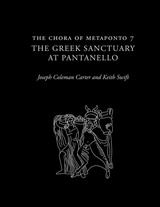 The Chora of Metaponto 7: The Greek Sanctuary at Pantanello
By Joseph Coleman Carter and Keith Swift
University of Texas Press, 2018 The seventh volume in the Institute of Classical Archaeology’s series on the rural countryside (chora) of Metaponto is a study of the Greek sanctuary at Pantanello. The site is the first Greek rural sanctuary in southern Italy that has been fully excavated and exhaustively documented. Its evidence—a massive array of distinctive structural remains and 30,000-plus artifacts and ecofacts—offers unparalleled insights into the development of extra-urban cults in Magna Graecia from the seventh to the fourth centuries BC and the initiation rites that took place within the cults. Of particular interest are the analyses of the well-preserved botanical and faunal material, which present the fullest record yet of Greek rural sacrificial offerings, crops, and the natural environment of southern Italy and the Greek world. Excavations from 1974 to 2008 revealed three major phases of the sanctuary, ranging from the Archaic to Early Hellenistic periods. The structures include a natural spring as the earliest locus of the cult, an artificial stream (collecting basin) for the spring’s outflow, Archaic and fourth-century BC structures for ritual dining and other cult activities, tantalizing evidence of a Late Archaic Doric temple atop the hill, and a farmhouse and tile factory that postdate the sanctuary’s destruction. The extensive catalogs of material and special studies provide an invaluable opportunity to study the development of Greek material culture between the seventh and third centuries BC, with particular emphasis on votive pottery and figurative terracotta plaques.
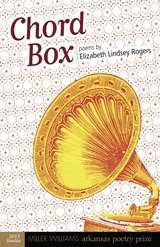 Chord Box: Poems
Elizabeth Lindsey Rogers
University of Arkansas Press, 2013 In her first book, Chord Box, Elizabeth Lindsey Rogers envisions a world where each place is best known by its sound. Weaving complex junctions between music, speech, the body, and sexuality, these poems trace the arc of adolescence and early adulthood, rooting themselves in gritty landscapes of the South and Appalachia, China and its borderlands. Part narrative and part lyric, Rogers's poems make use of the whole field of the page, assembling an innovative poetic vocabulary that includes word, character, and symbol. By calling on figures from the recent as well as the distant past, this coming-of-age collection asks us to consider history, both personal and political. Whether struggling to make vibrato on the guitar or stringing together her first sentences in Mandarin, the speaker of these poems assumes the role of the eager student, edging her way toward an understanding with both fierceness and a sense of humility. Chord Box is exquisitely crafted and rich with feeling, a dazzling debut collection. Chord Box is part of the University of Arkansas Press Poetry Series, edited by Enid Shomer.
Choreographies of African Identities: Négritude, Dance, and the National Ballet of Senegal
Francesca Castaldi
University of Illinois Press, 2006 Choreographies of African Identities traces interconnected interpretative frameworks around and about the National Ballet of Senegal. Using the metaphor of a dancing circle Castaldi's arguments cover the full spectrum of performance, from production to circulation and reception. Castaldi first situates the reader in a North American theater, focusing on the relationship between dancers and audiences as that between black performers and white spectators. She then examines the work of the National Ballet in relation to Léopold Sédar Senghor's Négritude ideology and cultural politics. Finally, the author addresses the circulation of dances in the streets, discotheques, and courtyards of Dakar, drawing attention to women dancers' occupation of the urban landscape.
 Choreographies: Tracing the Materials of an Ephemeral Art Form
Jacky Lansley
Intellect Books, 2017 Choreographer Jacky Lansley has been practicing and performing for more than four decades. In Choreographies, she offers unique insight into the processes behind independent choreography and paints a vivid portrait of a rigorous practice that combines dance, performance art, visuals, and a close attention to space and site.
Choreographies is both autobiography and archive—documenting production through rehearsal and performance photographs, illustrations, scores, process notes, reviews, audience feedback, and interviews with both dancers and choreographers. Covering the author’s practice from 1975 to 2017, the book delves into an important period of change in contemporary British dance—exploring British New Dance, postmodern dance, and experimental dance outside of a canonical US context. A critically engaged reflection that focuses on artistic process over finished product, Choreographies is a much-needed resource in the fields of dance and choreographic art making.
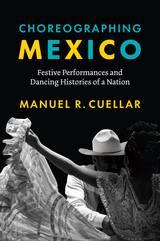 Choreographing Mexico: Festive Performances and Dancing Histories of a Nation
Manuel R. Cuellar
University of Texas Press, 2022 2023 de la Torre Bueno® First Book Award, Dance Studies Association The impact of folkloric dance and performance on Mexican cultural politics and national identity. The years between 1910 and 1940 were formative for Mexico, with the ouster of Porfirio Díaz, the subsequent revolution, and the creation of the new state. Amid the upheaval, Mexican dance emerged as a key arena of contestation regarding what it meant to be Mexican. Through an analysis of written, photographic, choreographic, and cinematographic renderings of a festive Mexico, Choreographing Mexico examines how bodies in motion both performed and critiqued the nation. Manuel Cuellar details the integration of Indigenous and regional dance styles into centennial celebrations, civic festivals, and popular films. Much of the time, this was a top-down affair, with cultural elites seeking to legitimate a hegemonic national character by incorporating traces of indigeneity. Yet dancers also used their moving bodies to challenge the official image of a Mexico full of manly vigor and free from racial and ethnic divisions. At home and abroad, dancers made nuanced articulations of female, Indigenous, Black, and even queer renditions of the nation. Cuellar reminds us of the ongoing political significance of movement and embodied experience, as folklórico maintains an important and still-contested place in Mexican and Mexican American identity today.
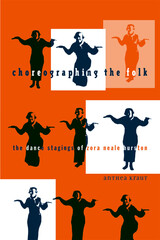 Choreographing the Folk: The Dance Stagings of Zora Neale Hurston
Anthea Kraut
University of Minnesota Press, 2008 Recovers an important dimension of the work of the renowned African American artist While Zora Neale Hurston and her 1937 novel Their Eyes Were Watching God have become widely celebrated, she was also a prolific stage director and choreographer. In the 1930s Hurston produced theatrical concerts that depicted a day in the life of a railroad work camp in Florida and featured a rousing Bahamian Fire Dance as the dramatic finale. In Choreographing the Folk, Anthea Kraut traces the significance and influence of Hurston’s little-known choreographic work. Hurston’s concerts were concrete illustrations of the “real Negro art theatre” she was eager to establish, and they compellingly demonstrate how she used the arena of performance to advance a nuanced understanding of the black diaspora. Her version of the Fire Dance was staged in a variety of venues during the 1930s. In its multiple representations, Kraut asserts, the dance raised critical issues about ownership, artistry, and authenticity. Choreographing the Folk argues for the significance of Hurston’s choreography, and with perceptiveness, sensitivity, and originality, Kraut illuminates the important and often-contested place of black folk dance in American culture.
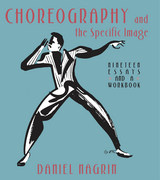 Choreography And The Specific Image
Daniel Nagrin
University of Pittsburgh Press, 2001 “The world outside has burst into the studio,” writes the influential dancer, teacher, and choreographer Daniel Nagrin. Many dancers want passionately to confront concrete, difficult subjects. But their formalistic training hasn’t prepared them for what they need to say. This book, the first on choreography approached through content rather than structure, is designed with them in mind.
Spiced with wit and strong opinions, Choreography and the Specific Image explores, in nineteen far-ranging essays, the art of choreography through the life’s work of an important artist. A career of performance, creativity, and teaching spanning five decades, Nagrin reveals the philosophy and strategy of his work with Helen Tamiris, a founder of modern American dance, and of Workgroup, his maverick improvisation company of the 1970s. During an era when many dancers were working with movement as abstraction, Nagrin turned instead toward movement as metaphor, in the belief that dance should be about something. In Choreography and the Specific Image, Nagrin shares with the next generation of dancers just how that turn was accomplished.
“It makes no sense to make dances unless you bring news,” he writes. “You bring something that a community needs, something from you: a vision, an insight, a question from where you are and what churns you up.” In a workbook following the essays, Nagrin lays out a wealth of clear, effective exercises to guide dancers toward such constructive self-discovery. Unlike all other choreography books, Nagrin addresses the concerns of both modern and commercial (show dance) choreographers. “The need to discover the inner life,” he maintains, “is what fires the motion.”
This is Nagrin’s third book of a trilogy, following Dance and the Specific Image: Improvisation and The Six Questions: Acting Technique for Dance Performance. Each focuses on a different aspect of dance—improvisation, performance, and choreography—engaging the specific image as a creative tool.
Part history, part philosophy, part nuts-and-bolts manual, Choreography and the Specific Image will be an indispensable resource for all those who care passionately about the world of dance, and the world at large.
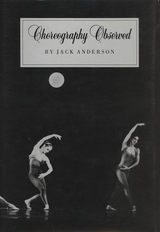 Choreography Observed
Jack Anderson
University of Iowa Press, 1997 For over twenty years Jack Anderson has been writing about dance performances. His essays and reviews have appeared in daily newspapers, specialist monthlies, and critical quarterlies. For the last ten years he has been a dance critic for the New York Times.
In Choreography Observed, Jack Anderson has selected writings that focus most directly on choreographers and choreography in order to illuminate the delights and problems of dance and to reveal the nature of this nonverbal but intensely expressive art form.
His essays and reviews deal with individual choreographers from Bournonville, Petipa, and Fokine to Balanchine, Paul Taylor, Meredith Monk, and Pina Bausch; individual works are also discussed in detail, such as Nijinsky's Afternoon of a Faun,Antony Tudor's Pillar of Fire, Alvin Ailey's Flowers, and Kei Takei's Light. Other pieces focus on the Baroque dance revival, contemporary multimedia dance theatre, choreography for men, the complex relationship between ballet and modern dance, and how—and how not—to revive the classics.
No other book—especially no other selection from the work of a single critic—has dealt with choreography in such an original and focused way. Anderson brings his trained eye and wide experience in the arts to bear on dance while stressing the primacy of the choreographer as auteur. By refusing to get bogged down in highly technical terminology, he makes his insights available to a wide range of readers interested in expanding their understanding of this ever more popular art form.
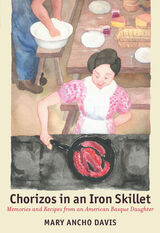 Chorizos in an Iron Skillet: Memories and Recipes from an American Basque Daughter
Mary Ancho Davis
University of Nevada Press, 2001 Mary Ancho Davis invites everyone to join her at her mother’s table as she recalls her family’s traditions and history and shares special memories from her mother Dominga’s kitchen. From huge cream puffs filled with heavy cream skimmed from the top of raw milk, to recollections of ringing the large iron triangle hanging from a tree branch outside the kitchen door, in Chorizos in an Iron Skillet,Ancho Davis offers wonderful details about life and meals on her family’s Basque ranch. In this charming cookbook, Mary Ancho Davis traces a path from Old Country traditional dishes to their modern versions as she shares her family’s recipes and details the evolution of Basque cooking in America. A personal cookbook from one Basque family, Chorizos in an Iron Skillet is also an engaging cultural study of culinary traditions that spans several generations of Basque immigration to the American West. With recipes for everything from Chicken with Chocolate and Dominga’s Basque Chorizos to Dried Apricot Pie, these Basque ranch dishes offer a multitude of delicious ideas for down-home cooking. Illustrated with photographs from the Ancho family, plus helpful advice on ingredients and cooking techniques, Chorizos in an Iron Skillet is the perfect kitchen companion for filling your home with the flavors and aromas of Basque cooking.
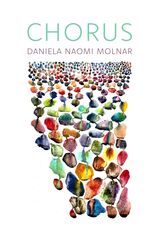 CHORUS
Daniela Naomi Molnar
Omnidawn, 2022 Poems that incorporate multiple voices to embrace fragmentation, discord, and plurality.
At a time of simultaneous isolation and interconnection, this book is an inquiry into the edges of the self. Pushing back on capitalist messages of individuality, CHORUS instead seeks the multifaceted self that engages with the radical diversity that characterizes any healthy ecosystem or society. Moving between a remote canyon in New Mexico, the Pacific Northwest, New York City, the virtual world, the past, and the unstable future, the author asks, “Whose afterimage am I?”
The sprawling, celebratory, mourning chorus of this book is the sum of many voices; the words of other writers, poets, and artists are interwoven with the author’s words. This is a celebration of language’s capacity to supersede bodily limits, mortality, and existential loneliness. Daniela Naomi Molnar’s chorus encompasses violence, love, empathy, fear, a burning planet, a pandemic, heartbreak, desire, joy, and grief. Rather than seeking resolution, these poems look through the lens of a fragmented self, dwelling in plurality, discord, and harmony.
CHORUS is the winner of Omnidawn’s 1st /2nd Book Prize, judged by Kazim Ali.
 A Chorus for Peace: A Global Anthology of Poetry by Women
Marilyn Arnold
University of Iowa Press, 2002
Women poets from around the world are gathered here to raise their voices together, to speak out against violence and its calamitous effect upon the human soul. Yet there is also a thread of resilience here, an undercurrent of hope that points to the human ability to move on, to build a new life out of a shattered past.
Each poem addresses difficult issues concerning conflict and the lives of women. Some are spirited statements that demonstrate courage even in brutal circumstances; others rage at the perpetrators of war or simply mourn their losses. Together, these works reveal a deep consciousness of both the effects of violence and the human ability to move forward.
The women whose poems appear in this collection stand for peace. Many of them have seen war and strife on fronts both national and domestic; and they write graphically and poignantly, and sometimes ironically, about conflicts external and internal that tear up their lives and the lives of their families and neighbors. They write about the victims of war and oppression: bewildered and brutalized children, bereft wives and mothers, raped and mutilated women, tormented prisoners and soldiers. And they write about victims of a seemingly failed society and victims of struggling or failed human relationships.
At the same time, these writers are also crying for peace, searching for peace, and occasionally finding peace. In their search, they point the way for the rest of us.
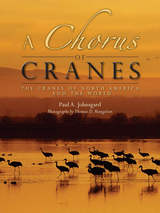 A Chorus of Cranes: The Cranes of North America and the World
Paul A. Johnsgard, Photographs by Thomas D. Mangelsen
University Press of Colorado, 2015 “Since long before medieval times cranes have been considered messengers of the gods, calling annually from on high to remind humans below of the passing years and of their own mortality. Now it is up to humans to take responsibility for controlling our own fate—and also to cry out to protect not only cranes but all the other wonderful creatures that share our increasingly fragile and threatened planetary ecosystem with us."
—Paul A. Johnsgard, from the acknowledgments
Accompanied by the stunning photography of Thomas D. Mangelsen, A Chorus of Cranes details the natural history, biology, and conservation issues surrounding the abundant sandhill crane and the endangered whooping crane in North America. Author Paul A. Johnsgard, one of the leading authorities on cranes and crane biology, describes the fascinating social behaviors, beautiful natural habitats, and grueling seasonal migrations that have stirred the hearts of people as far back as medieval times and garnered the crane a place in folklore and mythology across continents. Johnsgard has substantially updated and significantly expanded his 1991 work Crane Music, incorporating new information on the biology and status of these two North American cranes and providing abbreviated summaries on the other thirteen crane species of the world. The stories of these birds and their contrasting fates provide an instructive and moving history of bird conservation in North America. A Chorus of Cranes is a gorgeous and invaluable resource for crane enthusiasts, birders, natural historians, and conservationists alike. The University Press of Colorado gratefully acknowledges the generous support of the Iain Nicholson Audubon Center at Rowe Sanctuary, Audubon Nebraska, Ron and Judy Parks, Wagon Tongue Creek Farm, and the Trull Foundation toward the publication of this book.
 Chosen among Women: Mary and Fatima in Medieval Christianity and Shi'ite Islam
Mary F. Thurlkill
University of Notre Dame Press, 2007
Chosen among Women: Mary and Fatima in Medieval Christianity and Shi`ite Islam combines historical analysis with the tools of gender studies and religious studies to compare the roles of the Virgin Mary in medieval Christianity with those of Fatima, daughter of the prophet Muhammad, in Shi`ite Islam. The book explores the proliferation of Marian imagery in Late Antiquity through the Church fathers and popular hagiography. It examines how Merovingian authors assimilated powerful queens and abbesses to a Marian prototype to articulate their political significance and, at the same time, censure holy women's public charisma. Mary Thurlkill focuses as well on the importance of Fatima in the evolution of Shi`ite identity throughout the Middle East. She examines how scholars such as Muhammad Baqir al-Majlisi advertised Fatima as a symbol of the Shi`ite holy family and its glorified status in paradise, while simultaneously binding her as a mother to the domestic sphere and patriarchal authority.
This important comparative look at feminine ideals in both Shi`ite Islam and medieval Christianity is of relevance and value in the modern world. It will be welcomed by scholars and students of Islam, comparative religion, medieval Christianity, and gender studies.
“Thurlkill has produced a remarkable study, a model for comparative work in the history of religions. The book is original, well-researched, and shows great erudition. Thurlkill's original acumen is brought to bear on a rich and variegated topic that has for too long been ignored by specialists not willing to move beyond the confines of overly determined areas of research.“ —Brannon Wheeler, United States Naval Academy
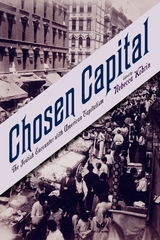 Chosen Capital: The Jewish Encounter with American Capitalism
Kobrin, Rebecca
Rutgers University Press, 2012 At which moments and in which ways did Jews play a central role in the development of American capitalism? Many popular writers address the intersection of Jews and capitalism, but few scholars, perhaps fearing this question’s anti-Semitic overtones, have pondered it openly. Chosen Capital represents the first historical collection devoted to this question in its analysis of the ways in which Jews in North America shaped and were shaped by America’s particular system of capitalism. Jews fundamentally molded aspects of the economy during the century when American capital was being redefined by industrialization, war, migration, and the emergence of the United States as a superpower.
Surveying such diverse topics as Jews’ participation in the real estate industry, the liquor industry, and the scrap metal industry, as well as Jewish political groups and unions bent on reforming American capital, such as the American Labor Party and the International Ladies’ Garment Workers’ Union, contributors to this volume provide a new prism through which to view the Jewish encounter with America. The volume also lays bare how American capitalism reshaped Judaism itself by encouraging the mass manufacturing and distribution of foods like matzah and the transformation of synagogue cantors into recording stars. These essays force us to rethink not only the role Jews played in American economic development but also how capitalism has shaped Jewish life and Judaism over the course of the twentieth century.
Contributors:
Marni Davis, Georgia State University
Phyllis Dillon, independent documentary producer, textile conservator, museum curator
Andrew Dolkart, Columbia University
Andrew Godley, Henley Business School, University of Reading
Jonathan Karp, executive director, American Jewish Historical Society
Daniel Katz, Empire State College, State University of New York
Ira Katznelson, Columbia University
David S. Koffman, New York University
Eli Lederhendler, Hebrew University, Jerusalem
Jonathan Z. S. Pollack, University of Wisconsin—Madison
Jonathan D. Sarma, Brandeis University
Jeffrey Shandler, Rutgers University
Daniel Soyer, Fordham University
 A Chosen Exile: A History of Racial Passing in American Life
Allyson Hobbs
Harvard University Press, 2014 Between the eighteenth and mid-twentieth centuries, countless African Americans passed as white, leaving behind families and friends, roots and community. It was, as Allyson Hobbs writes, a chosen exile, a separation from one racial identity and the leap into another. This revelatory history of passing explores the possibilities and challenges that racial indeterminacy presented to men and women living in a country obsessed with racial distinctions. It also tells a tale of loss.
As racial relations in America have evolved so has the significance of passing. To pass as white in the antebellum South was to escape the shackles of slavery. After emancipation, many African Americans came to regard passing as a form of betrayal, a selling of one’s birthright. When the initially hopeful period of Reconstruction proved short-lived, passing became an opportunity to defy Jim Crow and strike out on one’s own.
Although black Americans who adopted white identities reaped benefits of expanded opportunity and mobility, Hobbs helps us to recognize and understand the grief, loneliness, and isolation that accompanied—and often outweighed—these rewards. By the dawning of the civil rights era, more and more racially mixed Americans felt the loss of kin and community was too much to bear, that it was time to “pass out” and embrace a black identity. Although recent decades have witnessed an increasingly multiracial society and a growing acceptance of hybridity, the problem of race and identity remains at the center of public debate and emotionally fraught personal decisions.
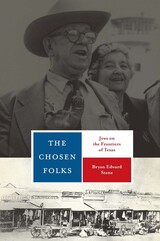 The Chosen Folks: Jews on the Frontiers of Texas
By Bryan Edward Stone
University of Texas Press, 2010 Texas has one of the largest Jewish populations in the South and West, comprising an often-overlooked vestige of the Diaspora. The Chosen Folks brings this rich aspect of the past to light, going beyond single biographies and photographic histories to explore the full evolution of the Jewish experience in Texas. Drawing on previously unpublished archival materials and synthesizing earlier research, Bryan Edward Stone begins with the crypto-Jews who fled the Spanish Inquisition in the late sixteenth century and then discusses the unique Texas-Jewish communities that flourished far from the acknowledged centers of Jewish history and culture. The effects of this peripheral identity are explored in depth, from the days when geographic distance created physical divides to the redefinitions of "frontier" that marked the twentieth century. The rise of the Ku Klux Klan, the creation of Israel in the wake of the Holocaust, and the civil rights movement are covered as well, raising provocative questions about the attributes that enabled Texas Jews to forge a distinctive identity on the national and world stage. Brimming with memorable narratives, The Chosen Folks brings to life a cast of vibrant pioneers.
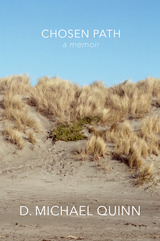 Chosen Path: A Memoir
D. Michael Quinn
Signature Books, 2022 After D. Michael Quinn’s death in April 2021, his children found his remarkable, unpublished memoir in his home and entrusted Signature Books with its publication. Relying on his journals, primary research, and reminiscences, Quinn shares his life story as few have heard it–from his father’s hiding of his true name and Mexican identity, to his upbringing by his abusive grandmother, to his choice to closet his homosexuality, to his undying commitment to his faith and its history.
From the age of nine, Quinn felt convicted he would one day serve as an apostle of the Church of Jesus Christ of Latter-day Saints. He chose the path he believed would take him there, eventually living as a straight LDS family man in a mixed-orientation marriage. In the 1970s and 1980s he became a BYU professor and one of Mormonism’s most promising, prolific, and respected historians. But his uncompromising commitment to total honesty about his religion’s history, along with his homosexuality, set him on a collision course with church leaders and the end of his seemingly idyllic Mormon life. Throughout his telling, Quinn unflinchingly opens up about his feelings and experiences that shaped his enigmatic life.
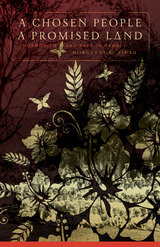 A Chosen People, a Promised Land: Mormonism and Race in Hawai’i
Hokulani K. Aikau
University of Minnesota Press, 2012 Christianity figured prominently in the imperial and colonial exploitation and dispossession of indigenous peoples worldwide, yet many indigenous people embrace Christian faith as part of their cultural and ethnic identities. A Chosen People, a Promised Land gets to the heart of this contradiction by exploring how Native Hawaiian members of the Church of Jesus Christ of Latter-Day Saints (more commonly known as Mormons) understand and negotiate their place in this quintessentially American religion. Mormon missionaries arrived in Hawai‘i in 1850, a mere twenty years after Joseph Smith founded the church. Hokulani K. Aikau traces how Native Hawaiians became integrated into the religious doctrine of the church as a “chosen people”—even at a time when exclusionary racial policies regarding black members of the church were being codified. Aikau shows how Hawaiians and other Polynesian saints came to be considered chosen and how they were able to use their venerated status toward their own spiritual, cultural, and pragmatic ends. Using the words of Native Hawaiian Latter-Day Saints to illuminate the intersections of race, colonization, and religion, A Chosen People, a Promised Land examines Polynesian Mormon articulations of faith and identity within a larger political context of self-determination.
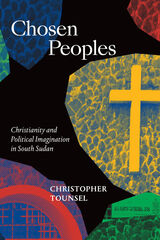 Chosen Peoples: Christianity and Political Imagination in South Sudan
Christopher Tounsel
Duke University Press, 2021 On July 9, 2011, South Sudan celebrated its independence as the world's newest nation, an occasion that the country's Christian leaders claimed had been foretold in the Book of Isaiah. The Bible provided a foundation through which the South Sudanese could distinguish themselves from the Arab and Muslim Sudanese to the north and understand themselves as a spiritual community now freed from their oppressors. Less than three years later, however, new conflicts emerged along ethnic lines within South Sudan, belying the liberation theology that had supposedly reached its climactic conclusion with independence. In Chosen Peoples, Christopher Tounsel investigates the centrality of Christian worldviews to the ideological construction of South Sudan and the inability of shared religion to prevent conflict. Exploring the creation of a colonial-era mission school to halt Islam's spread up the Nile, the centrality of biblical language in South Sudanese propaganda during the Second Civil War (1983--2005), and postindependence transformations of religious thought in the face of ethnic warfare, Tounsel highlights the potential and limitations of deploying race and Christian theology to unify South Sudan.
The Chosen Primate: Human Nature and Cultural Diversity
Adam Kuper
Harvard University Press, 1994 The great debates about human origins, cultural history, and human nature confront us with two opposing images of human beings. One view emphasizes biology, the other emphasizes culture as the foundation of human behavior. In The Chosen Primate, Adam Kuper reframes these debates and reconsiders the fundamental questions of anthropology. Balancing biological and cultural perspectives, Kuper reviews our beliefs about human origins, the history of human culture, genes and intelligence, the nature of the gender differences, and the foundations of human politics.
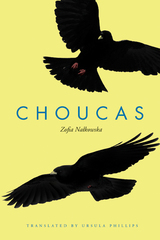 Choucas
Zofia Nalkowska
Northern Illinois University Press, 2014 The novel in Europe in the early 20th century took a decidedly inward turn, and Choucas (1927) is an intriguing example of the modernist psychological tradition. Its author, Zofia Nalkowska (1884–1954), was a celebrated Polish novelist and playwright. She rose to prominence in interwar Poland and was one of a group of early feminist writers that included Pola Gojawiczynska, Maria Dabrowska, and Maria Kuncewiczowa.
Choucas is set in the Swiss Alps in the mid-1920s in a sanatoria village near Lake Geneva. The book has an international focus, and the narrator, a polish woman, profiles a motley collection of visitors to the village and patients at the sanatorium and their interactions with each other. Among these she encounters Armenian survivors of the 1915–16 genocide who were given refuge in Switzerland. The characters are all from different countries and each represents a distinct political or religious point of view. The title is derived from the French word for a species of bird native to this region of Switzerland. Nalkowska was known for her love of nature and animals, and the birds have symbolic significance for the characters themselves. The choucas fly down from the mountain passes seeking food, while some of the characters in the novel wander around the sanatorium seeking philosophical truths.
In Choucas, there is a strong autobiographical element to the story, as Nalkowska had stayed in a sanatorium in Leysin, Switzerland, with her husband in 1925. A comparison may also be drawn with the classic novel by Thomas Mann, The Magic Mountain (1924), which has similar themes. The book delineates a fascinating time period, and the author’s concise fictional technique is strikingly innovative and groundbreaking. Choucas is a fine example of early modernist literature and is translated for the first time into English for a new generation of readers.
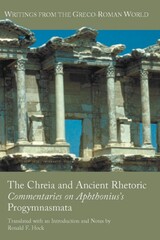 The Chreia and Ancient Rhetoric: Commentaries on Aphthonius's Progymnasmata
Ronald F. Hock
SBL Press, 2012 This book provides the first translations in English and a preliminary analysis of the commentaries on the chreia chapter in Aphthonius’s standard Progymnasmata, a classroom guide on composition. The chreia, or anecdote, was a popular form that preserved the wisdom of philosophers, kings, generals, and sophists. Aphthonius used the chreia to provide instructions on how to construct an argument and to confirm the validity of the chreia by means of an eight-paragraph essay. His treatment of this classroom exercise, however, was so brief that commentators needed to clarify, explain, and supplement what he had written as well as to situate the chreia as preparation for the study of rhetoric—the kinds of public speeches and the parts of a speech. By means of these Byzantine commentaries, we can thus see more clearly how this important form and its confirmation were taught in classrooms for over a thousand years.
Chris Gets Ear Tubes
Betty Pace
Gallaudet University Press, 1987 Chris Gets Ear Tubes explains what happens before, during, and after the surgery in language a child understands. It takes away the child’s natural fear of the unknown. The charming full-color illustrations familiarize the child with the hosptial procedures.
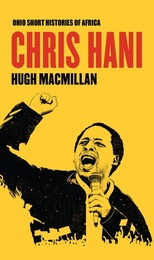 Chris Hani
Hugh Macmillan
Ohio University Press, 2021 This biography shows how Black political leader Chris Hani’s life and death were pivotal to ending apartheid and to establishing a democratic government in South Africa. Chris Hani is one of the most iconic figures in South Africa’s history, as a leader within the African National Congress (ANC) and as chief of staff of uMkhonto we Sizwe, the armed wing of the ANC. His assassination in 1993 by a far-right militant threatened negotiations to end apartheid and install a democratic government. Serious tensions followed the assassination, leading Nelson Mandela to address the nation in an effort to avert further violence: Tonight I am reaching out to every single South African, black and white, from the very depths of my being. A white man, full of prejudice and hate, came to our country and committed a deed so foul that our whole nation now teeters on the brink of disaster. A white woman, of Afrikaner origin, risked her life so that we may know, and bring to justice, this assassin. The cold-blooded murder of Chris Hani has sent shock waves throughout the country and the world… Now is the time for all South Africans to stand together against those who, from any quarter, wish to destroy what Chris Hani gave his life for: the freedom of all of us. Hugh Macmillan’s concise biography details Hani’s important role in shaping twentieth-century South African history.
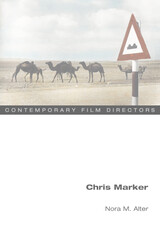 Chris Marker
Nora M. Alter
University of Illinois Press, 2006 The maverick filmmaker's personal and political relationships with film Best known in the United States for his visionary short film La Jetée, Chris Marker spearheaded the bourgeoning Nouvelle Vague scene in the late 1950s. His distinctive style and use of still images place him among the postwar era's most influential European filmmakers. His fearless political cinema, meanwhile, provided a bold model for other activist filmmakers. Nora M. Alter investigates the core themes and motivations behind an unpredictable and transnational career that defies easy classification. A photographer, multimedia artist, writer, broadcaster, producer, and organizer, Marker cultivated an artistic dynamism and always-changing identity. ""I am an essayist,"" Marker once said, and his 1953 debut filmic essay The Statues Also Die (with Alain Resnais) exposed the European art market's complicity in atrocities in the former Belgian Congo. Ranging geographically as well as artistically, Marker's travels led to films like the classic Sans Soleil and Sunday in Peking. His decades-long struggle against global injustice involved him with Night and Fog, Le Joli Mai, Far from Vietnam, Le fond du l'air est Rouge, and Prime Time in the Camps. Insightful and revealing, Chris Marker includes interviews with the notoriously private director.
 Chris Marker: Early Film Writings
Chris Marker
University of Minnesota Press, 2024 Formative writings by French avant-garde filmmaker Chris Marker
It is hard to imagine French cinema without La Jetée (1962), the time-travel short feature by the reclusive French filmmaker Christian François Bouche-Villeneuve, better known as Chris Marker. He not only influenced artists ranging from David Bowie to J. G. Ballard but also inspired the cult film 12 Monkeys. Marker’s influence expanded beyond his own films through his writings for the French monthly Esprit as well as anthologies and newly founded film publications. This first English translation of Marker’s early writings on film brings together reviews and essays, published between 1948 and 1955, that span the topics of film style, adaptation, and ideology, as well as animation and the debates surrounding 3-D and wide-screen technologies, ranging from late silent-era films to postwar Hollywood’s efforts to contend with the rise of television. Readers will find commentary on Laurence Olivier’s 1944 screen adaptation of Henry V, a scathing review of Robert Montgomery’s Lady in the Lake (1947), critiques of Walt Disney productions, a discussion of the pitfalls of prioritizing commercial success over aesthetic values, and more. An indispensable resource for cinephiles and scholars alike, these texts document the emergence of Marker’s critical voice and situate him alongside such contemporaries as André Bazin and Eric Rohmer, as well as the future French New Wave figures Jean-Luc Godard and François Truffaut. They show how his remarks on individual films open onto his engagement with films as social and cultural phenomena.
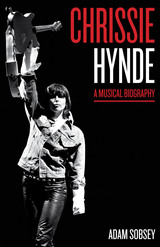 Chrissie Hynde: A Musical Biography
By Adam Sobsey
University of Texas Press, 2017 A musical force across four decades, a voice for the ages, and a great songwriter, Chrissie Hynde is one of America’s foremost rockers. Inducted into the Rock and Roll Hall of Fame in 2005, she and her band The Pretenders have released ten albums since 1980. The Pretenders’ debut LP has been acclaimed as one of the best albums of all time by VH1 and Rolling Stone. In a business filled with “pretenders” and posers, Hynde remains unassailably authentic. Although she blazed the trail for countless female musicians, Hynde has never embraced the role of rock-feminist and once remarked, “It’s never been my intention to change the world or set an example for others to follow.” Instead, she pursued her own vision of rock—a band of “motorcycles with guitars.” Chrissie Hynde: A Musical Biography traces this legend’s journey from teenage encounters with rock royalty to the publication of her controversial memoir Reckless in 2015. Adam Sobsey digs deep into Hynde’s catalog, extolling her underrated songwriting gifts and the greatness of The Pretenders’ early classics and revealing how her more recent but lesser-known records are not only underappreciated but actually key to understanding her earlier work, as well as her evolving persona. Sobsey hears Hynde’s music as a way into her life outside the studio, including her feminism, signature style, vegetarianism, and Hinduism. She is “a self-possessed, self-exiled idol with no real forbears and no true musical descendants: a complete original.”
Christ and Spirituality in St. Thomas Aquinas
Jean-Pierre Torrell
Catholic University of America Press, 2011 The studies in this volume investigate themes of particular spiritual relevance in Aquinas's theology: friendship, charity, prayer, configuration to Christ, priesthood, preaching.
Christ and the Moral Life
James M. Gustafson
University of Chicago Press, 1979 In this work, originally published in 1968, the distinguished theologian James M. Gustafson asks the fundamental question, "What is the significance of Jesus Christ for the moral life?" His answer is in the form of an ethical map, showing the ways in which theological affirmations about Christ relate to moral life in the writings of a number of important Christian thinkers.
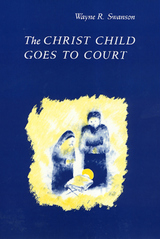 The Christ Child Goes to Court
Wayne R. Swanson
Temple University Press, 1992 In December 1981, when the American Civil Liberties Union challenged the Nativity scene in the Christmas display put on by the city of Pawtucket, Rhode Island, an emotional controversy erupted. Two federal courts disallowed the crèche because its religious impact in the taxpayer-supported display overstepped the constitutional boundary between church and state. In March 1984, the United States Supreme Court by a 5-4 vote in Lynch V. Donnelly overruled the lower courts, deciding that in the predominantly secular context of Pawtucket’s display, the purpose and effect of the Nativity scene was not to promote religion, but only to acknowledge the spirit of the holiday season. The Christ Child Goes to Court traces the judicial history of a case that lasted more than two years and explores its implications for future issues concerning the relationship between religion and government. Wayne R. Swanson describes how this compelling constitutional issue polarized public opinion in Rhode Island and generated "unimaginable vilification" of the Roman Catholic judge who first ordered the crèche removed. He reports the reactions of local citizens, which echoed the national debate on this issue. By carefully documenting the case’s trek through the judiciary, Swanson illustrates the workings of the judicial process in the United States, the political nature of the courts, and how their interpretation of the Constitution helps to shape the development of public policy. An important conclusion of this critical examination of the courts’ approach to a controversial church-state question is that judicial decisions are usually interim in nature and often lead to imperfect solutions. Lynch V. Donnelly did not solve the problems posed by government-supported Nativity scenes or other religious symbols. The controversy lives on and the courts continue to struggle with one of the most difficult First Amendment problems.
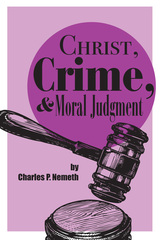 Christ, Crime, and Moral Judgment
Nemeth
St. Augustine's Press, 2025 After a career of teaching law, ethics, and the relationship between criminal activity and the moral imperative, Charles Nemeth wants to revisit the post-modern 'caricature' of the God who is so loving and merciful that one overlooks the urgency of the human requirement to be good at all times.
Nemeth traces the modern shift in considering God as judge to the God who just wants to wipe away tears. If we look in Scripture, there are harsh words for the person who dismisses moral action as less than a continual call to evaluation and conversion. One also sees the detrimental effect of granting political underpinnings to all interpretations of the Bible and its indications of what righteous action is. Nemeth asserts that not only is the measure of law worthless without a kind of hardness toward offenders, but charity itself has no backbone without justice. Restoration requires judgment, but the Judge who speaks harshly is the one who cultivates the desire for his softness. Post-modern scholars don't worry about receiving God's mercy, but they really ought to define the parameters of human responsibility. Any human attempt to define mercy and compassion on the part of God will always fall short, we ought to save our energies to live up to the moral life and take Christ as a perfect example and proof of the possibility.
Christ on a Donkey – Palm Sunday, Triumphal Entries, and Blasphemous Pageants
Max Harris
Arc Humanities Press, 2021 <I>Christ on a Donkey</I> reveals Palm Sunday processions and related royal entries as both processional theatre and highly charged interpretations of the biblical narrative. Harris’s narrative ranges from ancient Jerusalem to modern-day Bolivia, from veneration to iconoclasm, and from Christ to Ivan the Terrible. A curious theme emerges: those representations of Christ’s entry into Jerusalem that were labelled blasphemous or idolatrous by those in power were most faithful to the biblical narrative of Palm Sunday, while those that exalted power and celebrated military triumph were arguably blasphemous pageants.
The Christ Party in the Corinthian Community
Ferdinand Christian Baur
SBL Press, 2021 The Christ Party in the Corinthian Community by Ferdinand Christian Baur (1792–1860), one of the founders of modern New Testament scholarship, is now available in English for the first time. In this ground-breaking work, Baur argued for a diversity of views in the earliest strata of the Christian tradition that shaped the modern study of Paul in lasting ways. Baur's work revealed a tension between Pauline, gentile Christianity, on the one hand, and Petrine, Judaizing Christianity. In addition to Baur’s essay, this edition includes the first English translation of Ernst Käsemann's introduction to Baur's Historisch-kritische Untersuchungen zum Neuen Testament. Even if some of Baur's concrete historical results have been surpassed by subsequent scholarship, this book offers a compelling glimpse of the critical method and piercing insight into one of the shapers of modern biblical study.
Christ the Educator
Clement of Alexandria
Catholic University of America Press, 1954 No description available
Christiad
Marco Girolamo Vida
Harvard University Press, 2009 Marco Girolamo Vida (1485–1566), humanist and bishop, came to prominence as a Latin poet in the Rome of Leo X and Clement VII. It was Leo who commissioned his famous epic, the Christiad, a retelling of the life of Christ in the style of Vergil, which was eventually published in 1535. It was by far the most popular Christian epic of the Renaissance, appearing in almost forty editions before 1600. It was translated into many languages, including Croatian and Armenian, and was widely imitated by vernacular poets such as Abraham Cowley and John Milton. This translation, accompanied by extensive notes, is based on a new edition of the Latin text.
Christian America and the Kingdom of God
Richard T. Hughes
University of Illinois Press, 2012 The idea of the United States as a Christian nation is a powerful, seductive, and potentially destructive theme in American life, culture, and politics. And yet, as Richard T. Hughes reveals in this powerful book, the biblical vision of the "kingdom of God" stands at odds with the values and actions of an American empire that sanctions war instead of peace, promotes dominance and oppression instead of reconciliation, and exalts wealth and power instead of justice for the poor and needy. With extensive analysis of both Christian scripture and American history from the founding of the republic to the present day, Christian America and the Kingdom of God illuminates the devastating irony of a "Christian America" that so often behaves in unchristian ways.
 Christian America and the Kingdom of God: White Christian Nationalism from the Puritans through January 6, 2021
Richard T. Hughes and Christina Littlefield
University of Illinois Press, 2025 The myth of a Christian America fuels a powerful political force sure of its moral superiority and intent on implementing a Christian nationalist agenda. Richard T. Hughes and Christina Littlefield draw on discussions of civil religion and forms of nationalism to explore the complex legal and cultural arguments for a Christian America. The authors also provide an in-depth examination of the Bible’s words on the “chosen nation” and “kingdom of God” that Christian nationalists quote to support the idea of the US as a Christian nation. A timely new edition of the acclaimed work, Christian America and the Kingdom of God spotlights how the centuries-long pursuit of a Christian America has bred an aggressive white Christian nationalism that twists faith, unleashes unchristian behavior, and threatens the nation.
Christian and Pagan in the Roman Empire
Robert Sider
Catholic University of America Press, 2001 In this volume, Robert D. Sider undertakes a judicious pruning of the original texts and brings a fresh accessibility to the important writings of Tertullian.
 Christian Art
Rowena Loverance
Harvard University Press, 2007 Palm mats and pilgrim tokens, manuscript illuminations and church frescoes, gold and enamel reliquaries and papier-mâché figurines, Russian icons and Mexican murals: What makes these works of art Christian? And what, as such, distinguishes them from other works? These are the questions at the center of this book, which is at once a sumptuously illustrated survey of Christian art over time and across the globe and a probing study of what "Christian art" really means, how it functions, where it arises, and whom it serves.
Rowena Loverance draws extensively on the vast international collections of the British Museum, with its remarkable examples of Christian art in the fourth-century Roman empire, the meeting of Eastern and Western art during the Crusades, Christian missionary art and its reception in sixteenth-century Africa, India, and Japan, and twentieth-century Christian popular art from Latin America and Oceania. The Museum's collections of decorative arts yield original and lesser-known Christian iconography, allowing the author to show how Christian and other artists have responded to a variety of visual traditions. Within the European convention, the book considers the assaults of post-Renaissance scientific and philosophical discoveries and concludes with an assessment of the current state of Christian art at the beginning of the twenty-first century.
 The Christian Case for Virtue Ethics
Joseph J. Kotva Jr.
Georgetown University Press Despite the growing interest among philosophers and theologians in virtue ethics, its proponents have done little to suggest why Christians in particular find virtue ethics attractive. Joseph J. Kotva, Jr., addresses this question in The Christian Case for Virtue Ethics, showing that virtue theory offers an ethical framework that is highly compatible with Christian morality. Kotva defines virtue ethics and demonstrates its ability to voice Christian convictions about how to live the moral life. He evaluates virtue theory in light of systematic theology and Scripture, arguing that Christian ethics could be profitably linked with neo-Aristotelian virtue ethics. Ecumenical in tone, this book provides a thorough but accessible introduction to recent philosophical accounts of virtue and offers an original, explicitly Christian adaptation of these ideas. It will be of value to students and scholars of philosophy, theology, and religion, as well as to those interested in the debates surrounding virtue ethics.
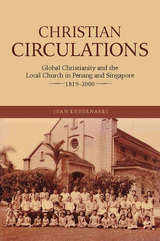 Christian Circulations: Global Christianity and the Local Church in Penang and Singapore, 1819-2000
Jean DeBernardi
National University of Singapore Press, 2020 In postcolonial Singapore and Malaysia, Pentecostal megachurches dominate the Christian landscape, but the "big four" Protestant churches—Anglican, Methodist, Presbyterian, and Brethren—remain religions of heritage for many. Sixty Malaysian and nineteen Singaporean assemblies identify themselves as Christian Brethren, and most trace their roots to independent local churches formed in Penang and Singapore in the 1860s. After World War II, the Brethren promoted new forms of evangelical practice, and former Brethren elders founded independent churches, from charismatic local churches to Pentecostal megachurches. This study is a transregional history of the Brethren movement and its emplacement in Singapore and Malaysia, and it is also a history of discontinuous continuities that have shaped the modern field of religious practice in China and Southeast Asia.
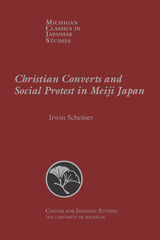 Christian Converts and Social Protests in Meiji Japan
Irwin Scheiner
University of Michigan Press, 2002 Nowhere has there been a discussion of the confusion necessarily generated by the rapidity of the change or of the agony created in the lives of many whose attitudes, expectations, and even success depended on the continuance of now abolished institutions. Historians have ignored the settled conditions of most samurai and instead concentrated on the study of the minority of activist samurai leaders who, with the backing of only a few Han (feudal domains) sought to overthrow the old order and whose success in doing so has made the study of the modernization of Japan the prime concern of historians. The history of the Meiji period may have been an overall political and industrial success story, but for a fuller understanding of the conditions of that success it is also necessary to understand "what it was really like" for the members of the old elite to be estranged from the proponents of revolution and what many members did to assure their own social and psychological position in a world they had not expected. In this book the author attempts to show that the impact of the Meiji Restoration destroyed the meaningfulness of the Confucian doctrine for these declasse samurai. Through Christianity, the samurai attempted to revive their status in society by finding a doctrine that offered a meaningful path to power. But in doing so, they had to accept a new theory of social relations. Ultimately, as the convert's understanding of society became totally informed by the Christian doctrine, they accepted a transcendent authority that brought them into conflict with society about them. Therefore, to understand the development of a Christian opposition in Meiji society we must begin with the conversion experience itself. [intro]
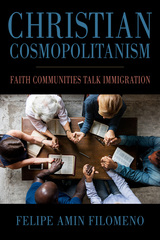 Christian Cosmopolitanism: Faith Communities Talk Immigration
Felipe Amin Filomeno
Temple University Press, 2024 While religious institutions have been gateways for immigrants into local communities, religion has also coalesced with nationalism to discriminate against foreigners. Felipe Amin Filomeno asks, can “deliberative dialogues” about immigration in Christian congregations play a cosmopolitan role and bridge differences of nationality, race, and culture regarding immigration? To find the answer, he visited numerous Christian congregations in Baltimore with varying demographic makeups to discuss intergroup tensions and similarities in their communities. He developed dialogues to promote mutual understanding and collaboration between immigrants and U.S.-born people in religious spaces.
Christian Cosmopolitanism shows that mutual understanding can result when people share their personal stories, feelings, and thoughts about immigration. They reflect and deliberate on collaborative action to advance common interests and shared values, which can unleash the cosmopolitan potential of the Christian community.
Including practical tools for church leaders, Christian Cosmopolitanism promotes dialogue as a cultural practice that can help diverse communities overcome segregation and become socially cohesive.
Christian Demonology and Popular Mythology
Éva Pócs
Central European University Press, 2006 The authors—recognized historians, ethnologists, folklorists coming from four continents—present the latest research findings on the relationship, coexistence and conflicts of popular belief systems, Judeo-Christian mythology and demonology in medieval and modern Europe. The present volume focuses on the divergence between Western and Eastern evolution, on the different relationship of learned demonology to popular belief systems in the two parts of Europe. It discusses the conflict of saints, healers, seers, shamans with the representatives of evil; the special function of escorting, protecting, possessing, harming and healing spirits; the role of the dead, the ghosts, of pre-Christian, Jewish and Christian spirit-world, the antagonism of the devil and the saint.
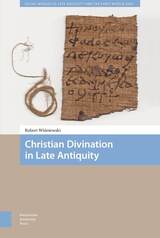 Christian Divination in Late Antiquity
Robert Wisniewski
Amsterdam University Press, 2021 In Late Antiquity, people commonly sought to acquire hidden knowledge about the past, the present, and the future, using a variety of methods. While Christians acknowledged that these methods could work effectively, in theory they were not allowed to make use of them. In practice, they behaved in diverse ways. Some probably renounced any hope of learning about the future. Others resorted to old practices regardless of the consequences. A third option was to construct divinatory methods that were effective yet religiously tolerable. This book is devoted to the study of such practices and their practitioners, and provides answers to essential questions concerning Christian divination. How did it develop? How closely were Christian methods related to older, traditional practices? Who used them and in which situations? Who offered oracular services? And how were they perceived by clerics, intellectuals, and common people?
 Christian Faith Modern Democracy: God & Politics In Fallen World
Robert P. Kraynak
University of Notre Dame Press, 2001 In Christian Faith and Modern Democracy, Robert Kraynak challenges the commonly accepted view that Christianity is inherently compatible with modern democratic society. Contrary to conventional wisdom, Kraynak argues that there is no necessary connection between Christianity and any form of government and that, in many important respects, Christianity is weakened by its close alliance with contemporary versions of democracy and human rights.
Christian Faith and Modern Democracy was written, in part, to convince secular intellectuals that modern democracy needs God. But it was also written in response to the new consensus about politics that has emerged among Christian believers. Almost all churches and theologians now think that the form of government most compatible with Christianity is democracy and that the historic opposition of the Christian tradition to democracy and to various forms of liberalism was a mistake. What caused Christians to change their view of political authority and to embrace liberal democracy? Were they wise to change their view?
This provocative book attempts to answer these questions by applying St. Augustine's distinction between the city of God and the earthly city to modern-day democracy and Christianity. Kraynak argues that St. Augustine's teaching provides the basis for a Christian theory of constitutional government and permits a variety of legitimate forms of government, including constitutional democracy. Yet, unlike contemporary Christian doctrines, it does so without embracing the subversive premises of liberalism that have threatened to turn the Christian faith into little more than a mirror image of the modern world.
Sure to spark controversy among secular intellectuals and Christian believers alike, this insightful volume is an outstanding work of political philosophy with a firm foundation in theology.
ROBERT P. KRAYNAK is professor of political science at Colgate University. He is the author of History and Modernity in the Thought of Thomas Hobbes.
----------
"It is the great virtue of Robert P. Kraynak's Christian Faith and Modern Democracy to question the assumptions of both sides in the culture war. Kraynak strongly supports those who advocate a greater role for the church in American public life. He powerfully defends the view that liberalism is incapable of vindicating the human dignity on which liberal rights are based." --First Things
"In his important and controversial new book, Kraynak argues that democracy is the result of several historical and political developments that were not in themselves the inevitable result of either Providence or the secular course of history." --Commonweal
"This is a masterful work and, at the very least, a necessary corrective to a contemporary Christian tendency to blindly endorse anything that can be labeled democratic. This book should be required reading for students (let alone teachers) of politics and is heartily recommended for the educated reading public."--Markets & Morality
"For those anxious to understand more about the thorny topic of religion and government in the new century, this book will furnish provocative material about an endlessly important issue." --America
"Robert Kraynak has produced one of the most significant political books for American Catholics since John Courtney Murray's We Hold These Truths. Kraynak deserves mention along with Murray, Jacques Maritain, and Reinhold Niebuhr as a thoughtful commentator on the most profound of issues. His work will shake any reader, secular or faithful, to rethink the relationship between one's citizenship and one's faith." --Religion and Liberty
"This ambitious volume challenges the widespread belief that modern liberal democracy is the only form of government that is truly compatible with Christianity. The book is scholarly and well-documented but written in an accessible style." --Research News & Opportunities in Science and Theology
"Kraynak … has written a clear, concise summary of this very complicated issue. It will enlighten students and challenge the presuppositions of scholars, as well as making suggestions about a possible solution. Together with the writing of Ernest Fortin, Kraynak's writings are among the soundest guides to the pitfalls that Christianity and especially Catholicism face in attempting to accommodate modern natural rights theory within their teachings." --History: Reviews of New Books
"[T]his learned and provocative book is an excellent introduction to the problem of Christianity and democracy in our time, and to the enduring tension between religious faith and ‘the logic of rights' in modern liberal societies." --The Public Interest
"… unified and tightly organized. A stimulating book rethinking liberal democracy and Christian political theology." --American Political Science Review
"Kraynak skillfully dismantled the illusory neutrality of liberalism. The book serves as a welcome reminder that a robust social pluralism is incompatible with the totalizing and homogenizing force of the modern welfare state." --The Intercollegiate Review
"Robert Kraynak is one of the few but growing number of scholars who are aware of the limits of modern liberalism, particularly as a neutral or positive support of Christianity. This study simultaneously recognizes the abiding presence of Augustine as a critic of any worldly political society and the lack of support that relativist liberal theory gives to the goals and dignities that both liberalism itself and Christianity advocate. Kraynak proposes a prudential, well-considered solution that avoids the dangers of dogmatic liberalism and a Christianity that simply identifies itself with worldly politics. The book is a powerful essay in political philosophy and political theology." --James V. Schall, S.J., Department of Government, Georgetown University
"Kraynak has written a profound, moving, wonderfully clear, instructive, and genuinely controversial book. He shows how the Christian view of human beings might provide what we most need to curb the excesses of the indiscriminate reliance on rights of our time. Constitutionalism really is possible without liberalism because we really are citizens of two cities, with duties to both. Kraynak has convinced me that government is properly limited not by our personal sovereignty or autonomy but by what we, as spiritual beings, owe God." --Peter Lawler, professor of government, Berry College and author of Postmodernism Rightly Understood: The Return to Realism in American Thought
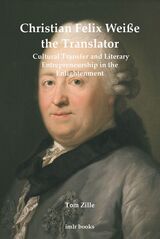 Christian Felix Weiße the Translator: Cultural Transfer and Literary Entrepreneurship in the Enlightenment
Tom Zille
University of London Press, 2021 Christian Felix Weiße (1726–1804) is best known as a dramatist and an influential children’s writer of the Enlightenment period. This volume is the first book to explore his singularly extensive output as a literary translator. Tom Zille investigates the conditions which allowed Weiße to become the most prolific German translator of English literature in the eighteenth century, a popular translator of French drama, and an influential editor and “entrepreneur” of the translations of others. Drawing on previously unpublished correspondence, the study examines Weiße’s wide-ranging professional networks as a cultural mediator of European significance. Special attention is paid to his role in the German reception of the Ossian cycle of poems, his introduction of English children’s literature to Germany, his translations of popular prose, and the intersections between his original writing and translations.
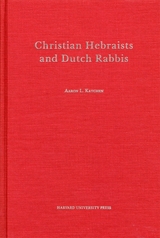 Christian Hebraists and Dutch Rabbis: Seventeenth Century Apologetics and the Study of Maimonides’ Mishneh Torah
Aaron L. Katchen
Harvard University Press, 1984 Maimonides’ Mishneh Torah was a widely studied work in the seventeenth century, especially for apologetic purposes. Christian Hebraists and Dutch Rabbis deals with the impact of its study on Jewish–Christian relations. Dionysius Vossius (1612–1633), Guglielmus Vorstius (c. 1610–1652), and Georgius Gentius (1618–1687) constitute a major focus of the present study and attention is given to their attitudes to and opinions of Judaism and, especially, their relations with members of the Jewish community. Their study of Maimonides’ code was not without issue, and the present work ultimately turns on the instruction that Rabbis Menasseh ben Israel, Isaac Aboab, and Moses Raphael d’Aguilar provided these Christians, and on the repercussions of the Hebraists’ study of the Mishneh Torah on the life of the Jewish communities of Amsterdam, Hamburg, and London.
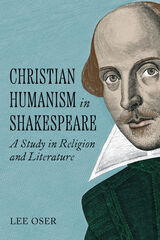 Christian Humanism in Shakespeare: A Study in Religion and Literature
Lee Oser
Catholic University of America Press, 2022 Shakespeare, Lee Oser argues, is a Christian literary artist who criticizes and challenges Christians, but who does so on Christian grounds. Stressing Shakespeare’s theological sensitivity, Oser places Shakespeare’s work in the “radical middle,” the dialectical opening between the sacred and the secular where great writing can flourish. According to Oser, the radical middle was and remains a site of cultural originality, as expressed through mimetic works of art intended for a catholic (small “c”) audience. It describes the conceptual space where Shakespeare was free to engage theological questions, and where his Christian skepticism could serve his literary purposes. Oser reviews the rival cases for a Protestant Shakespeare and for a Catholic Shakespeare, but leaves the issue open, focusing, instead, on how Shakespeare exploits artistic resources that are specific to Christianity, including the classical-Christian rhetorical tradition. The scope of the book ranges from an introductory survey of the critical field as it now stands, to individual chapters on A Midsummer Night’s Dream, The Merchant of Venice, the Henriad, Hamlet, and King Lear. Writing with a deep sense of literary history, Oser holds that mainstream literary criticism has created a false picture of Shakespeare by secularizing him and misconstruing the nature of his art. Through careful study of the plays, Oser recovers a Shakespeare who is less vulnerable to the winds of academic and political fashion, and who is a friend to the enduring project of humanistic education. Christian Humanism in Shakespeare: A Study in Religion and Literature is both eminently readable and a work of consequence.
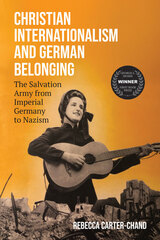 Christian Internationalism and German Belonging: The Salvation Army from Imperial Germany to Nazism
Rebecca Carter-Chand
University of Wisconsin Press, 2025 Ever since the Salvation Army, a British Protestant social welfare organization, arrived in Germany in 1886, it has navigated overlapping national and international identities. After existing on the margins of the German religious landscape while solidifying its role as a social service provider, the Salvation Army proactively shaped its public profile during the Nazi rise to power. Accepted into the Nazi Volksgemeinschaft (ethnonational community) and made an auxiliary member of the National Socialist People’s Welfare (NSV), the organization continued limited operations throughout the Nazi period before returning to its international affiliations in the immediate postwar period, thereby bypassing denazification and rehabilitating its reputation.
In this groundbreaking reevaluation, Rebecca Carter-Chand argues that the Salvation Army was able to emphasize different aspects of its identity to bolster and repair its reputation as needed in varied political contexts, highlighting the variability of Nazi practices of inclusion and exclusion. In that way, the organization was similar to other Christian groups in Germany. Counter to common hypotheses that minority religious groups are more likely to show empathy to other minorities, dynamics within Nazi Germany reveal that many religious minorities sought acceptance from the state in an effort to secure self-preservation.
 Christian Love
Bernard V. Brady
Georgetown University Press, 2003 Bernard Brady has given us a rare, delightful, and thought-provoking book—a volume that belongs on the desk or the bed-stand of anyone in search of the rich and varied dimensions of Christian love. Christians are taught that God is love and are commanded to love, their neighbors and their enemies. These truths are not controversial. What is controversial and, indeed, has been controversial throughout the history of Christianity is the meaning of this love. This book explores the tradition of Christian reflection on the meaning, and experience of love, loving, and being loved. Many books have been written about Christian love, but no book has gathered together this kind of primary source material and covered such a wide range of perspectives, allowing the reader to engage directly with the thought and experience of some of the greatest Christian minds on the topic of love. Bernard Brady covers with remarkable clarity the breadth and depth of discussions on Christian love from the Bible to contemporary experience to create this-a survey of how Christians through the ages have understood love. Beginning of course with the Bible, Brady examines the key writings and thinkers on the nature of Christian love: St. Augustine; mystics such as Bernard of Clairvaux, Hadewich, and Julian of Norwich; the great tradition and literature of courtly love, Thomas Aquinas, Martin Luther, Sören Kierkegaard, and others. In addition, Brady devotes chapters to several 20th century figures whose lives seemingly embodied Christian love: Mother Theresa, Martin Luther King, Jr., and Pope John Paul II. Finally, Christian Love addresses contemporary deliberations over the meaning of love with an analysis of the modern writings of Martin D'Arcy, Reinhold Niebuhr, Jules Toner, Gustavo Gutiérrez, Gene Outka, Margaret Farley, Edward Vacek, and Don Browning. In a synthesizing concluding chapter, Brady offers his own insightful and introspective understanding of the substance of Christian love, suggesting that it is an affective affirmation of another, that it is both responsive and unitive, and that it is steadfast and enduring. As a beautiful contemplative companion to one's own spiritual understanding, or as a thoughtful and meaningful gift, Christian Love is in every sense a treasure to behold, read, and share with those you love.
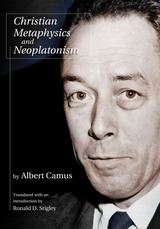 Christian Metaphysics and Neoplatonism
Albert Camus, Translated & Intro by Ronald D. Srigley
University of Missouri Press, 2007
Contemporary scholarship tends to view Albert Camus as a modern, but he himself was conscious of the past and called the transition from Hellenism to Christianity “the true and only turning point in history.” For Camus, modernity was not fully comprehensible without an examination of the aspirations that were first articulated in antiquity and that later received their clearest expression in Christianity. These aspirations amounted to a fundamental reorientation of human life in politics, religion, science, and philosophy.
Understanding the nature and achievement of that reorientation became the central task of Christian Metaphysics and Neoplatonism. Primarily known through its inclusion in a French omnibus edition, ithas remained one of Camus’ least-read works, yet it marks his first attempt to understand the relationship between Greek philosophy and Christianity as he charted the movement from the Gospels through Gnosticism and Plotinus to what he calls Augustine’s “second revelation” of the Christian faith.
Ronald Srigley’s translation of this seminal document helps illuminate these aspects of Camus’ work. His freestanding English edition exposes readers to an important part of Camus’ thought that is often overlooked by those concerned primarily with the book’s literary value and supersedes the extant McBride translation by retaining a greater degree of literalness.
Srigley has fully annotated Christian Metaphysics to include nearly all of Camus’ original citations and has tracked down many poorly identified sources. When Camus cites an ancient primary source, whether in French translation or in the original language, Srigley substitutes a standard English translation in the interest of making his edition accessible to a wider range of readers. His introduction places the text in the context of Camus’ better-known later work, explicating its relationship to those mature writings and exploring how its themes were reworked in subsequent books.
Arguing that Camus was one of the great critics of modernity through his attempt to disentangle the Greeks from the Christians, Srigley clearly demonstrates the place of Christian Metaphysics in Camus’ oeuvre. As the only stand-alone English version of this important work—and a long-overdue critical edition—his fluent translation is an essential benchmark in our understanding of Camus and his place in modern thought.
Christian Metz and the Codes of Cinema: Film Semiology and Beyond
Edited by Margrit Tröhler and Guido Kirsten
Amsterdam University Press, 2018 A pioneering figure in film studies, Christian Metz proposed countless new concepts for reflecting on cinema, rooted in his phenomenological structuralism. He also played a key role in establishing film studies as a scholarly discipline, making major contributions to its institutionalisation in universities worldwide. This book brings together a stellar roster of contributors to present a close analysis of Metz's writings, their theoretical and epistemological positions, and their ongoing influence today.
Christian Morality: The Word Becomes Flesh
Josef Fuchs, SJ. Translated by Brian McNeil
Georgetown University Press, 1987 In this third collection of his essays on Christian ethics, Josef Fuchs takes up a number of pressing questions both in fundamental and applied ethics. Several essays explore the biblical basis for establishing Christian norms and principles for ethical decision-making. These deal in detail with th enature of human conscience and the effect on it fo religious values in a pluralistic culture. The author also deals with current and pressing issues of a Christian moral life: continuity and change in moral teaching as exemplified by the debate over religious freedom; pluralism in the understanding of Christian marriage as early as the twelfth century; bioethical problems dealing with the beginning and end of human life; and the general question, is there a "Catholic" ethical moral theology?
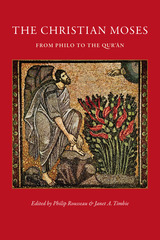 The Christian Moses
Phillip Rousseau
Catholic University of America Press, 2019 As it developed an increasingly distinctive character of its own during the first six centuries of the common era, Christianity was constantly forced to reassess and adapt its relationship with the Jewish tradition. The process involved a number of preoccupations and challenges: the status of biblical and parabiblical texts (several of them already debatable in Jewish eyes), the nature and purposes of God, patterns of prayer (both personal and liturgical), ritual practices, ethical norms, the acquisition and exercise of religious authority, and the presentation of a religious “face” to the very different culture that surrounded and in many ways dominated both Christians and Jews.
The essays in this volume were developed within that broad field of inquiry, and indeed make their contribution to it. For, among the many issues already mentioned, there was also that of persons. What was Christianity to do, not just with Adam or Noah, say, but with Abraham, David and Solomon, the great prophetic figures of Jewish history—and, of course, with Moses?
As we move, chapter by chapter, across the early Christian centuries, we see Moses gradually changing in Christian eyes, and at the hands of Christian exegetes and theologians, until he becomes the philosopher par excellence, the forerunner of Plato, the archetype of the lawgiver, the model shepherd of the people of God—yet all on the basis of a scriptural record that Jews would still have been able to recognize.
Written by a range of established scholars, younger and older, many of them highly distinguished, The Christian Moses will appeal to graduate and senior students, to those rooted in a range of disciplines—literary, historical, art historical, as well in theology and exegesis—and to everyone interested in Jewish-Christian relations in this early era.
 Christian Networks in the Ottoman Empire: A Transnational History
Yura Konstantinova
Central European University Press, 2024 Observers and historians continue to marvel at the diversity and complexity of the Ottoman Empire. This book explores the significant and multifaceted role that Orthodox Christian networks played in the sultan’s realm from the 17th century until WWI. These multi-ethnic, multi-lingual, and multi-confessional formations contributed fundamentally to the political, economic, social, and cultural development of the Empire as well as to its gradual disintegration. Bringing together scholars from most Balkan countries, Christian Networks in the Ottoman Empire describes the variety of Orthodox Christian networks under Ottoman rule. The examples examined include commercial relations, intellectual networks, educational systems, religious dynamics, consular activities, and revolutionary movements, and involve Muslims and Christians, Romanians and Serbs, Bulgarians and Greeks, Albanians and Turks. The contributions show that the Christian populations and their elites were an integral part of Ottoman society. The geographical spread of the formal and informal networks enriches our understanding of the terms ‘center’ and ‘periphery.’ They were either centered within the official Ottoman borders and extended their activities to other states and empires, or vice versa, located elsewhere, but also active in the Ottoman Empire. A common feature of these formations is their constant fluctuation, which enables a dynamic understanding of Ottoman history.
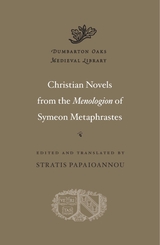 Christian Novels from the Menologion of Symeon Metaphrastes
Symeon Metaphrastes
Harvard University Press, 2017 Created in the tenth century, most likely as an imperial commission, the Menologion is a collection of rewritings of saints’ lives originally intended to be read at services for Christian feast days. Yet Symeon Metaphrastes’s stories also abound in transgression and violence, punishment and redemption, love and miracles. They resemble Greek novels of the first centuries of the Common Era, highlighting intense emotions and focusing on desire, both sacred and profane.
Symeon Metaphrastes was celebrated for rescuing martyrdom accounts and saints’ biographies that otherwise may have been lost. His Menologion, among the most important Byzantine works, represents the culmination of a well-established tradition of Greek Christian storytelling. A landmark of Byzantine religious and literary culture, the Menologion was revered for centuries—copied in hundreds of manuscripts, recited publicly, and adapted into other medieval languages. This edition presents the first English translation of six Christian novels excerpted from Symeon’s text, all of them featuring women who defy social expectations.
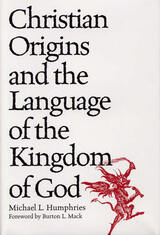 Christian Origins and the Language of the Kingdom of God
Michael L. Humphries. Foreword by Burton L. Mack
Southern Illinois University Press, 1999
Traditionally, scholars have traced the origin of Christianity to a single source—the kingdom of God as represented in the message of the historical Jesus. Through a rhetorical critical analysis of one of the most important texts in early Christian literature (the Beelzebul controversy), Michael L. Humphries addresses the issue of Christian origins, demonstrating how the language of the kingdom of God is best understood according to its locative or taxonomic effect where the demarcation of social and cultural boundaries contributes to the emergence of this new social foundation.
The Beelzebul controversy exists in two versions— Q and Mark—and thereby allows the study to engage the import of the kingdom language at the point of juxtaposition between two distinct textual representations. This makes it possible to deal directly with the issue of the disparity of texts in the synoptic tradition. Humphries suggests that these two versions of the same controversy indicate two distinct social trajectories wherein the kingdom of God comes to mean something quite different in each case but that nevertheless they demonstrate a similarity in theoretical effect where the language contributes to the emergence of relatively distinct social formations.
Humphries establishes the Q and Markan versions of the Beelzebul controversy as relatively sophisticated compositions that are formally identified as elaborate chreiai (a literary form used in the teaching of rhetoric at the secondary and post-secondary level of GrecoRoman education) and that offer an excellent example of the rhetorical manipulation of language in the development of social and cultural identity.
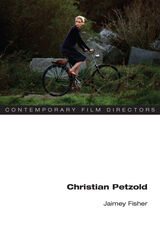 Christian Petzold
Jaimey Fisher
University of Illinois Press, 2013 In eleven feature films across two decades, Christian Petzold has established himself as the most critically celebrated director in contemporary Germany. The best-known and most influential member of the Berlin School, Petzold's career reflects the trajectory of German film from 1970s New German Cinema to more popular fare in the 1990s and back again to critically engaged and politically committed filmmaking.
In the first book-length study on Petzold in English, Jaimey Fisher frames Petzold's cinema at the intersection of international art cinema and sophisticated genre cinema. This approach places his work in the context of global cinema and invites comparisons to the work of directors like Pedro Almodovar and Rainer Werner Fassbinder, who repeatedly deploy and reconfigure genre cinema to their own ends. These generic aspects constitute a cosmopolitan gesture in Petzold's work as he interprets and elaborates on cult genre films and popular genres, including horror, film noir, and melodrama. Fisher explores these popular genres while injecting them with themes like terrorism, globalization, and immigration, central issues for European art cinema. The volume also includes an extended original interview with the director about his work.
 The Christian Philosopher
Cotton MatherEdited, with an Introduction and Notes, by Winton U. Solberg
University of Illinois Press, 1994
Published in 1721 by the prominent Puritan clergyman Cotton Mather, The Christian Philosopher was the first comprehensive book on science to be written by an American. Building on natural theology, Mather demonstrated the harmony between religion and the new science associated with Sir Isaac Newton. His survey of all the known sciences from astronomy and physics to human anatomy presented evidence that both celestial and terrestrial phenomema imply an intelligent designer.
Winton Solberg's introduction places Mather's treatise in its widest historical context. In addition to tracing the origins and sources of Mather's work, Solberg analyzes the book's contents, its reception, and its significance in American intellectual and cultural history. This edition affirms Mather's importance to American thought as a deeply religious intellectual who introduced the Enlightenment to America.
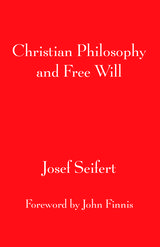 Christian Philosophy and Free Will
Josef Seifert
St. Augustine's Press, 2014 Following an ardent debate in the 1930s on the question over whether something like a “Christian philosophy” exists, as Etienne Gilson, Jacques Maritain, and others held, the term was used by many thinkers and rejected by many others, not only by Heidegger who called it a contradiction in terms, an “iron wood,” but also by Thomists who wanted to see philosophy and Christian faith strictly separated. Seifert analyses five understandings of the term “Christian philosophy” which have never been expounded with such clarity and which he rejects for different, partly for opposite, reasons. He presents these senses of Christian philosophy, and his reasons for rejecting them, in clear, straight-forward language. He presents for the first time a series of eleven wholly different and thoroughly positive and fruitful ways of understanding the (rather misleading) term “Christian philosophy.” Identifying and distinguishing these legitimate ways to speak of “Christian philosophy” shed light on the manifold fruitful relations between reason and faith. In a second part of the book, Seifert gives an example of Christian philosophy in the sense of a philosophy of religion that shows the absolute presupposedness and necessity of the existence of human, divine, and angelic free will to make any sense of divine revelation and of Christian (but also of Muslim and Jewish) religion. In a third part, he presents a penetrating analysis of seven indubitable evidences that demonstrate the nature and real existence of human free will (in a so-called “libertarian” sense that rejects the thesis of the compatibility between free will and determinism). The book is introduced by the eminent Thomist philosopher, John Finnis.
 The Christian Philosophy of Jacques Maritain
Jason L.A. West
Catholic University of America Press, 2025 A study of the Christian philosophy of Jacques Maritain (1882-1973), an influential, creative, and prolific writer. He was widely recognized as one of the most prominent Catholic intellectuals during his own lifetime and was widely seen as a spokesman for the Thomistic revival. This study aims to present Maritain’s thought as a dynamic and coherent philosophy in its own right.
This is the only book in English to present Maritain’s philosophy on the full range of topics upon which he wrote. It focusses on Maritain as a twentieth-century philosopher, rather than an interpreter of Aquinas. Accordingly, this book presents Maritain’s philosophy in its own context. Finally, this work is also attentive to the religious context of Maritain’s philosophy and highlights his overlooked contributions to theology and other areas of philosophy that are informed by his theological commitments, e.g. mysticism, ecclesiology, education and philosophy of history. Accordingly, The Christian Philosophy of Jacques Maritain aims at providing the reader with a comprehensive presentation of Maritain’s thought and a clear vision of his philosophy as a whole.
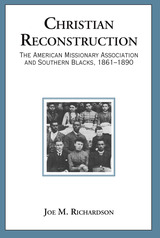 Christian Reconstruction: The American Missionary Association and Southern Blacks, 1861-1890
Joe M. Richardson
University of Alabama Press, 2008 "Joe Richardson's Christian Reconstruction is a solid addition to historical scholarship on the work of Yankee missionaries among the freedmen during the Civil War and Reconstruction. . . . Without question, this is the most comprehensive history of the American Missionary Association (AMA), and no one has uncovered as much detailed information on any other Northern aid society. Rich in detail and strongly recommended, the book argues that the AMA struggled to prepare the liberated slaves for civil and political equality by freeing them of the shackles of ignorance, superstition and sin.This book ought to be read by all those interested in Northern educational and social reformers in the Reconstruction South."
--The Journal of American History
"In an extraordinarily balanced study Richardson has synthesized a wealth of sources and research to produce a thoroughly convincing interpretation of the AMA and southern blacks. Besides exploring relations between the two, his main objective has been to assess the AMA's effectiveness in bringing blacks into the American mainstream. Because of his successful labors, we now have a much-needed comprehensive study of that most influential missionary organization. Whether addressing conflicts between the AMA and the US military over the treatment of contrabands, charges of racism among black and white missionaries, or the quality of association colleges, Richardson does not allow his obvious admiration for the AMA to interfere. . . . With bold logic and considerable subtlety Richardson has made an impressive contribution.
--The Journal of Southern History
The Christian Religion, as Professed by a Daughter of the Church of England
Mary Astell
Iter Press, 2013 This book is the most mature and comprehensive statement of Mary Astell’s religious and philosophical views. It also represents the culmination of Astell’s feminist project to teach her fellow women how to lead useful lives of virtue and wisdom. The main purpose of this work is to instruct women about the ultimate nature of reality, the true source of happiness, their duties and obligations to God, and about “how best to live” and how to treat other people. This volume offers the first complete modern version of the 1717 second edition. It provides a fully modernized text, a scholarly introduction, biographical and bibliographical information, general historical-intellectual background, and definitions of obscure and archaic terms.
 The Christian Right in American Politics: Marching to the Millennium
John C. Green, Mark J. Rozell, and Clyde Wilcox, Editors
Georgetown University Press, 2003 From the first rumblings of the Moral Majority over twenty years ago, the Christian Right has been marshalling its forces and maneuvering its troops in an effort to re-shape the landscape of American politics. It has fascinated social scientists and journalists as the first right-wing social movement in postwar America to achieve significant political and popular support, and it has repeatedly defied those who would step up to write its obituary. In 2000, while many touted the demise of the Christian Coalition, the broader undercurrents of the movement were instrumental in helping George W. Bush win the GOP nomination and the White House. Bush repaid that swell of support by choosing Senator John Ashcroft, once the movement's favored presidential candidate, as attorney general. The Christian Right in American Politics, under the direction of three of the nation's leading scholars in the field of religion and politics, recognizing the movement as a force still to be reckoned with, undertakes the important task of making an historical analysis of the Christian Right in state politics during its heyday, 1980 to the millennium. Its twelve chapters, written by outstanding scholars, review the impact and influence of the Christian Right in those states where it has had its most significant presence: South Carolina, Virginia, Texas, Florida, Michigan, Iowa, Kansas, Minnesota, Colorado, California, Maine, and Oregon and Washington. Since 1980, scholars have learned a good deal about the social characteristics, religious doctrine, and political beliefs of activists in and supporters of the Christian Right in these states, and each contribution is based on rigorous, dispassionate scholarship. The writers explore the gains and losses of the movement as it attempts to re-shape political landscapes. More precisely, they provide in-depth descriptions of the resources, organizations, and the group ecologies in which the Christian Right operates-the distinct elements that drove the movement forward. As the editors state, "the Christian Right has been engaged in a long and torturous 'march toward the millennium,' from outsider status into the thick of American politics." Those formative years, 1980-2000, are essential for any understanding of this uniquely American social movement. This rigorous analysis over many states and many elections provides the clearest picture yet of the goals, tactics, and hopes of the Christian Right in America.
A Christian Samurai
William J. Farge
Catholic University of America Press, 2016 Through a close critical analysis of Baba Bunko's often humorous, but always biting, satirical essays a new picture of the hidden world of Christianity in eighteenth-century Japan emerges - a picture that contradicts the generally-held belief among Western historians that the Catholic mission in Japan ended in failure. A Christian Samurai will surprise many readers when they discover that Christian moral teachings not only survived the long period of persecution but influenced Japanese society throughout the Tokugawa period.
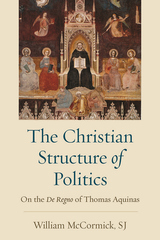 The Christian Structure of Politics: The De Regno of Thomas Aquinas
William McCormick, SJ
Catholic University of America Press, 2022 The Christian Structure of Politics, the first full-length monograph on Thomas Aquinas's De Regno in decades, offers an authoritative interpretation of De Regno as a contribution to our understanding of Aquinas's politics, particularly on the relationship between Church and State. William McCormick argues that Aquinas takes up a via media between Augustine and Aristotle in De Regno, invoking human nature to ground politics as rational, but also Christian principles to limit politics because of both sin and the supernatural end of man beyond politics. Where others have seen disjoined sections on the best regime, tyranny, and the reward of the king, McCormick identifies a dialogical structure to the text - one not unlike the disputed question format - whereby Aquinas both tempers expectations for the best government and offers a spiritual diagnosis of tyranny, culminating in a sharp critique of civil religion and political theology.
McCormick draws upon historical research on Aquinas' context, especially that of Anthony Black, Cary Nederman and Francis Oakley, from which he develops three themes: the medieval preponderance of kingship and royal ideology; the relationship between Church and State; and the intersection of Latin Christianity and Greco-Roman antiquity. While age-old concerns, recent research in these areas has allowed us to move beyond simplistic platitudes.
For scholars of political theory and the history of political thought, De Regno will prove fascinating for the interplay of Aristotelian and Augustinian elements, undercutting the conventional wisdom that Aquinas was simply an Aristotelian. De Regno also includes an extended treatment of civil religion, one of Aquinas’ most historically-oriented discussions of politics.
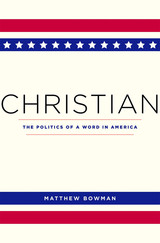 Christian: The Politics of a Word in America
Matthew Bowman
Harvard University Press, 2020 A Publishers Weekly Best Religion Book of the Year
A Choice Outstanding Academic Title
For many Americans, being Christian is central to their political outlook. Political Christianity is most often associated with the Religious Right, but the Christian faith has actually been a source of deep disagreement about what American society and government should look like. While some identify Christianity with Western civilization and unfettered individualism, others have maintained that Christian principles call for racial equality, international cooperation, and social justice. At once incisive and timely, Christian delves into the intersection of faith and political identity and offers an essential reconsideration of what it means to be Christian in America today.
“Bowman is fast establishing a reputation as a significant commentator on the culture and politics of the United States.”
—Church Times
“Bowman looks to tease out how religious groups in American history have defined, used, and even wielded the word Christian as a means of understanding themselves and pressing for their own idiosyncratic visions of genuine faith and healthy democracy.”
—Christian Century
“A fascinating examination of the twists and turns in American Christianity, showing that the current state of political/religious alignment was not necessarily inevitable, nor even probable.”
—Deseret News
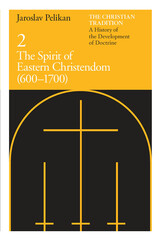 The Christian Tradition: A History of the Development of Doctrine, Volume 2: The Spirit of Eastern Christendom (600-1700)
Jaroslav Pelikan
University of Chicago Press, 1974 The line that separated Eastern Christendom from Western on the medieval map is similar to the "iron curtain" of recent times. Linguistic barriers, political divisions, and liturgical differences combined to isolate the two cultures from each other. Except for such episodes as the schism between East and West or the Crusades, the development of non-Western Christendom has been largely ignored by church historians. In The Spirit of Eastern Christendom, Jaroslav Pelikan explains the divisions between Eastern and Western Christendom, and identifies and describes the development of the distinctive forms taken by Christian doctrine in its Greek, Syriac, and early Slavic expression.
"It is a pleasure to salute this masterpiece of exposition. . . . The book flows like a great river, slipping easily past landscapes of the utmost diversity—the great Christological controversies of the seventh century, the debate on icons in the eighth and ninth, attitudes to Jews, to Muslims, to the dualistic heresies of the high Middle Ages, to the post-Reformation churches of Western Europe. . . . His book succeeds in being a study of the Eastern Christian religion as a whole."—Peter Brown and Sabine MacCormack, New York Review of Books
"The second volume of Professor Pelikan's monumental work on The Christian Tradition is the most comprehensive historical treatment of Eastern Christian thought from 600 to 1700, written in recent years. . . . Pelikan's reinterpretation is a major scholarly and ecumenical event."—John Meyendorff
"Displays the same mastery of ancient and modern theological literature, the same penetrating analytical clarity and balanced presentation of conflicting contentions, that made its predecessor such an intellectual treat."—Virgina Quarterly Review
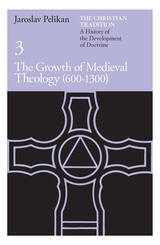 The Christian Tradition: A History of the Development of Doctrine, Volume 3: The Growth of Medieval Theology (600-1300)
Jaroslav Pelikan
University of Chicago Press, 1978 "A magnificent history of doctrine."—New York Review of Books
"In this volume Jaroslav Pelikan continues the splendid work he has done thus far in his projected five-volume history of the development of Christian doctrine, defined as 'what the Church believes, teaches, and confesses on the basis of the word of God.' The entire work will become an indispensable resource not only for the history of doctrine but also for its reformulation today. Copious documentation in the margins and careful indexing add to its immense usefulness."—E. Glenn Hinson, Christian Century
"This book is based on a most meticulous examination of medieval authorities and the growth of medieval theology is essentially told in their own words. What is more important, however, then the astounding number of primary sources the author has consulted or his sovereign familiarity with modern studies on his subject, is his ability to discern form and direction in the bewildering growth of medieval Christian doctrine, and, by thoughtful emphasis and selection, to show the pattern of that development in a lucid and persuasive narrative. No one interested in the history of Christianity or theology and no medievalist, whatever the field of specialization, will be able to ignore this magnificent synthesis."—Bernhard W. Scholz, History
"The series is obviously the indispensable text for graduate theological study in the development of doctrine, and an important reference for scholars of religious and intellectual history as well. . . . Professor Pelikan's series marks a significant departure, and in him we have at last a master teacher."—Marjorie O'Rourke Boyle, Commonweal
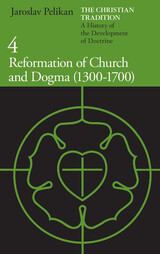 The Christian Tradition: A History of the Development of Doctrine, Volume 4: Reformation of Church and Dogma (1300-1700)
Jaroslav Pelikan
University of Chicago Press, 1984 This penultimate volume in Pelikan's acclaimed history of Christian doctrine—winner with Volume 3 of the Medieval Academy's prestigious Haskins Medal—encompasses the Reformation and the developments that led to it.
"Only in America, and in this case from a Lutheran scholar, could we expect an examination so lacking in parti pris, a survey so perceptive, so free—and, one must say, the result of so much immense labor, so rewardingly presented."—John M. Todd, New York Times Book Review
"Never wasting a word or losing a plot line, Pelikan builds on an array of sources that few in our era have the linguistic skill, genius or ambition to master."—Martin E. Marty, America
"The use of both primary materials and secondary sources is impressive, and yet it is not too formidable for the intelligent layman."—William S. Barker, Eternity
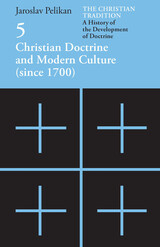 The Christian Tradition: A History of the Development of Doctrine, Volume 5: Christian Doctrine and Modern Culture (since 1700)
Jaroslav Pelikan
University of Chicago Press, 1989 Jaroslav Pelikan begins this volume with the crisis of orthodoxy that confronted all Christian denominations by the beginning of the eighteenth century and continues through the twentieth century in its particular concerns with ecumenism. The modern period in the history of Christian doctrine, Pelikan demonstrates, may be defined as the time when doctrines that had been assumed more than debated for most of Christian history were themselves called into question: the idea of revelation, the uniqueness of Christ, the authority of Scripture, the expectation of life after death, even the very transcendence of God.
"Knowledge of the immense intellectual effort invested in the construction of the edifice of Christian doctrine by the best minds of each successive generation is worth having. And there can hardly be a more lucid, readable and genial guide to it than this marvellous work."—Economist
"This volume, like the series which it brings to a triumphant conclusion, may be unreservedly recommended as the best one-stop introduction currently available to its subject."—Alister E. McGrath, Times Higher Education Supplement
"Professor Pelikan's series marks a significant departure, and in him we have at last a master teacher."—Marjorie O'Rourke Boyle, Commonweal
"Pelikan's book marks not only the end of a dazzling scholarly effort but the end of an era as well. There is reason to suppose that nothing quite like it will be tried again."—Harvey Cox, Washington Post Book World
 The Christian Virtues in Medical Practice
Edmund D. Pellegrino and David C. Thomasma
Georgetown University Press, 1996 Christian health care professionals in our secular and pluralistic society often face uncertainty about the place religious faith holds in today's medical practice. Through an examination of a virtue-based ethics, this book proposes a theological view of medical ethics that helps the Christian physician reconcile faith, reason, and professional duty. Edmund D. Pellegrino and David C. Thomasma trace the history of virtue in moral thought, and they examine current debate about a virtue ethic's place in contemporary bioethics. Their proposal balances theological ethics, based on the virtues of faith, hope, and charity, with contemporary medical ethics, based on the principles of beneficence, justice, and autonomy. The result is a theory of clinical ethics that centers on the virtue of charity and is manifest in practical moral decisions. Using Christian bioethical principles, the authors address today's divisive issues in medicine. For health care providers and all those involved in the fields of ethics and religion, this volume shows how faith and reason can combine to create the best possible healing relationship between health care professional and patient.
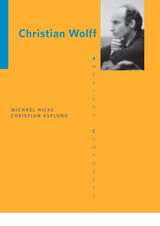 Christian Wolff
Michael Hicks and Christian Asplund
University of Illinois Press, 2012 In this first interpretive narrative of the life and work of Christian Wolff, Michael Hicks and Christian Asplund trace the influences and sensibilities of a contemporary composer's atypical career path and restless imagination. Written in full cooperation with Wolff, including access to his papers, this volume is a much-needed introduction to a leading avant-garde composer still living, writing music, and speaking about his own work. Wolff has pioneered various compositional and notational idioms, including overtly political music, indeterminacy, graphic scores, and extreme virtuosity. Trained as a classicist rather than a musician, Wolff has never quite had both feet in the rarefied world of contemporary composition. Yet he's considered a "composer's composer," with a mind ensconced equally in ancient Greek tragedy and experimental music and an eccentric and impulsive compositional approach that eludes a fixed stylistic fingerprint. Hicks and Asplund cover Wolff's family life and formative years, his role as a founder of the New York School of composers, and the context of his life and work as part of the John Cage circle, as well as his departures from it. Critically assessing Wolff's place within the experimental musical field, this volume captures both his eloquence and reticence and provides insights into his broad interests and activities within music and beyond.
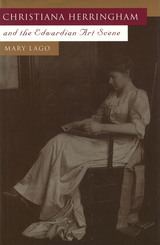 Christiana Herringham and the Edwardian Art Scene
Mary Lago
University of Missouri Press, 1995
Christiana Herringham (1852-1929), an expert copyist of the Italian Old Masters, was an extraordinary and accomplished woman. Her achievements required a delicate balance, for she had to negotiate old Victorian restrictions in order "to find and fortify a place for herself" in the male-dominated spheres of fine-art administration and public service.
Lady Herringham arrived on the Edwardian art scene with a translation of Il Libro dell' Arte o Trattato della Pittura, Cennini's fifteenth-century handbook on fresco and tempera. It aroused new interest in those techniques and led to the founding of the Society of Painters in Tempera in 1901. To preserve Britain's art heritage from buyers abroad, she provided the money that launched the National Art Collections Fund in 1903, creating what is still a vital and authoritative voice in Britain's cultural life. Her work as the only woman on the NACF's first executive committee prepared her to assist in founding the India Society, which urged respect for indigenous Indian traditions of the fine arts and encouraged appreciation for them in England.
Her concern for undervalued art led her to India to copy the Buddhist wall paintings in the Ajanta caves near Hyderabad. Her copies are the only color record of their condition during those years. Sadly, as she returned from India in 1911, Lady Herringham began to suffer from delusions of pursuit and persecution and withdrew to an asylum, where she remained until her death. There were then no satisfactory explanations for her symptoms, only the Victorian medical premise that insanity was an extension of physical illness.
A distinguished Edwardian scholar, Mary Lago has used her knowledge of the cultural history of the period to bring significant insight into the personal and professional conflicts Lady Herringham faced during a time of limited opportunities for women. Lago also discusses the issue of nationalism in art and the role of colonial imperialism in defining and preserving art. As a postscript, she presents the fascinating possibility that Christiana Herringham's experience may have inspired the character of Mrs. Moore in E. M. Forster's A Passage to India.
 Christianity: A Historical Atlas
Edited by Alec Ryrie
Harvard University Press, 2020 The dramatic story of Christianity from its origins to the present day, told through more than one hundred stunning color maps.
With over two billion practicing believers today, Christianity has taken root in almost all parts of the globe. Its impact on Europe and the Americas in particular has been fundamental. Through more than one hundred beautiful color maps and illustrations, Christianity traces the history of the religion, beginning with the world of Jesus Christ. From the consolidation of the first Christian empire—Constantine’s Rome—to the early Christian states that thrived in Ireland, Ethiopia, and other regions of the Roman periphery, Christianity quickly proved dynamic and adaptable.
After centuries of dissemination, strife, dogmatic division, and warfare in its European and Near Eastern heartland, Christianity conquered new worlds. In North America, immigrants fleeing persecution and intolerance rejected the established Church, and in time revivalist religions flourished and spread. Missionaries took the Christian message to Latin America, Africa, and Asia, bringing millions of new converts into the fold.
Christianity has served as the inspiration for some of the world’s finest monuments, literature, art, and architecture, while also playing a major role in world politics and history, including conquest, colonization, conflict, and liberation. Despite challenges in the modern world from atheism and secularism, from scandals and internal divisions, Christianity continues to spread its message through new technologies while drawing on a deep well of history and tradition.
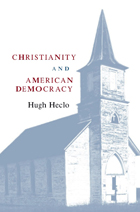 Christianity and American Democracy
Hugh Heclo
Harvard University Press, 2007 Christianity, not religion in general, has been important for American democracy. With this bold thesis, Hugh Heclo offers a panoramic view of how Christianity and democracy have shaped each other.
Heclo shows that amid deeply felt religious differences, a Protestant colonial society gradually convinced itself of the truly Christian reasons for, as well as the enlightened political advantages of, religious liberty. By the mid-twentieth century, American democracy and Christianity appeared locked in a mutual embrace. But it was a problematic union vulnerable to fundamental challenge in the Sixties. Despite the subsequent rise of the religious right and glib talk of a conservative Republican theocracy, Heclo sees a longer-term, reciprocal estrangement between Christianity and American democracy.
Responding to his challenging argument, Mary Jo Bane, Michael Kazin, and Alan Wolfe criticize, qualify, and amend it. Heclo’s rejoinder suggests why both secularists and Christians should worry about a coming rupture between the Christian and democratic faiths. The result is a lively debate about a momentous tension in American public life.
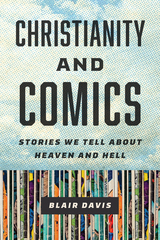 Christianity and Comics: Stories We Tell about Heaven and Hell
Blair Davis
Rutgers University Press, 2024 The Bible has inspired Western art and literature for centuries, so it is no surprise that Christian iconography, characters, and stories have also appeared in many comic books. Yet the sheer stylistic range of these comics is stunning. They include books from Christian publishers, as well as underground comix with religious themes and a vast array of DC, Marvel, and Dark Horse titles, from Hellboy to Preacher.
Christianity and Comics presents an 80-year history of the various ways that the comics industry has drawn from biblical source material. It explores how some publishers specifically targeted Christian audiences with titles like Catholic Comics, books featuring heroic versions of Oral Roberts and Billy Graham, and special religious-themed editions of Archie. But it also considers how popular mainstream comics like Daredevil, The Sandman, Ghost Rider, and Batman are infused with Christian themes and imagery.
Comics scholar Blair Davis pays special attention to how the medium’s unique use of panels, word balloons, captions, and serialized storytelling have provided vehicles for telling familiar biblical tales in new ways. Spanning the Golden Age of comics to the present day, this book charts how comics have both reflected and influenced Americans’ changing attitudes towards religion.
 Christianity and Culture in the Middle Ages: Essays to Honor John Van Engen
David C. Mengel
University of Notre Dame Press, 2014 This volume celebrates the remarkable scholarly career of medieval historian John Van Engen with eighteen exceptional essays contributed by Van Engen’s colleagues and former doctoral students, a group that includes some of the best established scholars of the Middle Ages as well as leading younger ones. Together, their work reflects the wide-ranging but coherent body of John Van Engen’s own scholarship.
In a section on Christianization, Ruth Mazo Karras explores medieval marriage, Lisa Wolverton offers a new model of the Christianization of Bohemia, R. I. Moore examines the historiography of the Cathars, and Christine Caldwell Ames links the inquisition with medieval and modern concepts of popular religion. Under the rubric of twelfth-century culture, Maureen C. Miller uses eleventh-century Roman frescoes to rethink reform, Jonathan R. Lyon unpacks Otto of Freising’s notions of advocacy and tyranny, Rachel Koopmans traces testimonial letters associated with the cult of Thomas Becket, Dyan Elliot deliberates on the importance of what she calls counterfactual, or alternative, realities in twelfth-century thought and literature, and Giles Constable traces manifestations of the cross in monastic life.
Three essays study Jews and Christians in society. Susan Einbinder probes the connections between martyrdom, politics, and poetry in thirteenth-century Castile, William Chester Jordan traces anti-Judaism in the Christina Psalter, and David C. Mengel highlights the significance of urban space for Jews in fourteenth-century Prague and Nuremberg. Lastly, contributors explore topics in late medieval religious life, a special focus of Van Engen’s scholarship. Walter Simons edits and analyzes a letter defending beguines in the Low Countries, William J. Courtenay traces the effects on pastoral care of papal provisions to university scholars, and James D. Mixson reinterprets the fifteenth-century treatise Firefly. An essay by Marcela K. Perett looks at vernacular anti-Hussite treatises, Daniel Hobbins employs a fifteenth-century Italian story about Antichrist to consider hearsay, belief and doubt, and Roy Hammerling contemplates Martin Luther’s understanding of himself as a beggar.
"Christianity and Culture in the Middle Ages: Essays to Honor John Van Engen is a thrilling collection, both wide-ranging and informative. The contributions are well-structured, well-argued, and comprehensive in bibliography and source materials—a welcome volume to celebrate the work of John Van Engen." —Anthony Lappin, National University of Ireland, Maynooth
Christianity and Ecology: Seeking the Well-Being of Earth and Humans
Dieter T. Hessel
Harvard University Press, 2000 What can Christianity as a tradition contribute to the struggle to secure the future well-being of the earth community? This collaborative volume, the third in the series on religions of the world and the environment, announces that an ecological reformation, an eco-justice reorientation of Christian theology and ethics, is prominent on the ecumenical agenda.
The authors explore problematic themes that contribute to ecological neglect or abuse and offer constructive insight into and responsive imperatives for ecologically just and socially responsible living.
Christianity and Education in Modern China
Edited by Man Kong Wong and George Kam Wah Mak
Hong Kong University Press, 2025 A close look at the effects of Christianity on contemporary Chinese education.
In Christianity and Education in Modern China, the contributors demonstrate how Christianity served as a driving force in the development of modern education in China. Each essay offers new insights into Christian influence on education in modern China while examining how Christian missionaries and Chinese Christian educators interacted with China's social, cultural, and political contexts. They also explore how the legacies of Christian higher education affected higher education in mainland China, Taiwan, and Asia at large. On the whole, this volume compares the Western missionary and Chinese Christian perspectives with rich historiographical acumen by offering original case studies to examine Christianity’s impact on education in modern China.
Christianity and Hellenism in the Fifth-Century Greek East: Theodoret’s Apologetics against the Greeks in Context
Yannis Papadogiannakis
Harvard University Press, 2012 This book—the first full-length study of the “last and most beautiful” apology against paganism, Theodoret’s Therapeutic for Hellenic Maladies—combines close readings of the text with detailed analysis of Theodoret’s arguments against Greek religion, philosophy, and culture and the ways in which that Greek influence interacts with other diverse ideas, practices, and developments in the fifth-century Roman empire.
The book’s larger underlying themes—the continuing debate between Christianity and Hellenism, and the relationship between classical and Christian literature—offer insights into more general late Roman and early Byzantine religious and cultural attitudes and issues, including the relations between pagan and Christian paideia, the cult of the martyrs, and the role of Christianity in the Roman empire.
 Christianity and Modernity in Eastern Europe
Bruce R. Berglund
Central European University Press, 2010 Religious history more generally has experienced an exciting revival over the past few years, with new methodological and theoretical approaches invigorating the field. The time has definitely come for this “new religious history” to arrive in Eastern Europe. This book explores the influence of the Christian churches in Eastern Europe's social, cultural, and political history. Drawing upon archival sources, the work fills a vacuum as few scholars have systematically explored the history of Christianity in the region. The result of a three-year project, this collective work challenges readers with questions like: Is secularization a useful concept in understanding the long-term dynamics of religiosity in Eastern Europe? Is the picture of oppression and resistance an accurate way to characterize religious life under communism, or did Christians and communists find ways to co-exist on the local level prior to 1989? And what role did Christians actually play in dissident movements under communism? Perhaps most important is the question: what does the study of Eastern Europe contribute to the broader study of modern Christian history, and what can we learn from the interpretative problems that arise, uniquely, from this region?
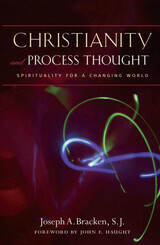 Christianity and Process Thought: Spirituality for a Changing World
Joseph A. Bracken
Templeton Press, 2006 “If someone were to ask,‘Where is God?’ how would you respond?” Joseph A. Bracken, SJ, uses this question as a springboard to introduce the process-relational metaphysics of Alfred North Whitehead and other process theologians as he tries to reconcile the sometimes-conflicting views of traditional Christian doctrines and the modern scientific world. To present this material in an accessible manner to a wider audience, Bracken reworks Whitehead’s “model” of the God-world relationship, showing that God is involved in an ongoing, ever-changing relationship with humans and other . He also discusses the work of other contemporary theologians to help Christians come to terms with their role in our multi-dimensional pluralistic society. Bracken examines divine and human creativity, the collective power of good and evil, divine providence and human freedom, prayer, altruism, and the basic question, “What is truth?” He shows how Whitehead&rsqio;s process thought approach to these issues can in fact "harmonize" traditional Christian beliefs and contemporary culture, benefiting both faith and reason. Understanding the God-world relationship subtly influences our attitude toward ourselves, toward other human beings, and indeed toward all of God’s creatures, says Bracken. His revision of Whitehead's metaphysical vision in terms of a cosmic community shows how modern views of the world and God can be accepted and kept in balance with the traditional biblical views found in the Christian faith and how this balance can help Christians make better choices in a world shaped both by contemporary natural science and by traditional Christian spirituality. “If we truly believe that in God we live and move and have our being and that as a result we share with the divine persons in a deeply communitarian way of life together with all of God’s creatures, we may be more readily inclined to make the periodic sacrifice of personal self-interest so as to pursue the higher good of sustained life in community. In the end, it is simply a matter of seeing the ‘bigger picture,’ realizing what life is ultimately all about.”
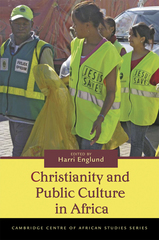 Christianity and Public Culture in Africa
Harri Englund
Ohio University Press, 2011 Christianity and Public Culture in Africa takes readers beyond familiar images of religious politicians and populations steeped in spirituality. It shows how critical reason and Christian convictions have combined in surprising ways as African Christians confront issues such as national constitutions, gender relations, and the continuing struggle with HIV/AIDS. The wide-ranging essays included here explore rural Africa and the continent’s major cities, colonial and missionary legacies, and mass media images in the twenty-first century. They also reveal the diversity of Pentecostalism in Africa and highlight the region’s remarkable denominational diversity. Scholars and students alike will find these essays timely and impressive. The contributors demonstrate how the public significance of Christianity varies across time and place. They explore rural Africa and the continent’s major cities, and colonial and missionary situations, as well as mass-mediated ideas and images in the twenty-first century. They also reveal the plurality of Pentecostalism in Africa and keep in view the continent’s continuing denominational diversity. Studentsand scholars will find these topical studies to be impressive in scope. Contributors: Barbara M. Cooper, Harri Englund, Marja Hinfelaar, Nicholas Kamau-Goro, Birgit Meyer, Michael Perry Kweku Okyerefo, Damaris Parsitau, Ruth Prince, James A. Pritchett, Ilana van Wyk
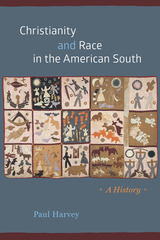 Christianity and Race in the American South: A History
Paul Harvey
University of Chicago Press, 2016 The history of race and religion in the American South is infused with tragedy, survival, and water—from St. Augustine on the shores of Florida’s Atlantic Coast to the swampy mire of Jamestown to the floodwaters that nearly destroyed New Orleans. Determination, resistance, survival, even transcendence, shape the story of race and southern Christianities. In Christianity and Race in the American South, Paul Harvey gives us a narrative history of the South as it integrates into the story of religious history, fundamentally transforming our understanding of the importance of American Christianity and religious identity.
Harvey chronicles the diversity and complexity in the intertwined histories of race and religion in the South, dating back to the first days of European settlement. He presents a history rife with strange alliances, unlikely parallels, and far too many tragedies, along the way illustrating that ideas about the role of churches in the South were critically shaped by conflicts over slavery and race that defined southern life more broadly. Race, violence, religion, and southern identity remain a volatile brew, and this book is the persuasive historical examination that is essential to making sense of it.
 Christianity and Secular Reason: Classical Themes and Modern Developments
Jeffrey Bloechl
University of Notre Dame Press, 2012
What is secularity? Might it yield or define a distinctive form of reasoning? If so, would that form of reasoning belong essentially to our modern age, or would it instead have a considerably older lineage? And what might be the relation of that form of reasoning, whatever its lineage, to the Christian thinking that is often said to oppose it? In the present volume, these and related questions are addressed by a distinguished group of scholars working primarily within the Roman Catholic theological tradition and from the perspectives of Continental philosophy. As a whole, the volume constitutes a conversation among thinkers who agree in their concerns but not necessarily their conclusions. Taken individually, each essay concentrates on a range of historical developments with close attention to their intellectual and sometimes pedagogical implications. Secular reason, they argue, is neither the antipode of Christian thought nor a stable and well-resolved component of it. Christian thinking may engage with secular reason as the site of profound difficulties, but on occasion will also learn from it as a source of new insight.
Christianity and Secular Reason contributes to the contemporary discussion of secularity prompted especially by Charles Taylor’s book A Secular Age. Unlike Taylor's work, however, this collection concentrates specifically on secular reason and explicitly on its relation to Christianity. In this sense, it is closer to Michael J. Buckley’s At the Origins of Modern Atheism or, to a lesser degree, Louis Dupré’s Passage to Modernity, which concern themselves with broad cultural developments.
"This volume offers a variety of perspectives, some historical, some normative/constructive, on the questions of the relations between politics/culture/religion and the relations between selfhood/humanity/world. The essays are, without exception, of high quality in both scholarly-exegetical terms, and constructive-normative ones. The writers are learned, sometimes witty, and often interesting." —Paul Griffiths, Duke Divinity School
"This is no other volume I know of that covers just this ground. There is a substantial literature on, for example, the Habermas/Ratzinger exhange, and on Kant's view of the relation between philosophy and religion, and on the twelfth century background for thirteenth century reflection on this relation. The merit of Christianity and Secular Reason is that it holds these threads together, and others besides, in a new and fruitful way." —John E. Hare, Yale University
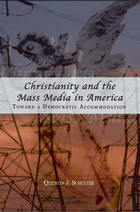 Christianity and the Mass Media in America: Toward a Democratic Accommodation
Quentin J. Schultze
Michigan State University Press, 2003 The mass media and religious groups in America regularly argue about news bias, sex and violence on television, movie censorship, advertiser boycotts, broadcast and film content rating systems, government regulation of the media, the role of mass evangelism in a democracy, and many other issues. In the United States the major disputes between religion and the media usually have involved Christian churches or parachurch ministries, on the one hand, and the so-called secular media, on the other. Often the Christian Right locks horns with supposedly liberal Eastern media elite and Hollywood entertainment companies. When a major Protestant denomination calls for an economic boycott of Disney, the resulting news reports suggest business as usual in the tensions between faith groups and media empires.
Schultze demonstrates how religion and the media in America have borrowed each other’s rhetoric. In the process, they have also helped to keep each other honest, pointing out respective foibles and pretensions. Christian media have offered the public as well as religious tribes some of the best media criticism— better than most of the media criticism produced by mainstream media themselves. Meanwhile, mainstream media have rightly taken particular churches to task for misdeeds as well as offered some surprisingly good depictions of religious life.
The tension between Christian groups and the media in America ultimately is a good thing that can serve the interest of democratic life. As Alexis de Tocqueville discovered in the 1830s, American Christianity can foster the “habits of the heart” that ward off the antisocial acids of radical individualism. And, as John Dewey argued a century later, the media offer some of our best hopes for maintaining a public life in the face of the religious tribalism that can erode democracy from within. Mainstream media and Christianity will always be at odds in a democracy. That is exactly the way it should be for the good of each one.
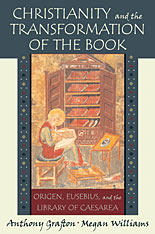 Christianity and the Transformation of the Book: Origen, Eusebius, and the Library of Caesarea
Anthony Grafton and Megan Williams
Harvard University Press, 2006 When early Christians began to study the Bible, and to write their own history and that of the Jews whom they claimed to supersede, they used scholarly methods invented by the librarians and literary critics of Hellenistic Alexandria. But Origen and Eusebius, two scholars of late Roman Caesarea, did far more. Both produced new kinds of books, in which parallel columns made possible critical comparisons previously unenvisioned, whether between biblical texts or between national histories. Eusebius went even farther, creating new research tools, new forms of history and polemic, and a new kind of library to support both research and book production.
Christianity and the Transformation of the Book combines broad-gauged synthesis and close textual analysis to reconstruct the kinds of books and the ways of organizing scholarly inquiry and collaboration among the Christians of Caesarea, on the coast of Roman Palestine. The book explores the dialectical relationship between intellectual history and the history of the book, even as it expands our understanding of early Christian scholarship. Christianity and the Transformation of the Book attends to the social, religious, intellectual, and institutional contexts within which Origen and Eusebius worked, as well as the details of their scholarly practices--practices that, the authors argue, continued to define major sectors of Christian learning for almost two millennia and are, in many ways, still with us today.,
Christianity and War in Medieval East Central Europe and Scandinavia
Radosław Kotecki
Arc Humanities Press, 2021
This collaborative collection provides fresh perspectives on Christianity and the conduct of war in medieval East Central Europe and Scandinavia, investigating the intersection between religion, culture, and warfare in territories that were only integrated into Christendom in the Central Middle Ages. The contributors analyze cultures that lay outside Charlemagne's limes and the frontiers of the Byzantine Empire, to consider a region stretching from the Balkans to the Baltic and Scandinavia.
The volume considers clerics as military leaders and propagandists, the role of Christian ritual and doctrine in warfare, and the adaptation and transformation of indigenous military cultures. It uncovers new information on perceptions of war and analyzes how local practices were incorporated into clerical narratives, enabling the reader to achieve a complete understanding of the period.
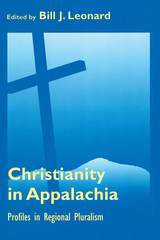 Christianity in Appalachia: Profiles in Reginal Pluralism
Bill J. Leonard
University of Tennessee Press, 1999
Religion has long been a source of identity for many Southerners, and the Appalachian areas in particular have proven to be a virtual fortress protecting faith and culture. Yet, in a region popularly thought to be religiously homogeneous, congregations reflect a wide range of doctrinal differences over such issues as conversion, ministerial leadership, and the authority on which a church bases its core beliefs.
Profiling the prominent Christian traditions in southern Appalachia, this book brings together contributions by twenty scholars who have long studied the religious practices found in the region’s cities, small towns, and rural communities. These authors provide insights into not only the independent mountain churches that are strongly linked to local customs but also the mainline and other religious bodies that have a significant presence in Appalachia but are not strictly associated with it. The essays explore the nature of ministry within these various churches, show the impact of broader culture on religion in the region, and consider the question of whether previously isolated, tradition-based churches can retain their distinctiveness in a changing world.
One group of chapters focuses on elements of mountain religion as seen in the beliefs and practices of mountain Holiness folk, serpent handlers, and various Baptist traditions. Later chapters review the history and activities of other denominations, including Southern Baptist, Presbyterian, Wesleyan/Holiness, Church of God, and Roman Catholic. Also considered are the economic history of the region, popular religiosity, and the role of church-affiliated colleges. Taken together, these essays offer a richly nuanced understanding of Christianity in Appalachia.
Christianity in China: Early Protestant Missionary Writings
Suzanne Wilson Barnett
Harvard University Press, 1985 These studies examine writings by Protestant missionaries in China from 1819 to 1890. The initial aim of the missionaries was religious--to bring the Gospel message to a Chinese audience. The social and cultural milieu tempered missionary efforts, however, and the scope of their writings--tracts, translations of scripture, periodicals, and books in Chinese--enlarged to include secular topics and information for the Chinese about the world outside. Simultaneously, Protestant missionaries wrote about China for American readers at home and thus became the strongest link between village China and small-town America.
Nine historians contribute to this composite picture of the missionary pioneers, the literature they produced, the changes they sustained through immersion in Chinese culture, and their efforts to interpret that culture for their constituencies at home.
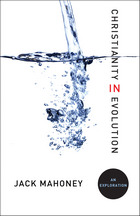 Christianity in Evolution: An Exploration
Jack Mahoney
Georgetown University Press, 2011 Evolution has provided a new understanding of reality, with revolutionary consequences for Christianity. In an evolutionary perspective the incarnation involved God entering the evolving human species to help it imitate the trinitarian altruism in whose image it was created and counter its tendency to self-absorption. Primarily, however, the evolutionary achievement of Jesus was to confront and overcome death in an act of cosmic significance, ushering humanity into the culminating stage of its evolutionary destiny, the full sharing of God’s inner life.
Previously such doctrines as original sin, the fall, sacrifice, and atonement stemmed from viewing death as the penalty for sin and are shown not only to have serious difficulties in themselves, but also to emerge from a Jewish culture preoccupied with sin and sacrifice that could not otherwise account for death. The death of Jesus on the cross is now seen as saving humanity, not from sin, but from individual extinction and meaninglessness. Death is now seen as a normal process that affect all living things and the religious doctrines connected with explaining it in humans are no longer required or justified. Similar evolutionary implications are explored affecting other subjects of Christian belief, including the Church, the Eucharist, priesthood, and moral behavior.
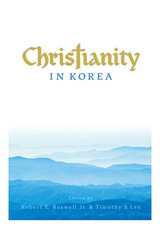 Christianity in Korea
edited by Robert E.Buswell, Jr., and Timothy S. Lee
University of Hawaii Press, 2006 Despite the significance of Korea in world Christianity and the crucial role Christianity plays in contemporary Korean religious life, the tradition has been little studied in the West. Christianity in Korea seeks to fill this lacuna by providing a wide-ranging overview of the growth and development of Korean Christianity and the implications that development has had for Korean politics, interreligious dialogue, and gender and social issues. The volume begins with an accessibly written overview that traces in broad outline the history and development of Christianity on the peninsula. This is followed by chapters on broad themes, such as the survival of early Korean Catholics in a Neo-Confucian society, relations between Christian churches and colonial authorities during the Japanese occupation, premillennialism, and the theological significance of the division and prospective reunification of Korea. Others look in more detail at individuals and movements, including the story of the female martyr Kollumba Kang Wansuk; the influence of Presbyterianism on the renowned nationalist Ahn Changho; the sociopolitical and theological background of the Minjung Protestant Movement; and the success and challenges of Evangelical Protestantism in Korea. The book concludes with a discussion of how best to encourage a rapprochement between Buddhism and Christianity in Korea. Contributors: Donald Baker; Robert E. Buswell, Jr.; Paul Y. Chang; Cho Kwang; Donald N. Clark; Kelly H. Chong; James Huntley Grayson; Wi Jo Kang; Byong-suh Kim; Chong Bum Kim; Wonil Kim; Gari Ledyard; Timothy S. Lee; Sung-Deuk Oak; Kang-nam Oh; Anselm Kyongsuk Min; Jacqueline Pak; Yi Mahn-yol.
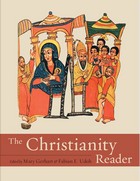 The Christianity Reader
Edited by Mary Gerhart and Fabian Udoh
University of Chicago Press, 2007 Christianity is the world’s most populous religion, with some two billion adherents. As a world religion, Christianity has flourished because it is capable of taking on new forms in new contexts. To understand both the religion’s history and its present state, Mary Gerhart and Fabian Udoh gather original texts—from early Christian writings to contemporary documents on church-related issues—in The Christianity Reader. The most comprehensive anthology of Christian texts ever in English, this is a landmark sourcebook for the study of Christianity’s historical diversity. With newly edited, annotated, and translated primary texts, along with supplemental analytical essays, the volume allows Christianity, at long last, to speak in its many voices.
Focusing on Christianity as a religion, Gerhart and Udoh select texts that illuminate issues such as theology, mysticism, and ritual, while also articulating the stories of previously marginalized groups, as well as those in new and growing epicenters of the religion. With nearly three hundred selections, the texts encompass the entire history of Christian writings excluding the New Testament, from Justin Martyr and Tertullian to Fabien Eboussi Boulaga and Teresa of Calcutta. Eight thematic sections cover biblical traditions and interpretations; early influences; nascent forms; patterns of worship; structures of community; philosophy, theology, and mysticism; twentieth-century issues and challenges; and the contemporary relationship between Christianity and other world religions. The Reader’s contents are arranged chronologically and are supported with introductions and source notes that explain the rationale for their inclusion and their context.
Providing a far richer selection than ever before available in a single volume, The Christianity Reader will be welcomed as both a classroom resource and a work of reference for decades to come.
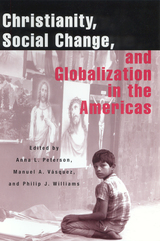 Christianity, Social Change, and Globalization in the Americas
Peterson, Anna L
Rutgers University Press, 2001 This volume resulted from a collaborative research project into responses of Protestant and Catholic religious communities in the Americas to the challenges of globalization. Contributors from the fields of religion, anthropology, political science, and sociology draw on fieldwork in Peru, El Salvador, and the United States to show the interplay of economic globalization, migration, and growing religious pluralism in Latin America. Organized around three central themes-family, youth, and community; democratization, citizenship, and political participation; and immigration and transnationalism-the book argues that, at the local level, religion helps people, especially women and youths, solidify their identities and confront the challenges of the modern world. Religious communities are seen as both peaceful venues for people to articulate their needs, and forums for building participatory democracies in the Americas. Finally, the contributors examine how religion enfranchises poor women, youths, and people displaced by war or economic change and, at the same time, drives social movements that seek to strengthen family and community bonds disrupted by migration and political violence.
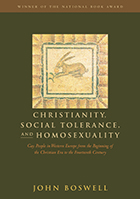 Christianity, Social Tolerance, and Homosexuality: Gay People in Western Europe from the Beginning of the Christian Era to the Fourteenth Century
John Boswell
University of Chicago Press, 1981 "Truly groundbreaking work. Boswell reveals unexplored phenomena with an unfailing erudition."—Michel Foucault
John Boswell's National Book Award-winning study of the history of attitudes toward homosexuality in the early Christian West was a groundbreaking work that challenged preconceptions about the Church's past relationship to its gay members—among them priests, bishops, and even saints—when it was first published twenty-five years ago. The historical breadth of Boswell's research (from the Greeks to Aquinas) and the variety of sources consulted make this one of the most extensive treatments of any single aspect of Western social history. Christianity, Social Tolerance, and Homosexuality, still fiercely relevant today, helped form the disciplines of gay and gender studies, and it continues to illuminate the origins and operations of intolerance as a social force.
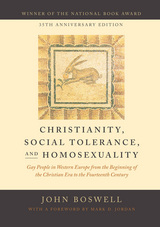 Christianity, Social Tolerance, and Homosexuality: Gay People in Western Europe from the Beginning of the Christian Era to the Fourteenth Century
John Boswell
University of Chicago Press, 2015 The landmark book that launched the field of gay and lesbian studies
John Boswell’s National Book Award–winning study of the history of attitudes toward homosexuality in the early Christian West was a groundbreaking work that challenged preconceptions about the Church’s past relationship to its gay members—among them priests, bishops, and even saints—when it was first published in 1980. The historical breadth of Boswell’s research (from the Greeks to Aquinas) and the variety of sources consulted make this one of the most extensive treatments of any single aspect of Western social history.
This edition offers a new foreword by leading queer and religious studies scholar Mark D. Jordan that reminds current readers, scholars, and students that Christianity, Social Tolerance, and Homosexuality is still fiercely relevant. This landmark book helped form the disciplines of gay and gender studies, and it continues to illuminate the origins and operations of intolerance as a social force.
Christianity, Wilderness, and Wildlife
Susan Bratton
University of Scranton Press, 2009 In Christianity, Wilderness, and Wildlife, Susan Bratton brings to life the tradition of Christian wilderness spirituality, from Noah’s and Moses’ experiences in the Old Testament to Celtic monasteries and the Franciscan order. She traces a long history of divine encounters in biblical literature such as visions, providential protection, spiritual guidance and calls to leadership—all of which highlight the importance of nature in Christian thought. This book will command the attention of the growing audience for works at the intersection of environment and spirituality.
 Christianity's Quiet Success: The Eusebius Gallicanus Sermon Collection and the Power of the Church in Late Antique Gaul
Lisa Kaaren Bailey
University of Notre Dame Press, 2010
Lisa Kaaren Bailey's Christianity's Quiet Success: The Eusebius Gallicanus Sermon Collection and the Power of the Church in Late Antique Gaulis the first major study of the Eusebius Gallicanus collection of anonymous, multi-authored sermons from fifth- and sixth-century Gaul. Bailey sheds new light on these sermons, which were strikingly popular and influential from late antiquity to the High Middle Ages, as the large number of surviving manuscripts attests. They were used for centuries by clergy as a preaching guide and by monks and pious lay people as devotional reading.
Bailey's analysis demonstrates the extent to which these stylistically simple and straightforward sermons emphasize consensus, harmony, and mutuality as the central values of a congregation. Preachers encouraged tolerance among their congregants and promoted a model of leadership that placed themselves at the center of the community rather than above it. These sermons make clear the delicate balancing act required of late antique and early medieval pastors as they attempted to explain the Christian faith and also maintain the clerical control considered necessary for a universal church. The Eusebius Gallicanus collection gives us fresh insight into the process by which the Catholic Church influenced the lives of Western Europeans.
"Christianity's Quiet Successmakes an original contribution to the field that significantly improves our understanding of the complexity of Christian belief and practice in late antique Gaul. The book brings a little-known collection of texts to the forefront and offers a series of important insights into their composition and function, which dispel previous scholarly confusion about them." --George Demacopoulos, Fordham University
"This is a model study. With a deft survey of the evidence and an eye for telling detail, Lisa Bailey has substantially added to our understanding of preaching, modes of persuasion, and everyday religious practice in late antique Gaul. Sins and sinners, problems of faith, the troubling facts of injustice, the shared work of salvation--all are illuminated in this penetrating analysis." --William E. Klingshirn, The Catholic University of America
"A thorough study of the Eusebius Gallicanus collection was long due, in particular a study that is not focused only on the question of authorship. Lisa Bailey convincingly shows that the collection was made for the average Gallic preacher and that it can therefore provide a picture of late antique Christianity that significantly differs from the one we get through the sermons of figures like Augustine or Caesarius of Arles." --Eric Rebillard, Cornell University
The Christianization of Scandinavia in the Viking Era: Religious Change in Adam of Bremen's Historical Work
Lukas G. Grzybowski
Arc Humanities Press, 2021 This book discusses Adam of Bremen's perceptions and interpretation of the Christianization of Scandinavia in the Early Middle Ages. The views the chronicler presents in the Gesta Hammaburgensis constitute the central element of this analysis. By departing from the historiography—both the older view of the Gesta as trustworthy, and the recent view of the work as unreliable and biased—this book focuses instead on the Christianization of Scandinavia as an authorial concept. What follows is a reevaluation of the Gesta’s significance both to its medieval audience and the modern historian.
The Christianization of Western Baetica: Architecture, Power, and Religion in a Late Antique Landscape
Jerónimo Sánchez Velasco
Amsterdam University Press, 2018 The province of Baetica, in present-day Spain, was one of the most important areas in the Roman Empire in terms of politics, economics, and culture. And in the late medieval period, it was the centre of a rich and powerful state, the Umayyad Caliphate. But the historical sources on the intervening years are limited, and we lack an accurate understanding of the evolution of the region. In recent years, however, archaeological research has begun to fill the gaps, and this book-built on more than a decade of fieldwork-provides an unprecedented overview of urban and rural development in the period.
Christian-Muslim Relations during the Crusades
Alex Mallett
Arc Humanities Press, 2023 The popular view of the Crusades is that of two zealous armies ranged against each other in a state of practically permanent warfare, lacking mutual respect, understanding, or co-operation. Scholars long ago replaced such ideas with a much more nuanced understanding, in which rulers from both sides could work together for mutual benefit, even while pretending to ascribe to the principles of crusade and jihad. This perspective, however, focused almost exclusively on the actions of the elites; the attitudes of those who made up the vast majority of the society in the Levant have been all but ignored. In a clear and accessible form, this book explores everyday relations and interactions between Christians and Muslims in the Levant during the Crusades, demonstrating that it was usually practicality rather than religious scruples that dictated their responses to the religious other.
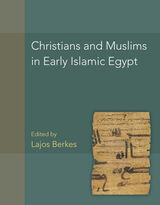 Christians and Muslims in Early Islamic Egypt
Lajos Berkes, Editor
University of Michigan Press, 2022 This volume collects studies exploring the relationship of Christians and Muslims in everyday life in Early Islamic Egypt (642–10th c.) focusing mainly, but not exclusively on administrative and social history. The contributions concentrate on the papyrological documentation preserved in Greek, Coptic, and Arabic. By doing so, this book transcends traditional disciplinary boundaries and offers results based on a holistic view of the documentary material. The articles of this volume discuss various aspects of change and continuity from Byzantine to Islamic Egypt and offer also the (re)edition of 23 papyrus documents in Greek, Coptic, and Arabic. The authors provide a showcase of recent papyrological research on this under-studied, but dynamically evolving field. After an introduction by the editor of the volume that outlines the most important trends and developments of the period, the first two essays shed light on Egypt as part of the Caliphate. The following six articles, the bulk of the volume, deal with the interaction and involvement of the Egyptian population with the new Muslim administrative apparatus. The last three studies of the volume focus on naming practices and language change.
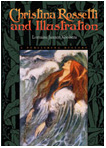 Christina Rossetti and Illustration: A Publishing History
Lorraine Janzen Kooistra
Ohio University Press, 2002 Readers do not always take into account how books that combine image and text make their meanings. But for the Pre-Raphaelite poet Christina Rossetti, such considerations were central. Christina Rossetti and Illustration maps the production and reception of Rossetti’s illustrated poetry, devotional prose, and work for children, both in the author’s lifetime and in posthumous twentieth-century reprints. Lorraine Janzen Kooistra’s reading of Rossetti’s illustrated works reveals for the first time the visual-verbal aesthetic that was fundamental to Rossetti’s poetics. Her exhaustive archival research brings to light new information on how Rossetti’s commitment to illustration and attitudes to copyright and control influenced her transactions with publishers and the books they produced. Janzen Kooistra also tracks the poet’s reception in the twentieth century through a complex web of illustrated books produced for a wide range of audiences. Analyzing an impressive array of empirical data, Janzen Kooistra shows how Rossetti’s packaging for commodity consumption—by religious presses, publishers of academic editions and children’s picture books, and makers of erotica and collectibles—influenced the reception of her work and her place in literary history.
 Christina Rossetti: The Poetry of Endurance
Dolores Rosenblum
Southern Illinois University Press, 1987 Christina Rossetti was considered the ideal female poet of her time. Her poetry was devotional, moral, and spoke of frustrated affection. Dolores Rosenblum presents a fresh reading of Rossetti’s works and places them in the context of her life. Rosenblum shows that what was ostensibly devotional, moral, and loveless, was actually what Luce Irigaray calls “mimetism,” a subtle parody and subversion of the male tradition of literature. Only with the coming of feminist criticism can Rossetti be meaningfully re-evaluated. Rosenblum calls Rossetti’s works the “poetry of endurance,” stating that it is similar, and at times identical, to the female “sentimental” tradition in literature. Rossetti endured the constraints of the Victorian female artistic spirit by becoming a “watcher.” Within this self-accepted role, Rossetti was able to carefully and deliberately choose artistic self-protection. In her religious poetry, Rossetti transcended, by aesthetic renunciation, the alienation and immobilization forced upon her. Rossetti’s poetry is full of paradox; it sings about silence, exposes the poet’s oblivion. From the repining Victorian poet, there emerged a “stone woman.” Rosenblum discusses this passively enduring female figure’s alienation from knowledge and power, and how the myth of self strengthened the lyric voice within her. Because she was a woman, she was denied the male use of the lyric “I.” Rossetti’s work is unified, Rosenblum argues, because she was a deliberate poet, and by accepting the “burden of womanhood,” she played out what men only symbolized as female in their art. By her mimicry and revision of the male tradition of literature, Christina Rossetti engaged the patriarchal tradition in ways that make it usable for the female experience, and that provide a critique of male objectification of women in art.
Christine de Pizan, Empowering Women in Text and Image
Charlotte Cooper-Davis
Arc Humanities Press, 2023 It is well known that in several of her works, Christine de Pizan actively sought to valorize and empower women; she notably made the case for women’s education, argued for the protection of widows, and famously attacked the misogyny of the all-pervasive Roman de la Rose. Whilst numerous examinations have shown that Christine sought to empower women through her texts, this book demonstrates that the visual programmes of her works offer further evidence of Christine’s championing women in their role as educators and activists, whilst challenging some assumptions made about gender in Christine’s works. It also examines the conduits and structures by which power is conferred upon women within them. When read together, the text and image across Christine’s œuvre reveal a consistent picture: one in which women educate and empower one another.
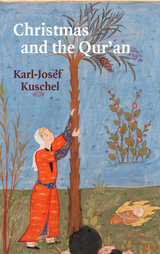 Christmas and the Qur'an
Karl-Josef Kuschel
Gingko, 2017 The familiar and heartwarming story of Christmas is one of hope, encapsulated by the birth of the infant Jesus. It is also a story that unites Christianity and Islam—two faiths that have often been at odds with each other. The accounts of the Nativity given by the Evangelists Luke and Matthew find their parallels in Surahs 3 and 19 of the Qur’an, which take up the Annunciation to Mary, the Incarnation from the Holy Spirit, and the Nativity.
Christmas and the Qur’an is a sensitive and precise analysis of the Christmas story as it appears in the Gospels and the Qur’an. Karl-Josef Kuschel presents both scriptures in a convincing comparative exegesis and reveals startling similarities as well as significant differences. Kuschel explores how Christians and Muslims read these texts and reveals an intertwining legacy that serves as a base for greater understanding. Without leaving the realm of theology, Kuschel approaches his analysis in a theocentric way by emphasizing the shared belief that God is almighty, which, he argues, can act as a healing suture between Christianity and Islam. Christmas and the Qur’an gives the reader the chance to remember the message of hope that the birth of Jesus brings and invites to a dialogue between Muslims and Christians.
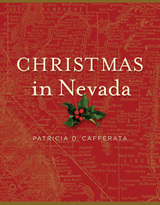 Christmas in Nevada
Patricia D. Cafferata
University of Nevada Press, 2014 The delightful and touching stories in Christmas in Nevada tell how Nevadans have celebrated the holiday, from 1858 to the present day. Some are told by well-known Nevadans, such as Samuel Clemens (Mark Twain), Robert Laxalt, and former governors Bob List and Richard Bryan, but much more of the book shows ordinary Nevadans celebrating in diverse ways the wonders of the season. The range of the state’s ethnic and immigrant heritage is showcased by stories of Basque, Mexican American, Native American, and African American celebrations, along with traditions of Italian, German, Danish, and Serbian origin. Some of the more unusual accounts include the story of three miners trapped underground for forty-five days during the Christmas season, Tonopah’s “Nevergreen” tree, and Reno’s Santa Pub Crawl with thousands of costumed revelers. Through extensive research and personal interviews, Patricia D. Cafferata has created a heartwarming collection of stories, guaranteed to be treasured. Whether Santa arrives on a sleigh in a mining camp in Silver Peak, Esmeralda County, or a zip line down Fremont Street, Las Vegas, Christmas in Nevada brings warm memories, excitement, and good cheer.
• Includes a story from each of the state’s seventeen counties
• Illustrated with 57 historic photographs, many previously unpublished
 Christmas on the Great Plains
Dorothy Dodge Robbins
University of Iowa Press, 2004
For the inhabitants of the Great Plains, the month of December is thirty-one days of progressively receding sunlight, unremittingly low temperatures, and the ever-present threat—if not the reality—of knee-high snow. Arriving at the peak of this blustery weather, Christmas is extended as far as possible on both sides of December 25. On the Great Plains, December needs a Christmas season, not just a single day.
Featuring stories and essays by both classic and contemporary regional authors, including Willa Cather, Hamlin Garland, Paul Engle, Constance Vogel, and Ted Kooser,Christmas on the Great Plains offers unique geographic, historical, and cultural perspectives on winter’s holiday celebrations and traditions—from lutefisk and julebukking to sleighbells and twinkling lights—that will be appreciated by anyone who has braved the wintry plains.
The stories in this collection unwrap like so many holiday packages, revealing a varied assortment of gifts. Moments of communal beauty and happiness are common, as in Mary Swander’s “The Living Crèche,” where her friends reenact the nativity scene at Fairview School, or in Mari Sandoz’s “The Christmas of the Phonograph Records,” where isolated homesteaders travel far to hear the sounds of their first phonograph. Yet as we all know, the reality of the season is not always magical. One person’s Christmas joy is countered by another’s annual depression, the latter reinforced by the bleak landscape of this harsh climate. As Jane Smiley says in “Long Distance,” a story about a disconnected man spending the holidays with a family whom he has not seen in years, “though he cannot bear to stay here after all, he cannot bear to go either.”
A thought-provoking and inspiring antidote to the dark and icy days of December,Christmas on the Great Plains is a welcome reminder of the many connections we make with each other and the landscape during the Yuletide season.
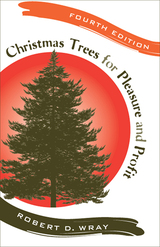 Christmas Trees for Pleasure and Profit
Wray, Robert D
Rutgers University Press, 2008 Christmas Trees for Pleasure and Profit is for anyone who enjoys being and working outdoors and is seeking a profitable hobby or small business venture. Robert Wray has updated this fourth edition to include the latest techniques and tools for harvesting trees, new methods of transport, the most recent data on herbicides, and advice on how to run a Christmas-tree business today. A perennial bestseller, this illustrated guide covers selecting land, choosing species, planting, harvesting, and managing a plantation. Wray provides guidance for choosing species suitable for the grower's situation, where and how to get planting stock, and how to care for it. The planting process is described in detail, including both hand and machine methods. The book presents useful techniques for protecting the growing trees from weeds, animals, fire, insects, and disease, and offers a full description of shearing or shaping trees to improve their form and densityùkeys to a successful crop. As the grower's job is not done until the trees are sold, issues of grading, harvesting, advertising, and marketing are examined. A chapter on finances deals with costs, profits, and taxes. From novice to experienced grower, there is something in this book for everyone.
 Christmas Trees for Pleasure and Profit: Third Edition
Chapman, Arthur
Rutgers University Press, 1985
"This book should be required reading for the new or prospective Christmas tree grower." --Journal of Forestry The third edition of this successful book is for the farmer who has some extra land, for the prospective commercial grower with several hundred acres, or for the hobbyist who may want to supplement his income. Both the novice and the experienced grower will benefit from its account of growing Christmas trees for the market. Covering basic principles as well as specific practices, the book guides the reader through the various stages of establishing and maintaining a Christmas-tree plantation. Chapters provide important information on the selection of land, where to get planting stock, and factors that should be considered when deciding on what species to grow. The most critical job of all--the actual planting of the trees--is covered in depth. The authors present useful techniques for protecting the growing trees from weeds, insects, and diseases, and they offer a full description of shearing (or shaping) trees to improve their form and density--one of the keys to a successful crop. On the business side, issues of grading, harvesting, and marketing are examined. A chapter on taxes includes alternative methods of treating income and a concluding section gives the grower advice on obtaining further help. This new and updated edition also covers changes in the technology of planting and maintaining trees. Information on new uses of machinery, statistical details on plantations and acreage, and the most recent data on herbicides are also included. The late Arthur Chapman was chief of the Division of Forest Management Research at the Central States Forest Experiment Station in Columbus, Ohio. Robert Wray is retired from the U.S. Forest Service's North Central Forest Experiment Station where he was in charge of information services. He has written for various conservation and professional publications and continues to do contract editing for the Forest Service.
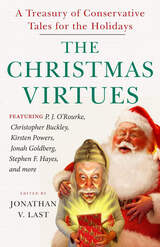 The Christmas Virtues: A Treasury of Conservative Tales for the Holidays
Jonathan V. Last
Templeton Press, 2015 From the all-star cast that brought you The Seven Deadly Virtues and The Dadly Virtues comes the ultimate Christmas survival guide: The Christmas Virtues. The Christmas season is a minefield of terrors: The family get-togethers with weird uncles, the sloppy office parties, the annoying 10-page Look-at-Us holiday letters—and we haven’t even mentioned the Black Friday mobs and that wretched Alvin and the Chipmunks song that plays every 90 minutes on Pandora, whether you like it or not. Rum-pah-pah-pum. And don’t forget the PC police lurking around every corner looking to beat the last bits of joy and comradery out of our society. Merry Christmas? Really? But it doesn’t have to be this way. 'Tis the season to recapture the wonder of Christmas, in our hearts and in our homes and even out in the public square. The Christmas Virtues is a humorous companion for, and guide to, navigating the trials and tribulations of the holiday season. It’s a reminder of how we can embrace the joy, hope, and love of Christmas—of the real Christmas. And a call for us to stand up for Christmas because America needs it now, more than ever. So sit back and enjoy the following tales by your favorite authors: - Rob Long’s "The Christmas Spirit: In Defense of Ebenezer Scrooge.”
- P. J. O’Rourke’s “The Commercialization of Christmas: God Moves (The Merchandise) in a Mysterious Way.”
- Andrew Ferguson’s “Jingle Bell Rock: Taking the Christ Out of Christmas Songs”
- Matt Labash’s “Home for the Holidays: The Trials and Tribulations of Family.”
- Stephen F. Hayes’ "here Comes Santa Claus: The Wonder of Christmas Morning."
- Toby Young’s “The ghosts of Christmas: Holidays Past and Present”
- Jonah Goldberg’s “The War on Christmas: It’s Real, and It’s Spectacular.”
- Christopher Buckley’s “Saint Joseph: The Forgotten ‘Father Christmas.’”
- Kirsten Powers’ “The first Noel: Christmas with Jesus.”
- James Lileks' "Boxing Day and the Christmas Hangover."
- And More
 Christmastime Texts and the Popularity of the Robin Hood Tradition
Alexander L. Kaufman
Arc Humanities Press, 2025 This is the first full-length study of Robin Hood Christmastime poems, novels, short stories, dramatic and musical performances, material culture, and media. Set in the cozy confines (and harsh climate) of the winter months, there exists a unique genre within the Robin Hood tradition, the winterwood, one that over the centuries has helped to secure the popularity of the outlaw and create and maintain memories of him for audiences of all ages. These winterwood stories unite the Robin Hood tradition with the Christmastime season, welcome performance and performativity, embrace and interrogate the commercial aspect of the season, and are created mostly for children and for families to experience together. As Christmas is a time for peace, mercy, and goodwill toward all, Robin Hood is both the good outlaw and also the trickster, for in these winterwood texts he becomes an exemplar of “proper” Christmastime moral thought and action.
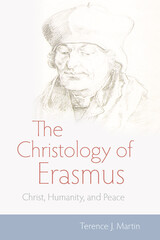 The Christology of Erasmus: Christ, Humanity, and Peace
Terence J. Martin
Catholic University of America Press, 2024 Nothing is more central to the religious thinking of Erasmus of Rotterdam than the reality of Christ—in his eyes, that supreme revelation of divine mercy embodied in the life of Jesus of Nazareth to which Christian scriptures variously testify, but also the divine presence undergirding that life-centering ethic of love and peace, what Erasmus calls the “philosophy of Christ.” The purpose of this book is to distill the Christological elements from his vast corpus in a manner that shows the range, coherence, and value of Erasmus’ thinking on Christological questions. While Erasmus works within the broad parameters of orthodox teaching, his critical skills with languages, accent on rhetoric in theology, keen sense of irony, appreciation for the limits of human knowledge, incipient sense of history, emphasis on the welfare of humanity, and passionate defense of peace, give his work a distinctive stamp and thereby make a singular contribution to the history of Christology. What Erasmus contributes to discussions of the divinity of Christ is a counsel of restraint in metaphysical speculation, an accent on the revelatory breadth of the eternal Word of God, and an invitation to think of Christ incarnate as the eloquent oration of God. But the central impulse of the Christology of Erasmus is the affirmation of the full incarnation of Christ in human existence, abstaining as much as possible from docetic insulation of the divine from the struggles of human experience, in order to highlight the redemptive capacity of Christ for the transformation of human life. With that, the ethical capstone of Erasmus’ reflections on Christ centers on the responsibility to imitate Christ’s love for others, and thus for advancing the cause of peace in personal and social life. This books adds the voice of this remarkable Catholic humanist to the history of theological discussions in the early modern era, while also restoring its rightful place in the broader history of Christology.
Christoph Schlingensief: Art without Borders
Edited by Tara Forrest and Anna Teresa Scheer
Intellect Books, 2010 The work of acclaimed German artist Christoph Schlingensief spans three decades and a diverse range of fields, including, film, television, activism, opera, and theatre. Christoph Schlingensief: Art Without Borders is the first book to be published in English on Schlingensief’s groundbreaking, politically engaged body of work. Leading scholars in the field offer a critical assessment of Schlingensief’s hybrid practice, and an interview with Schlingensief himself provides the reader with insight into past and present projects. The book will be an essential resource for artists, curators, students, and academics in the fields of theater and performance studies, film studies, cultural studies, German studies, political activism, and art history.
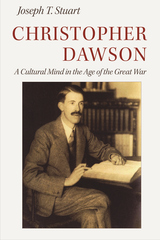 Christopher Dawson: A Cultural Mind in the Age of the Great War
Joseph T. Stuart
Catholic University of America Press, 2022 The English historian Christopher Dawson (1889-1970) was the first Catholic Studies professor at Harvard University and has been described as one of the foremost Catholic thinkers of modern times. His focus on culture prefigured its importance in Catholicism since Vatican Council II and in the rise of mainstream cultural history in the late twentieth century. How did Dawson think about culture and why does it matter? Joseph T. Stuart argues that through Dawson’s study of world cultures, he acquired a “cultural mind” by which he attempted to integrate knowledge according to four implicit rules: intellectual architecture, boundary thinking, intellectual asceticism, and intellectual bridges. Dawson’s multilayered approach to culture, instantiating John Henry Newman’s philosophical habit of mind, is key to his work and its relevance. By it, he responded to the cultural fragmentation he sensed after the Great War (1914-1918).
Stuart supports these claims by demonstrating how Dawson formed his cultural mind practicing an interdisciplinary science of culture involving anthropology, sociology, history, and comparative religion. Stuart shows how Dawson applied his cultural thinking to problems in politics and education.
This book establishes how Dawson’s simple definition of culture as a “common way of life” reconciles intellectualist and behavioral approaches to culture. In addition, Dawson’s cultural mind provides a synthesis helpful for recognizing the importance of Christian culture in education. It demonstrates principles which construct a more meaningful cultural history. Anyone interested in the idea of culture, the connection of religion to the social sciences, Catholic Studies, or Dawson studies will find this book an engaging and insightful intellectual history.
Christopher Gadsden and the American Revolution
Stanly E. Godbold, Jr.
University of Tennessee Press, 1988 Christopher Gadsden and the American Revolution is the biography of the "Sam Adams of the South." It recreates the life of South Carolina's foremost patriot during the American Revolution while shedding further light on a crucial period in American history. As a radical leader of the American Revolution, Gadsden was intimately involved in the major events of the eighteenth century. He designed the symbolic rattlesnake flag with the logo "Don't Tread on Me." This book contains the known details of Gadsden's personal life as well as thorough analysis of his political and military careers.
Christopher Marlowe in London
Mark Williams Eccles
Harvard University Press A fortunate discovery in the Public Records Office has enabled Mark Williams Eccles to add several important and extremely interesting details to the little we already know about the years of Marlowe’s triumphs as the first great English dramatist. The documents concern a street fight in September 1589 between William Bradley and Christopher Marlowe, in which Marlowe’s friend, Thomas Watson, killed Bradley. Brilliant research has enabled Eccles to lay before the reader a considerable amount of information about Bradley and Watson which throws light upon life in London at the time, on Newgate, and on the English college at Douai. For such light every student of the Elizabethan period will be duly grateful.
 Christ's Fulfillment of Torah and Temple: Salvation according to Thomas Aquinas
Matthew Levering
University of Notre Dame Press, 2002 Christ’s Fulfillment of Torah and Temple is a concise introduction to the Christian theology of salvation in light of the contributions of Thomas Aquinas. In this cogent study, Matthew Levering identifies six important aspects of soteriology, each of which corresponds to an individual chapter in the book. Levering focuses on human history understood in light of the divine law and covenants, Jesus the Incarnate Son of God and Messiah of Israel, Jesus’ cross, transformation in the image of God, the Mystical Body of Christ into which all human beings are called, and eternal life.
Taking the doctrines of faith as his starting point, Levering’s objective is to answer the questions of both Christians and non-Christians who desire to learn how and for what end Jesus “saves” humankind. Levering’s work also speaks directly to contemporary systematic theologians. In contrast to widespread assumptions that Aquinas’s theology of salvation is overly abstract or juridical, Levering demonstrates that Aquinas’s theology of salvation flows from his reading of Scripture and deserves a central place in contemporary discussions.
Thomas Aquinas’s theology of salvation employs and develops the concepts of satisfaction and merit in light of his theology of the Old Testament. For Aquinas, Christ fulfills Israel’s Torah and Temple, law and liturgy. These two aspects of Israel’s religion provide the central categories for understanding salvation. The Torah expresses God’s Wisdom, incarnated in Jesus Christ. Christ’s passion, then, fulfills and transforms the moral, juridical, and ceremonial precepts of the Torah, which correspond to the three “offices” of ancient Israel—prophet, king, and priest. The New Law in Christ Jesus is also the fulfillment of the Temple, Israel’s worship. Christ offers the Father the perfect worship, participated in by all members of his Mystical Body through faith, charity, and the sacraments. Old Law and New Law are fulfilled in the perfect knowing and loving (perfect law and liturgy) of eternal life, the Heavenly Jerusalem.
As a Thomistic contribution to contemporary theology, this fruitful study develops a theology of salvation in accord with contemporary canonical readings of Scripture and with the teachings of the Second Vatican Council on the fulfillment and permanence of God’s covenants.
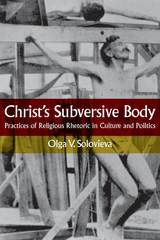 Christ's Subversive Body: Practices of Religious Rhetoric in Culture and Politics
Olga V. Solovieva; Foreword by Haun Saussy
Northwestern University Press, 2018 Christ's Subversive Body offers a fascinating exploration of six historical examples of politically or culturally subversive usages of the body of Christ. Shining a light on the enabling potential of religious rhetoric, Solovieva examines how in moments of crisis or transition throughout Western history the body of Christ has been deployed in a variety of discourses, including recent neo- and theoconservative movements in the United States.
Solovieva’s survey includes the iconoclastic polemics of Epiphanius at the moment of struggles for supremacy between the Roman state and the Christian church, the mystical theologico-political alchemy of an anonymous treatise circulated at the Council of Constance, Lavater’s counter-Enlightenment visions of the afterlife expressd through physiognomy, Dostoevsky’s refashioning of ethical communities, Pier Paolo Pasolini’s attempts to provoke the “scandal” of Jesus’s mission once more in the modern world, and the elaboration of a political theology subordinating democratic dissent to the higher unity of a corporately conceived “unitary executive” in early twenty-first-century America.
Solovieva presents her findings not as an entry into theological or Christological debates but rather as a study in comparative discourse analysis. She demonstrates how these uses of Christ’s body are triggered by moments of epistemological, political, and representational crisis in the history of Western civilization.
Chroma: A Book of Color
Derek Jarman
University of Minnesota Press, 2010 Chroma: A Book of Color is a meditation on the color spectrum by Britain’s most controversial filmmaker. From the explosions of image and color in Edward II, The Last of England, The Garden, and Wittgenstein, to the somber blacks of his collages and tar paintings, Derek Jarman has consistently used color in unprecedented ways. In his signature style, a lyrical combination of classic theory, anecdote and poetry, Jarman takes the reader through the spectrum, introducing each color as an embodiment of an emotion, evoking memories or dreams.
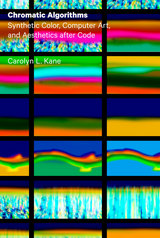 Chromatic Algorithms: Synthetic Color, Computer Art, and Aesthetics after Code
Carolyn L. Kane
University of Chicago Press, 2014 These days, we take for granted that our computer screens—and even our phones—will show us images in vibrant full color. Digital color is a fundamental part of how we use our devices, but we never give a thought to how it is produced or how it came about.
Chromatic Algorithms reveals the fascinating history behind digital color, tracing it from the work of a few brilliant computer scientists and experimentally minded artists in the late 1960s and early ‘70s through to its appearance in commercial software in the early 1990s. Mixing philosophy of technology, aesthetics, and media analysis, Carolyn Kane shows how revolutionary the earliest computer-generated colors were—built with the massive postwar number-crunching machines, these first examples of “computer art” were so fantastic that artists and computer scientists regarded them as psychedelic, even revolutionary, harbingers of a better future for humans and machines. But, Kane shows, the explosive growth of personal computing and its accompanying need for off-the-shelf software led to standardization and the gradual closing of the experimental field in which computer artists had thrived.
Even so, the gap between the bright, bold presence of color onscreen and the increasing abstraction of its underlying code continues to lure artists and designers from a wide range of fields, and Kane draws on their work to pose fascinating questions about the relationships among art, code, science, and media in the twenty-first century.
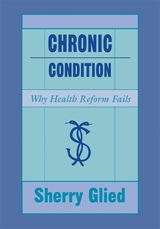 Chronic Condition: Why Health Reform Fails
Sherry Glied
Harvard University Press, 1997 Chronic Condition provides a compelling analysis of the causes of the current health care crisis and of the shortcomings of reform proposals. It also offers an ingenious new framework for reform that, while minimizing government interference, would provide a means for financing care for the less affluent.
Sherry Glied shows that rising health care spending is consistent with a rising standard of living. Since we can, as a nation, afford more health care, reform must address not the overall level of health care costs but the distribution of health care spending.
Prior reform proposals, Glied argues, have failed to account for the tension between the clearly manifested desire for improving the quality of health care and the equally widespread interest in assuring that the less fortunate share in these improvements. After careful analysis of the ill-fated Clinton plan, Glied proposes a new solution that would make the willingness to pay for innovation the means of financing health care improvements for the less affluent. While rejecting the idea that the distribution of health care should be perfectly equal, Glied's proposal would enable all Americans to benefit from the dynamics of the free market.
Chronic Conditions, Fluid States: Chronicity and the Anthropology of Illness
Manderson, Lenore
Rutgers University Press, 2010 Chronic Conditions, Fluid States explores the uneven impact of chronic illness and disability on individuals, families, and communities in diverse local and global settings. To date, much of the social as well as biomedical research has treated the experience of illness and the challenges of disease control and management as segmented and episodic. Breaking new ground in medical anthropology by challenging the chronic/acute divide in illness and disease, the editors, along with a group of rising scholars and some of the most influential minds in the field, address the concept of chronicity, an idea used to explain individual and local life-worlds, question public health discourse, and consider the relationship between health and the globalizing forces that shape it.
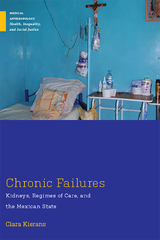 Chronic Failures: Kidneys, Regimes of Care, and the Mexican State
Ciara Kierans
Rutgers University Press, 2020 Chronic Failures: Kidneys, Regimes of Care and the Mexican State is about Chronic Kidney Disease (CKD) and the relentless search for renal care lived out in the context of poverty, inequality and uneven welfare arrangements. Based on ethnographic research conducted in the state of Jalisco, this book documents the routes uninsured Mexican patients take in order to access resource intensive biotechnical treatments, that is, different modes of dialysis and organ transplantation. It argues that these routes are normalized, bureaucratically, socially and epidemiologically, and turned into a locus for exploitation and profit. Without a coherent logic of healthcare access, negotiating regimes of renal care has catastrophic consequences for those with the least resources to expend in that effort. In carrying both the costs and the burden of care, the practices of patients without entitlement offer a critical vantage point on the interplay between the state, markets in healthcare and the sick body.
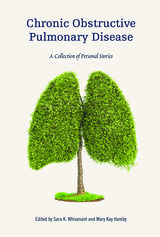 Chronic Obstructive Pulmonary Disease: A Collection of Personal Stories
Edited by Sara K. Whisenant and Mary Kay Hamby
Michigan Publishing, 2018 Receiving a diagnosis of Chronic Obstructive Pulmonary Disease (COPD) can be an overwhelming experience. And, it can be difficult for newly-diagnosed patients to ask the hard, personal questions in clinic. These thought-provoking stories contain the answers to many of those difficult questions. This book is a window into the thoughts, feelings, and coping techniques of real people struggling with the effects of a life-altering disease. It is a must-read for newly-diagnosed COPD patients and their loved ones.
In Chronic Obstructive Pulmonary Disease: A Collection of Personal Stories, you will learn what COPD is and what it is not. Written in the actual voices of real patients and family members, you will hear what worried them, what helped them, the good advice they have to share, and even some unexpected joys discovered in the course of their journey. There is also a long list of resources for those who are exploring COPD topics. This collection of personal stories and photos was written by COPD patients and family members for the benefit of newly-diagnosed patients and their families. The authors want you to know that you are not alone.
Proceeds from this book will be used to improve the patient experience at Michigan Medicine.
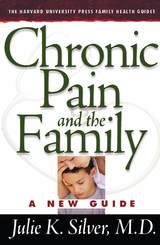 Chronic Pain and the Family: A New Guide
Julie K. Silver M.D.
Harvard University Press, 2004 Chronic pain is the leading cause of disability in the United States, affecting as many as 48 million people in this country alone. It can demoralize and depress both patient and family, especially when there is no effective pain control and no hope for relief. Improperly managed, chronic pain can lead to substance abuse (usually painkillers) and to acute psychological and emotional distress. Pain begets stress and stress begets pain in a wretched downward spiral.
Silver reviews the causes and characteristics of chronic pain and explores its impact on individual family relationships and on the extended family, covering such issues as employment, parenting, childbearing and inheritance, and emotional health. Silver treats aspects of chronic pain not covered in a typical office visit: how men and women differ in their experience of chronic pain, the effect of chronic pain on a toddler's behavior or an older child's performance in school, the risks of dependence on and addiction to pain medications, and practical ways for relatives beyond the immediate family circle to offer help and support to the person in pain.
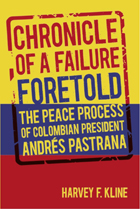 Chronicle of a Failure Foretold: The Peace Process of Colombian President Andrés Pastrana
Harvey Kline
University of Alabama Press, 2007 Charts the progress and failure of Colombian President Andrés Pastrana’s efforts to bring an end to sixty years of civil war.
The civil war in Colombia has waxed and waned for almost sixty years with shifting goals, programs, and tactics among the contending parties and with bursts of appalling violence punctuated by uneasy truces, cease-fires, and attempts at reconciliation. Varieties of Marxism, the economics of narco-trafficking, peasant land hunger, poverty, and oppression mix together in a toxic stew that has claimed uncounted lives of (most often) peasants, conscript soldiers, and people who just got in the way.
Hope for resolution of this conflict is usually confined to dreamers and millenialists of various persuasions, but occasionally an attempt is made at a breakthrough in the military stalemate between the government and the Marxist groups. One of the most promising such attempts was made by new Colombian President Andrés Pastrana at a time when the main rebel groups seemed receptive to serious dialogue. This book is an account of that effort at peace, accompanied at the outset by domestic and international support and hope, and yet doomed like so many others to eventual failure.
Through interviews with many of the actors in this drama, as well as an understanding of the various interest groups and economic forces at work in Colombia, Dr. Kline charts the progress and ultimate failure of this effort, and thereby hopes to increase understanding of the causes of its lack of success. The importance of the resolution of the conflict to the region and to ordinary citizens of this troubled land cannot be
overstated.
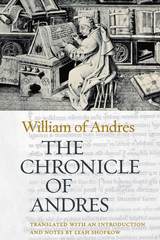 The Chronicle of Andres
Abbot William of Andres
Catholic University of America Press, 2017 Translated with Notes and Commentary by Leah Shopkow
In 1220 Abbot William of Andres, a monastery halfway between Calais and Saint-Omer on the busy road from London to Paris, sat down to write an ambitious cartulary-chronicle for his monastery. Although his work was unfinished at his death, William’s account is an unpolished gem of medieval historical writing. The Chronicle of Andres details the history of his monastery from its foundation in the late eleventh century through the early part of 1234. Early in the thirteenth century, the monks decided to sue for their freedom and appointed William as their protector. His travels took him on a 4000 km, four-year journey, during which he was befriended by Innocent III, among others, and where he learned to negotiate the labyrinthine system of the ecclesiastical courts. Upon winning his case, he was elected abbot on his return to Andres and enjoyed a flourishing career thereafter. A decade after his victory, William decided to put the history of the monastery on a firm footing.
This text not only offers insight into the practice of medieval canon law (from the perspective of a well-informed man with legal training), but also ecclesiastical policies, the dynamics of life within a monastery, ethnicity and linguistic diversity, and rural life. It is comparable in its frankness to Jocelin of Brakelord’s Chronicle of Bury. Because William drew on the historiographic tradition of the Southern Low Countries, his text also offers some insights into this subject, thus composing a broad picture of the medieval European monastic world.
The Chronicle of Le Murate
Sister Giustina Niccolini
Iter Press, 2011 The Chronicle of Le Murate, completed by Sister Giustina Niccolini in 1598, is one of a small number of surviving documents that presents a nun’s own interpretation and synthesis of historical events. It recounts the roughly two hundred-year history of Florence’s largest convent, which attracted boarders, nuns and patrons from Italy’s elite families. The manuscript provides a rare view of life behind the enclosure walls and of nuns interaction with the world outside. The messy vitality of this account is an important pendant to the more formal and predictable convent chronicles that dominate the genre.
Chronicle of My Worst Years
Tino Villanueva
Northwestern University Press, 1994 As a Chicano writer working in Spanish, Tino Villanueva explores experience in the tongue that was the first European language spoken in and around his Texas homeland. Villanueva voices complex and compelling historical, literary, and cultural questions as impassioned personal utterances, investing this collection with intimacy and seriousness. His eloquent, elegant work portrays American realities absent from mainstream poetry.
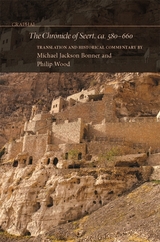 The Chronicle of Seert, ca. 580–660
Michael Jackson Bonner and Philip Wood
Harvard University Press The Chronicle of Seert, a Middle Arabic history written in the late tenth or eleventh century, draws on earlier Syriac sources from the Church of the East dating back to the sixth and seventh centuries and is the richest repository of these earlier materials. It is a monument to a literature that is now mostly destroyed and an invaluable source for those studying Late Antique history, Eastern Christianity, and the medieval Christians who lived under Muslim rule.
This volume is the first English translation of the portion of the Chronicle covering the period from 580 to 660, narrating the constant wars fought between the Roman Empire and Sassanid Persia as well as the arrival of Muhammad and the Muslim armies that upended the Late Antique world. But the Chronicle also includes extensive accounts of the theological controversies that beset the Church of the East, the monasteries and holy men that dotted the landscape, and political events within the Roman Empire from an outside perspective. Preserving a remnant of a lost, yet influential, history, the Chronicle allows us to see adaptations to a genre that was created in a Christian Roman Empire.
|
|
